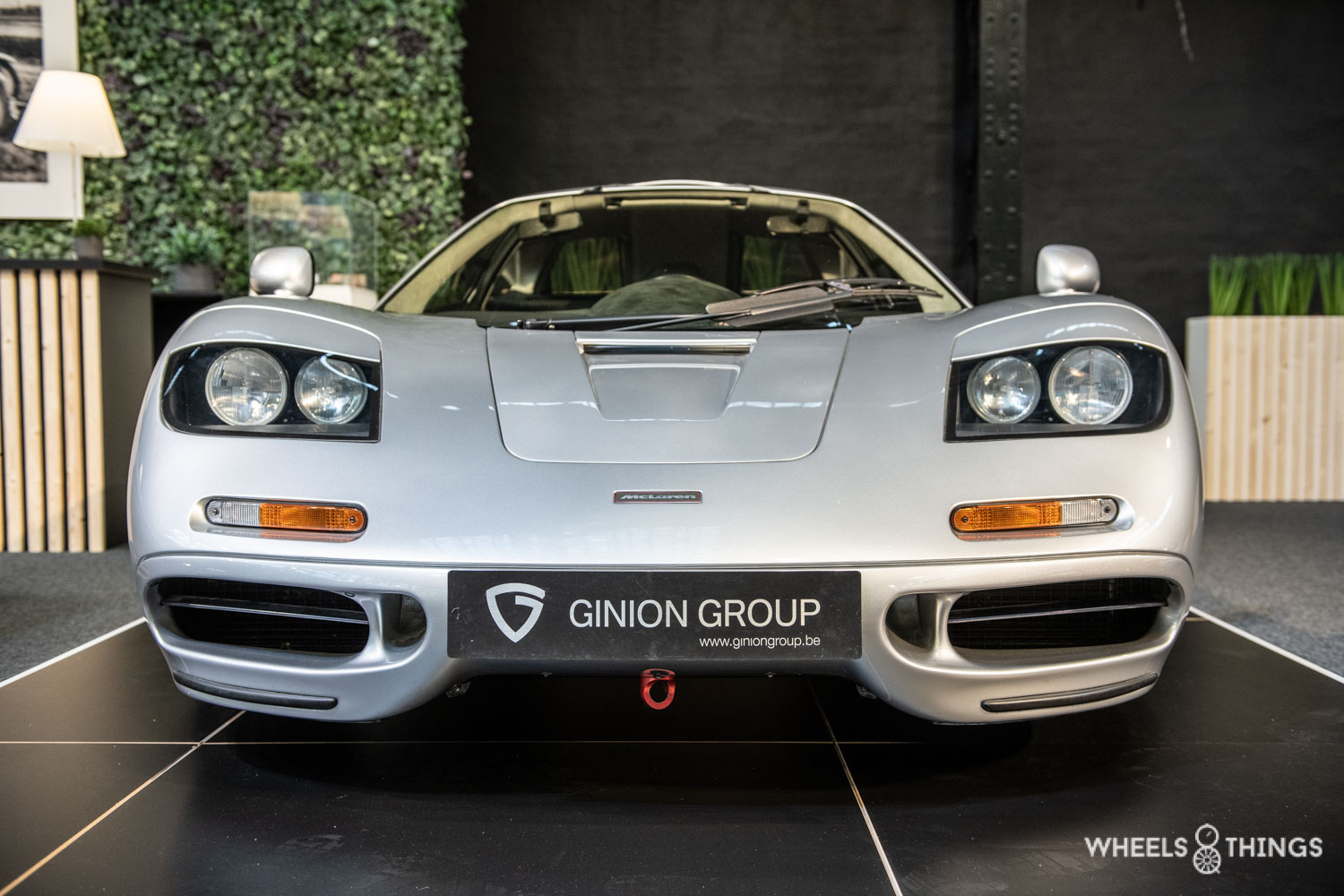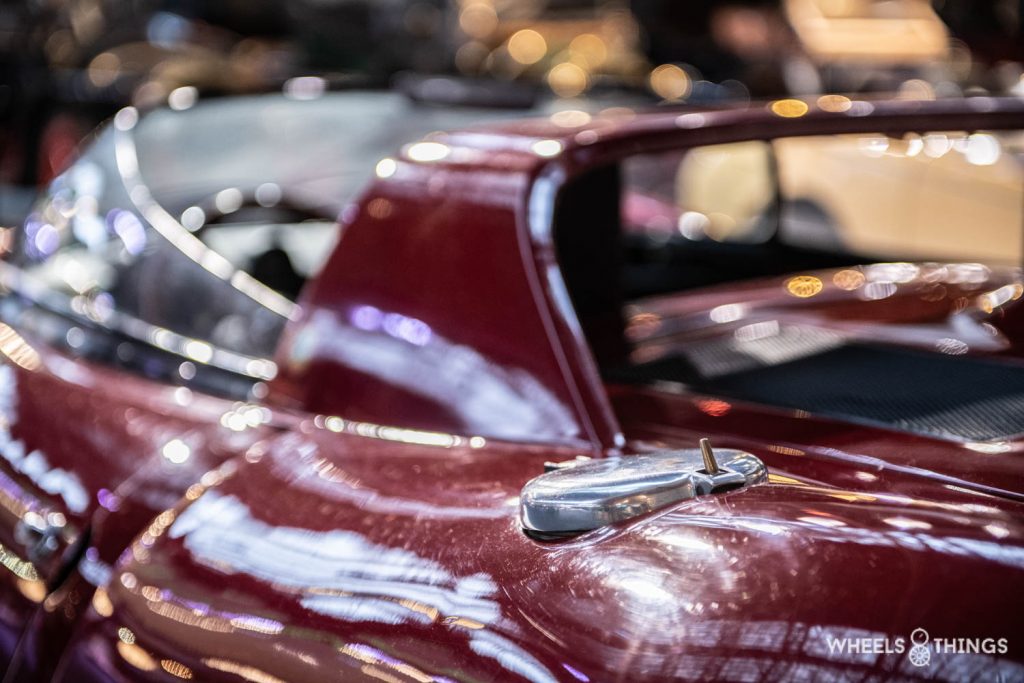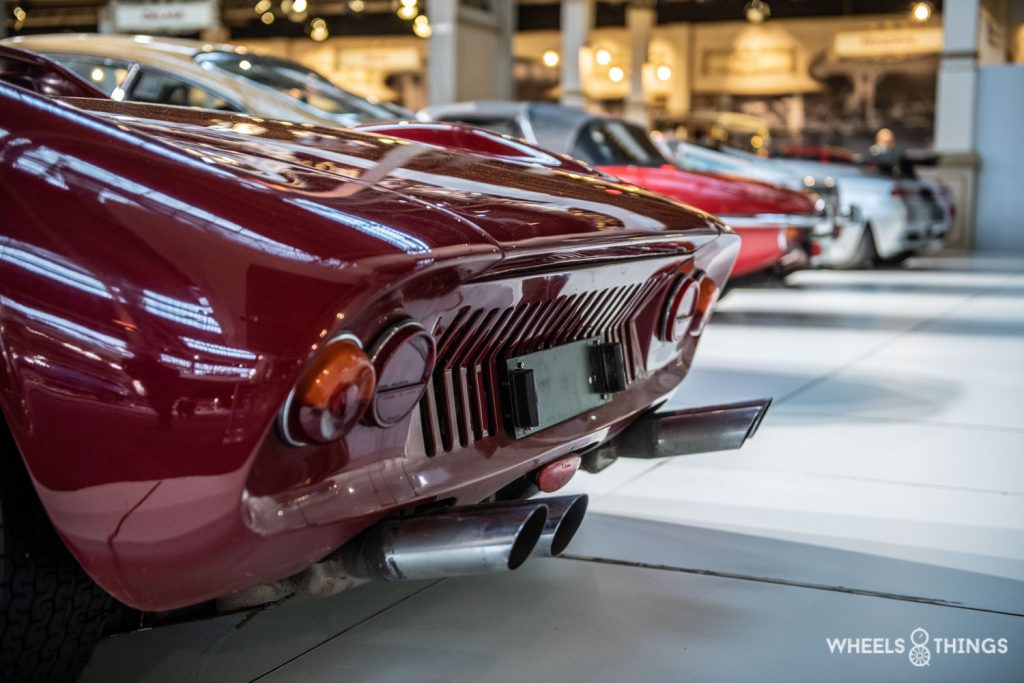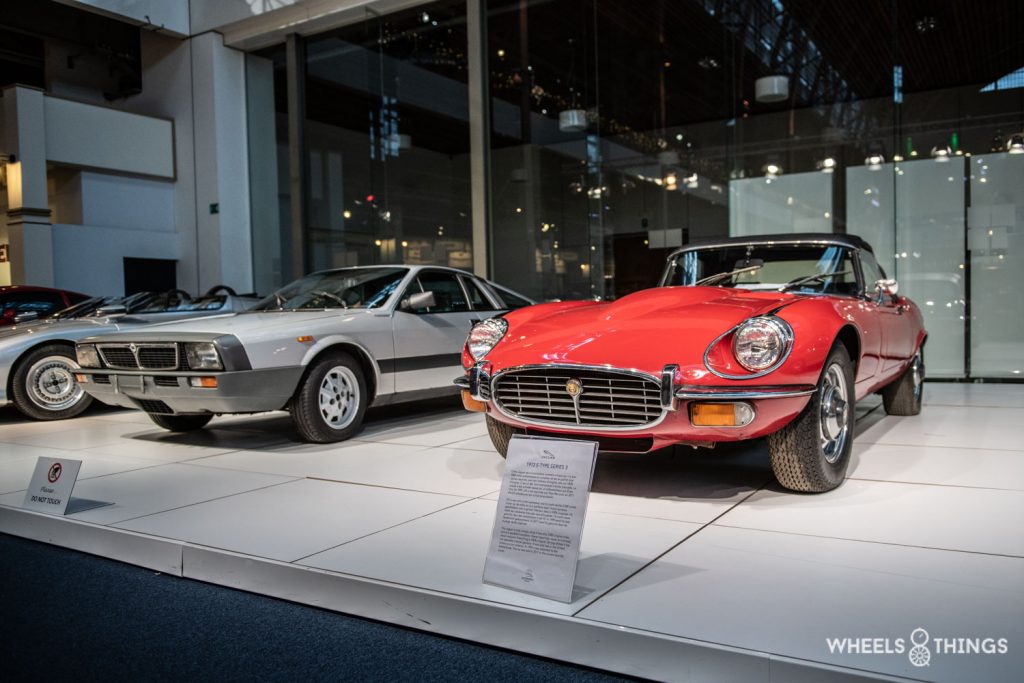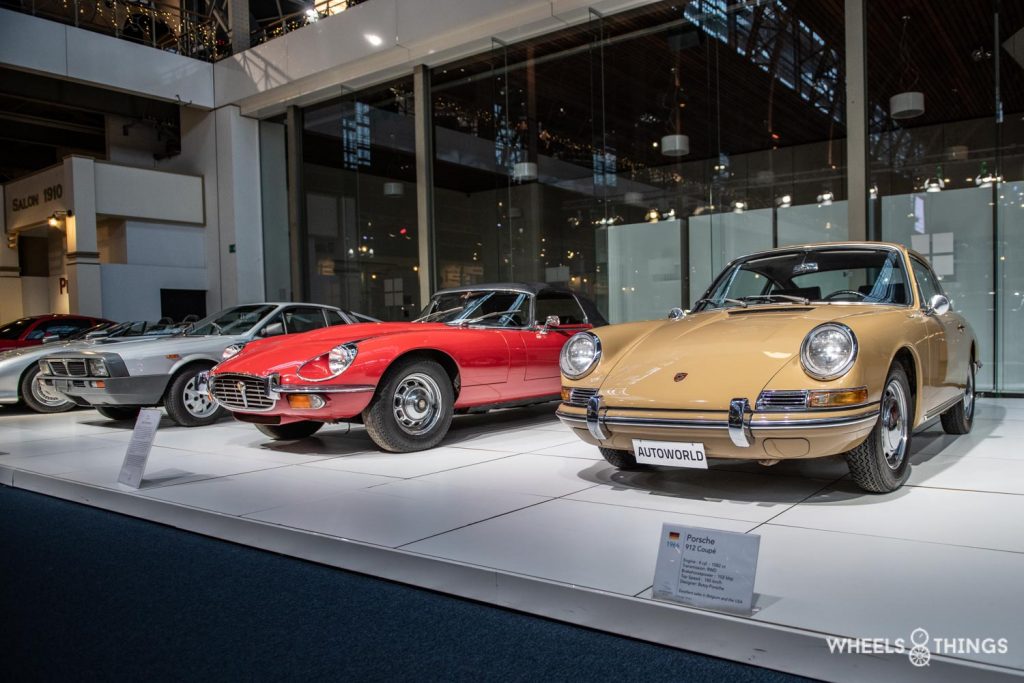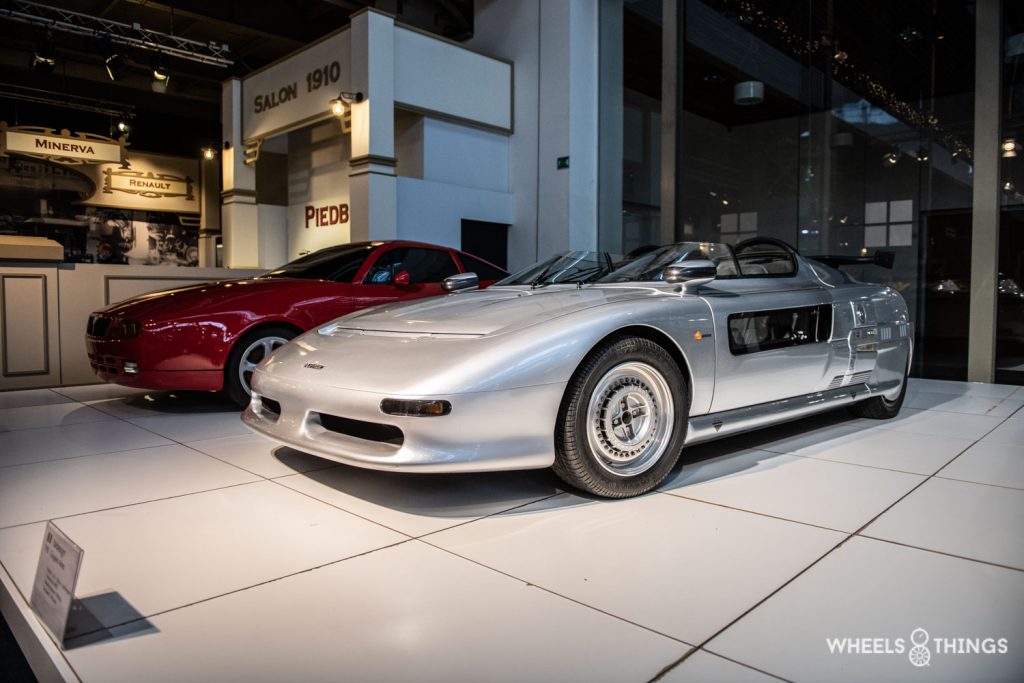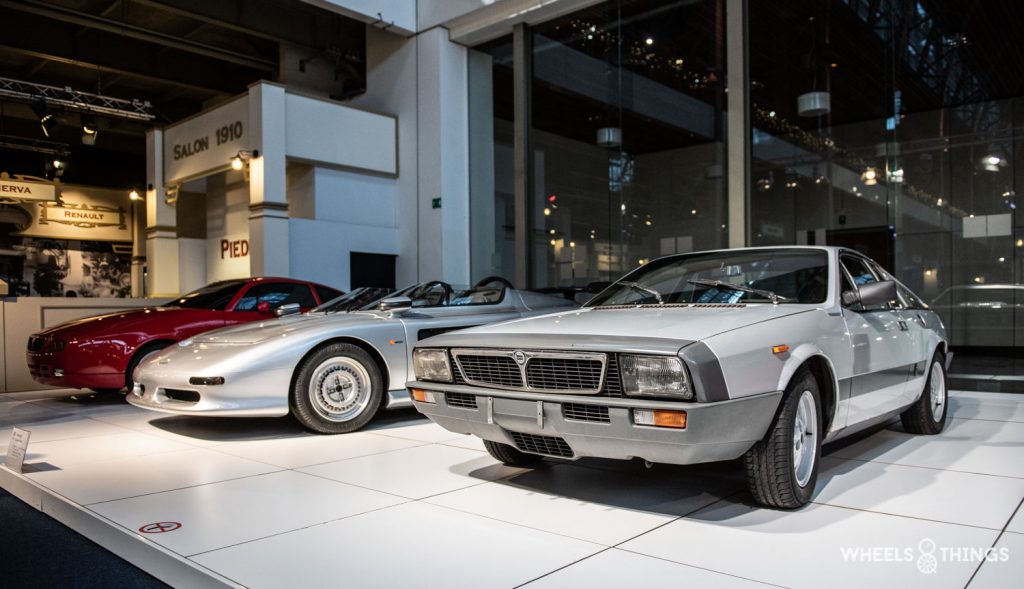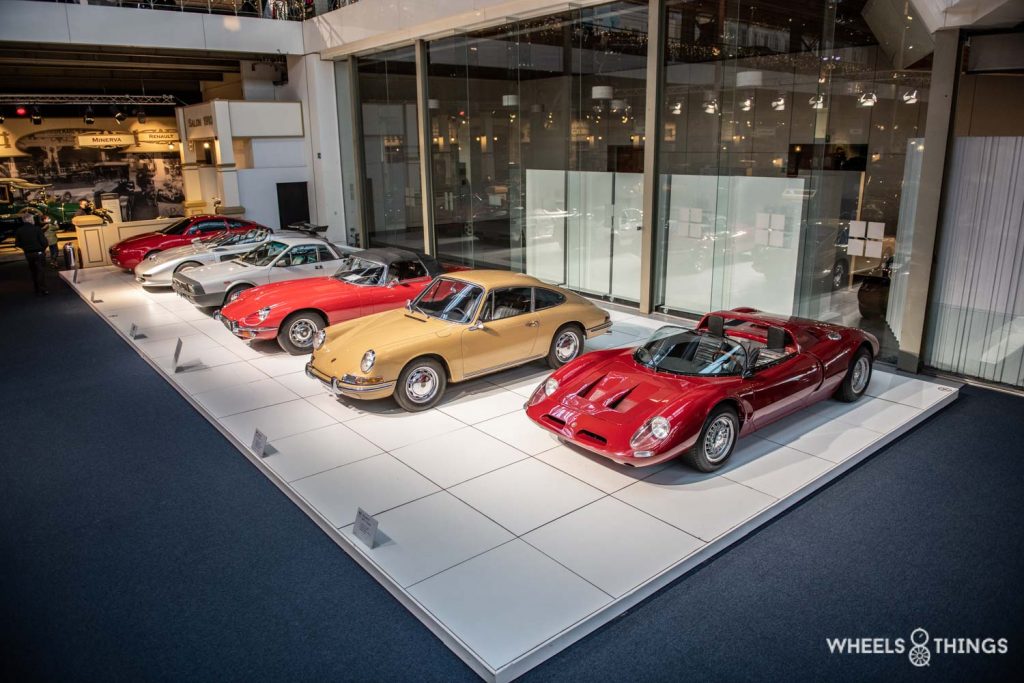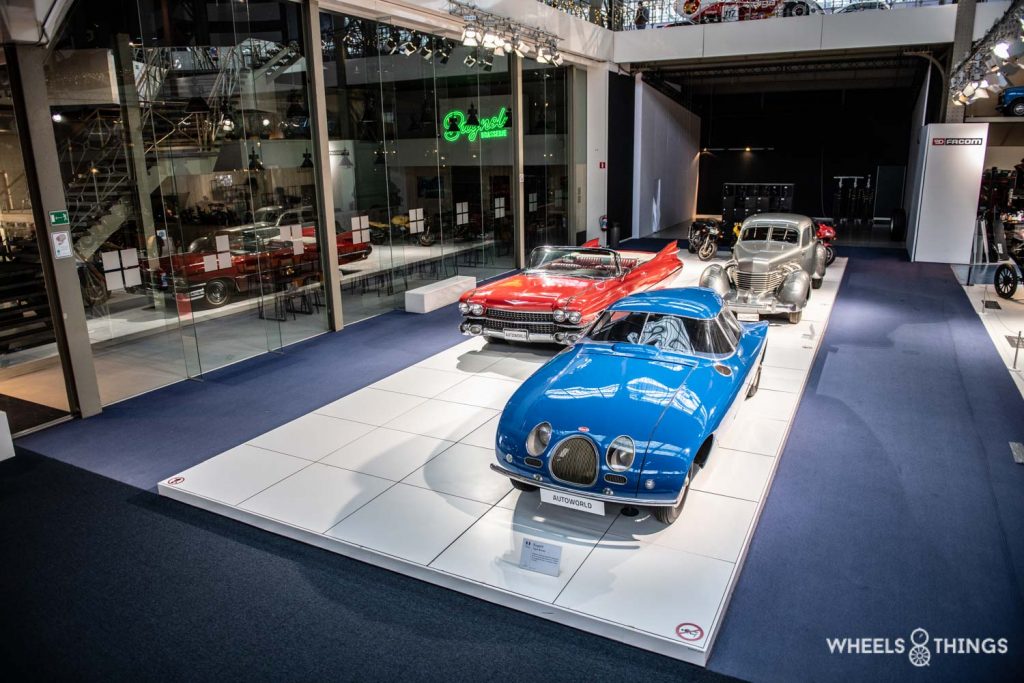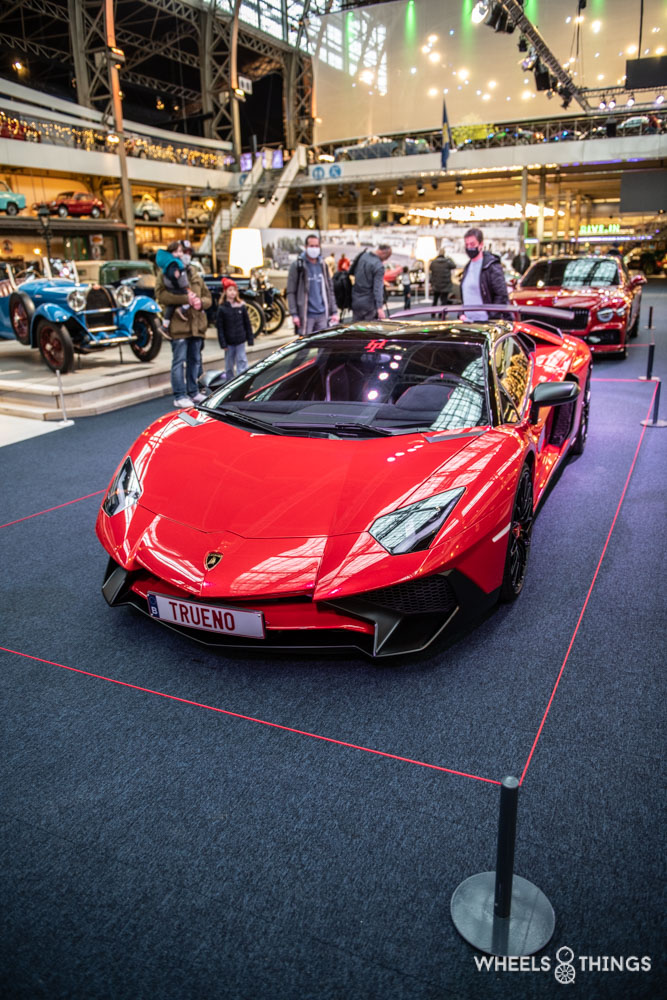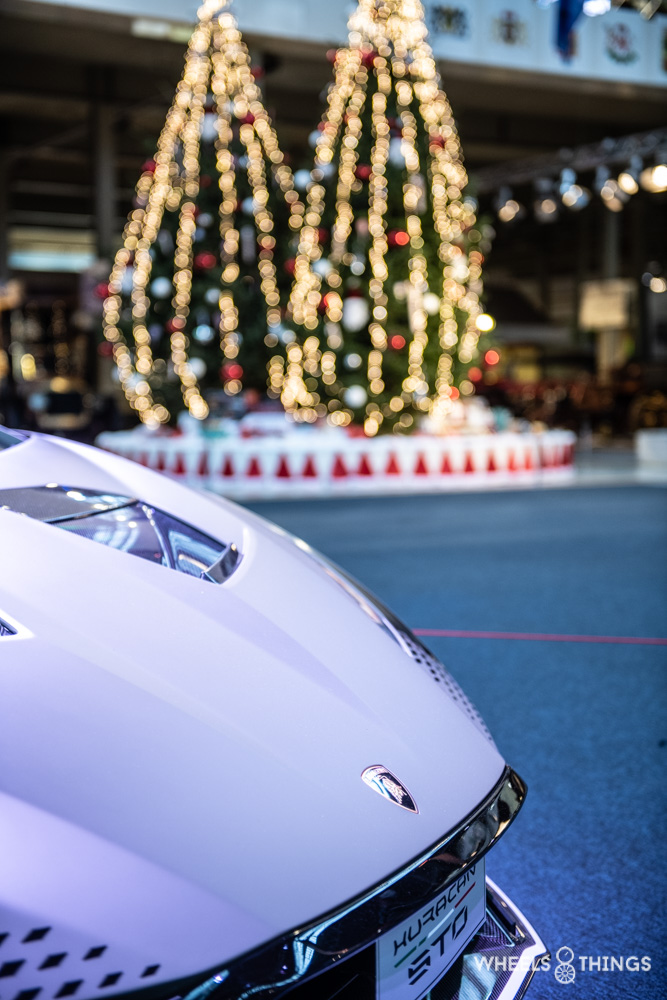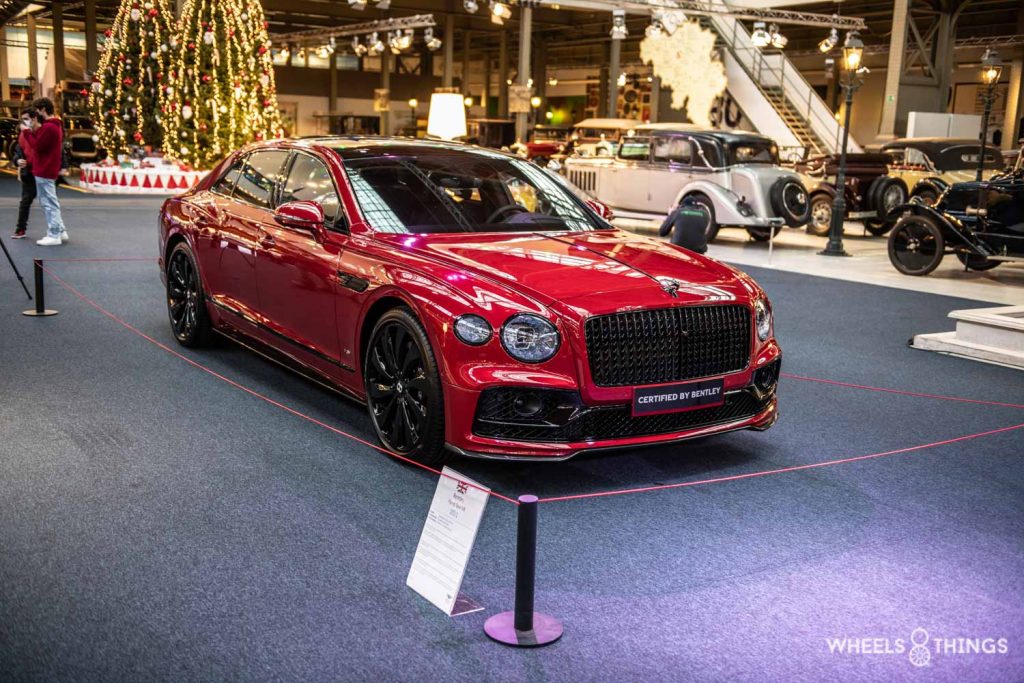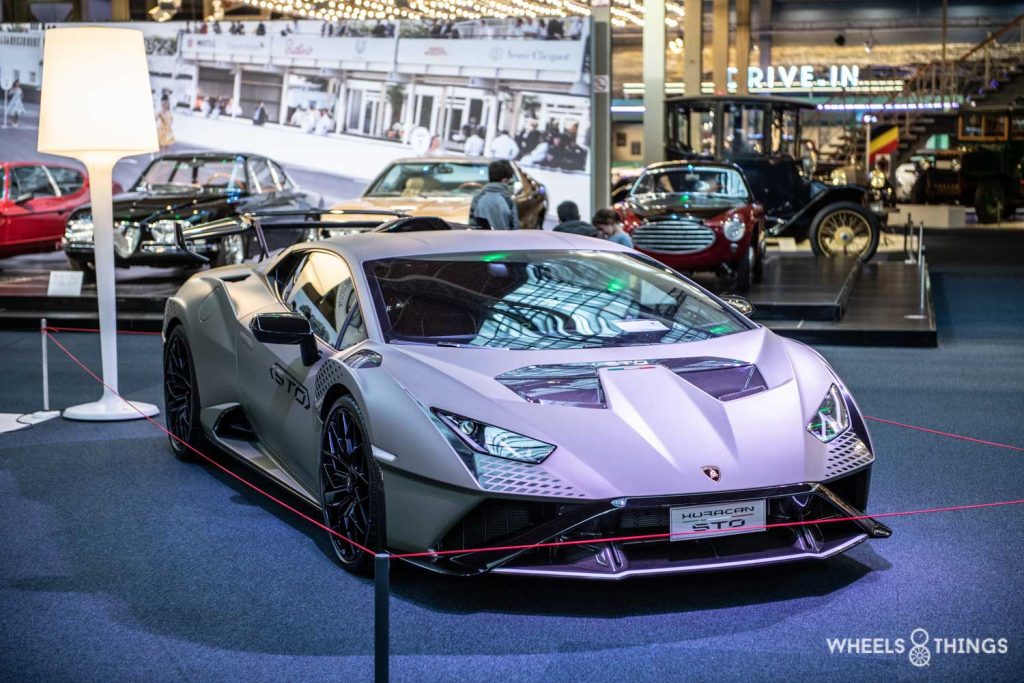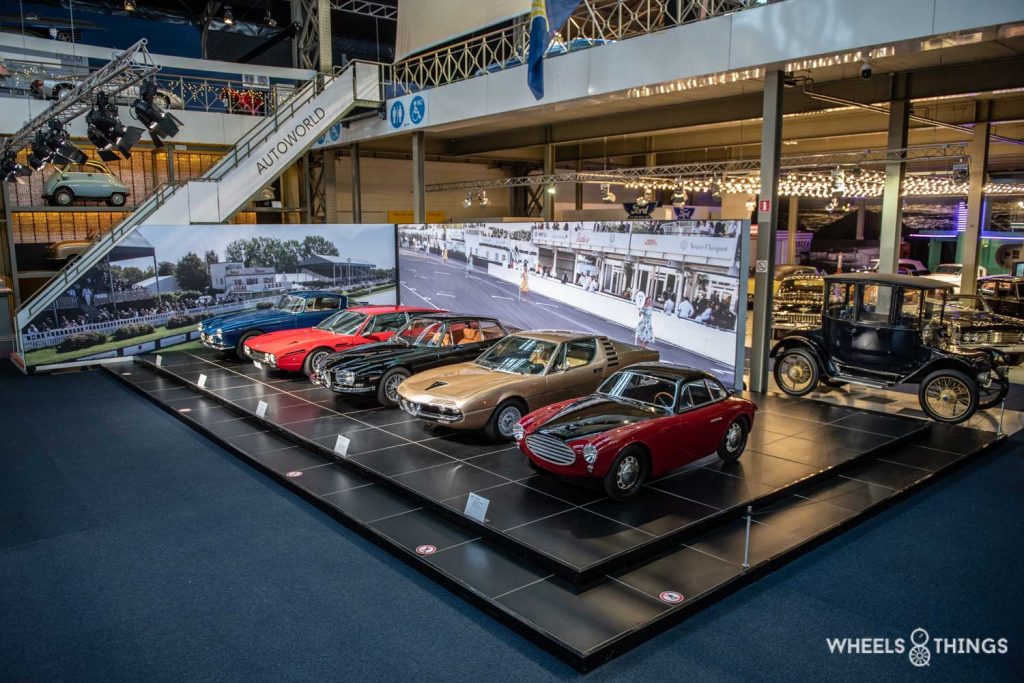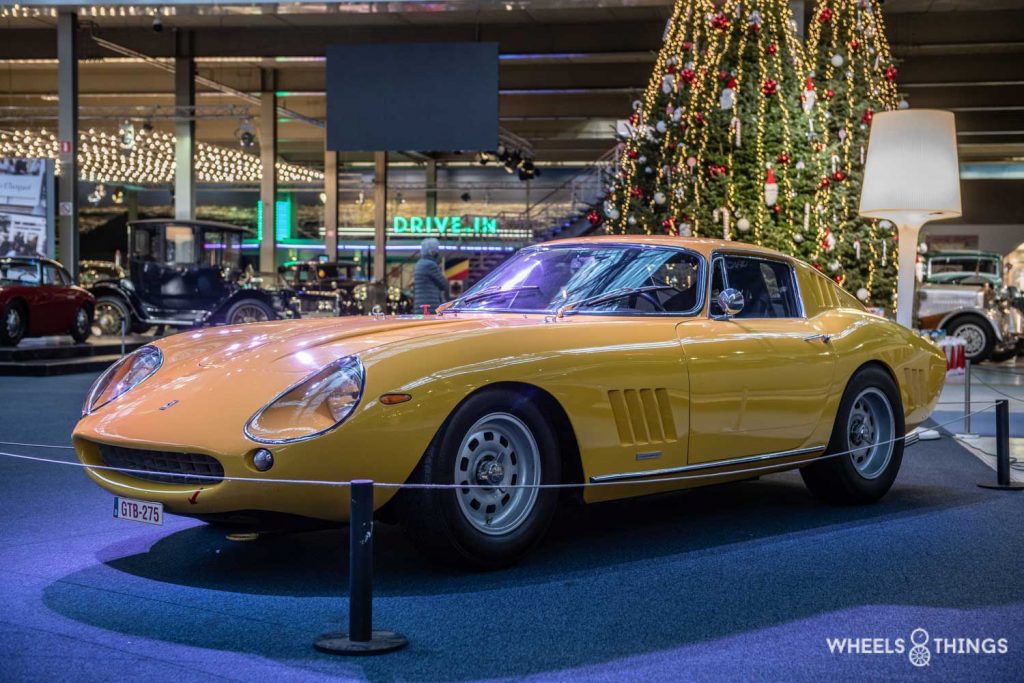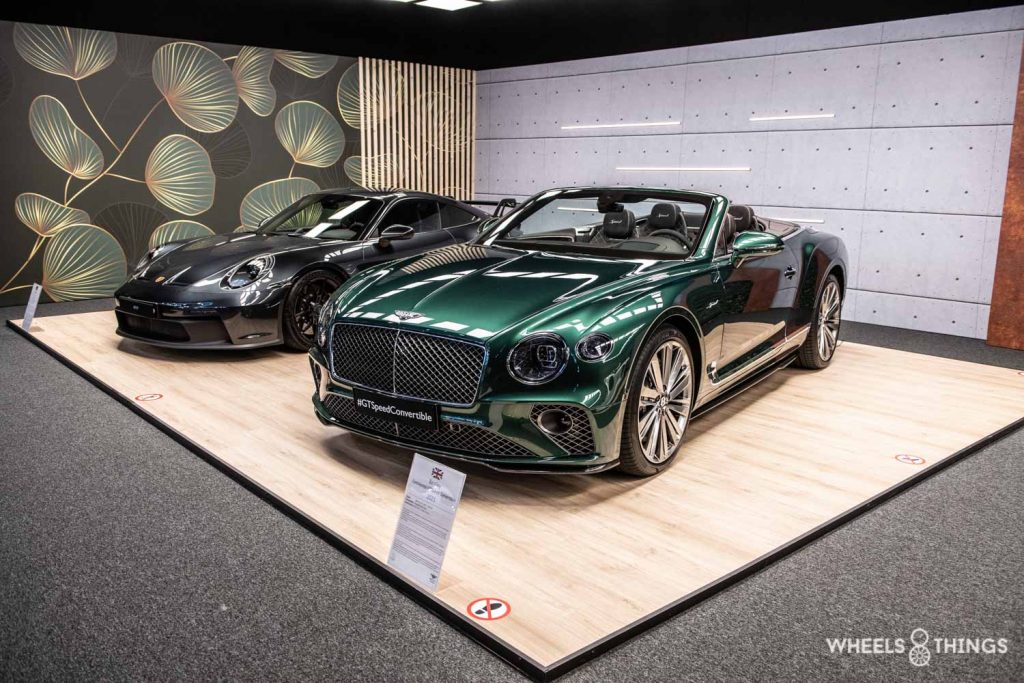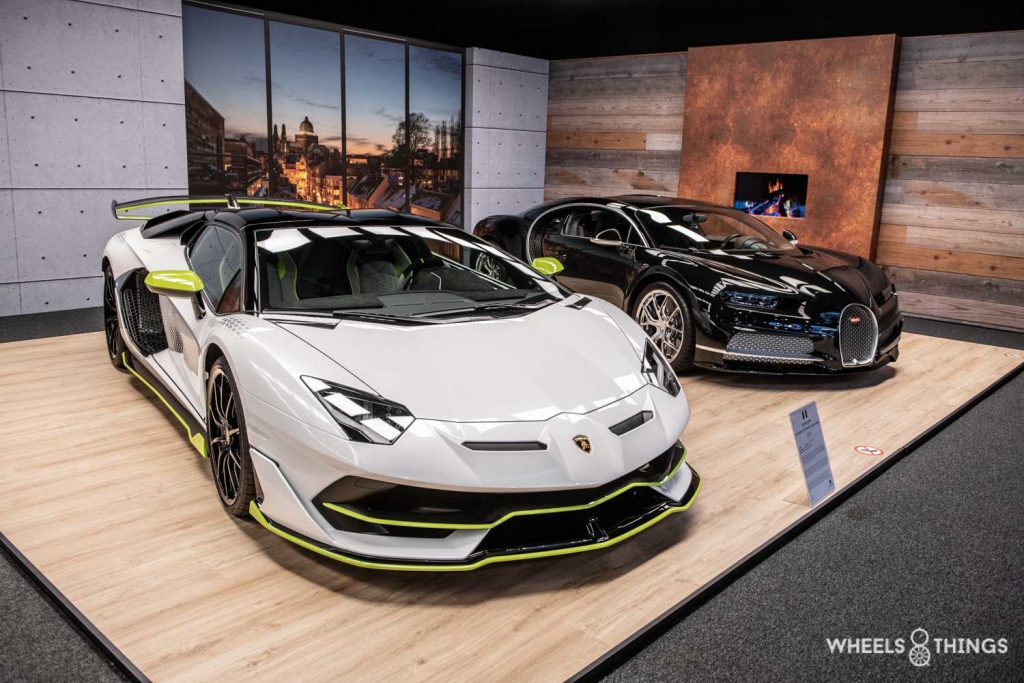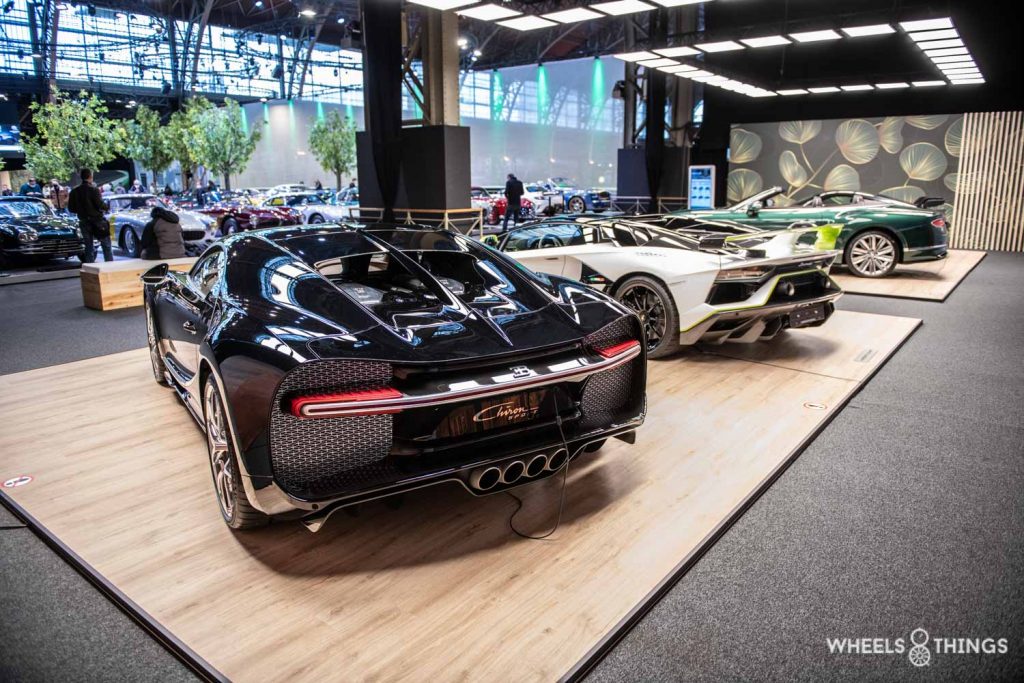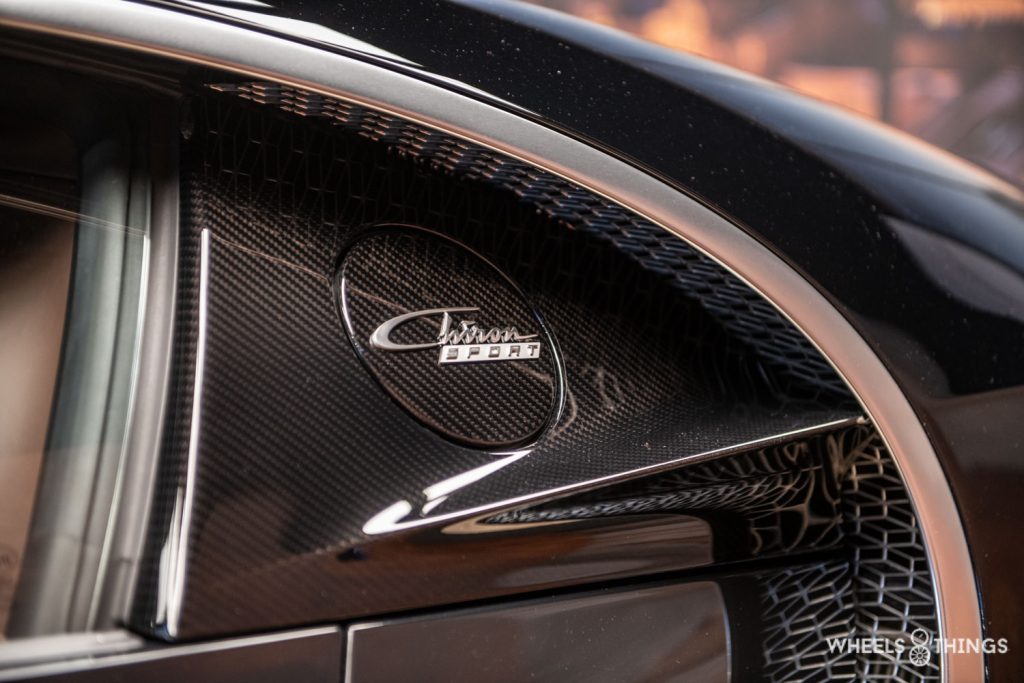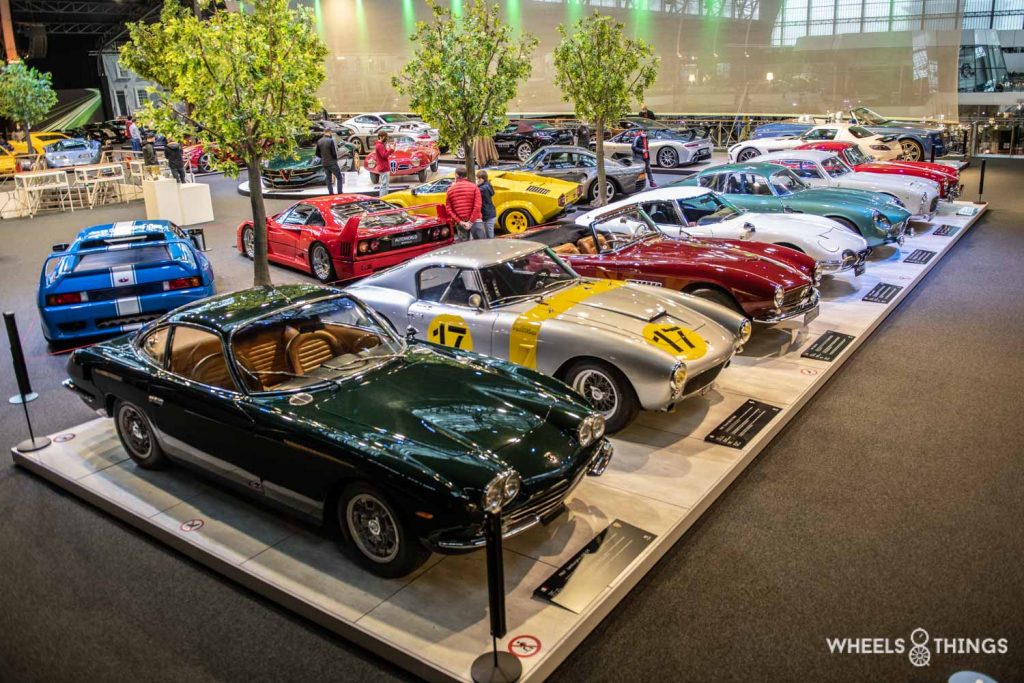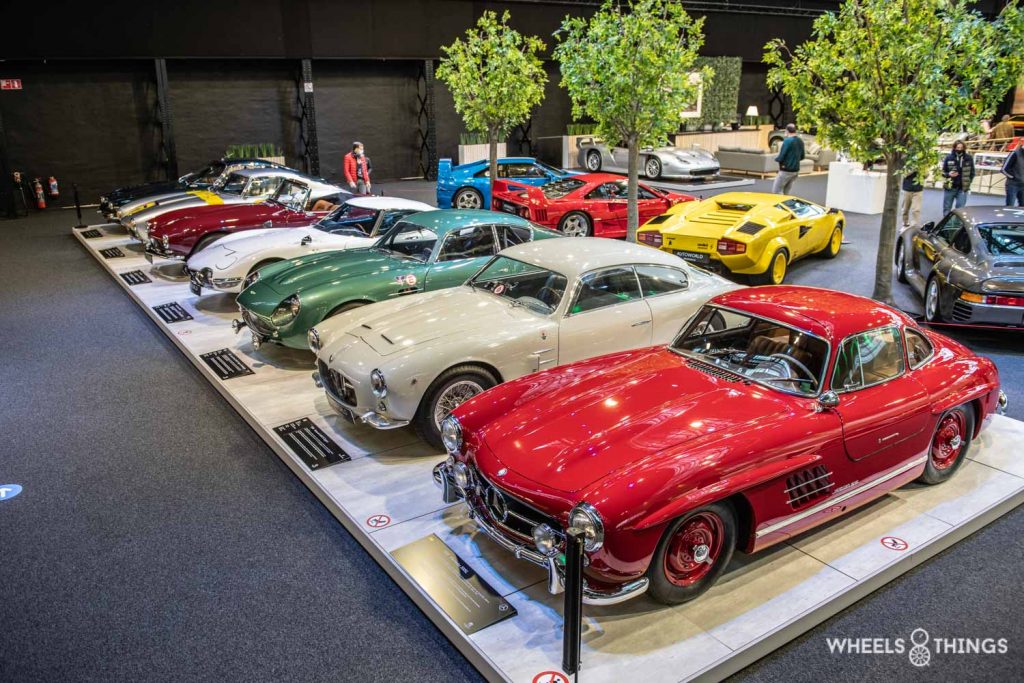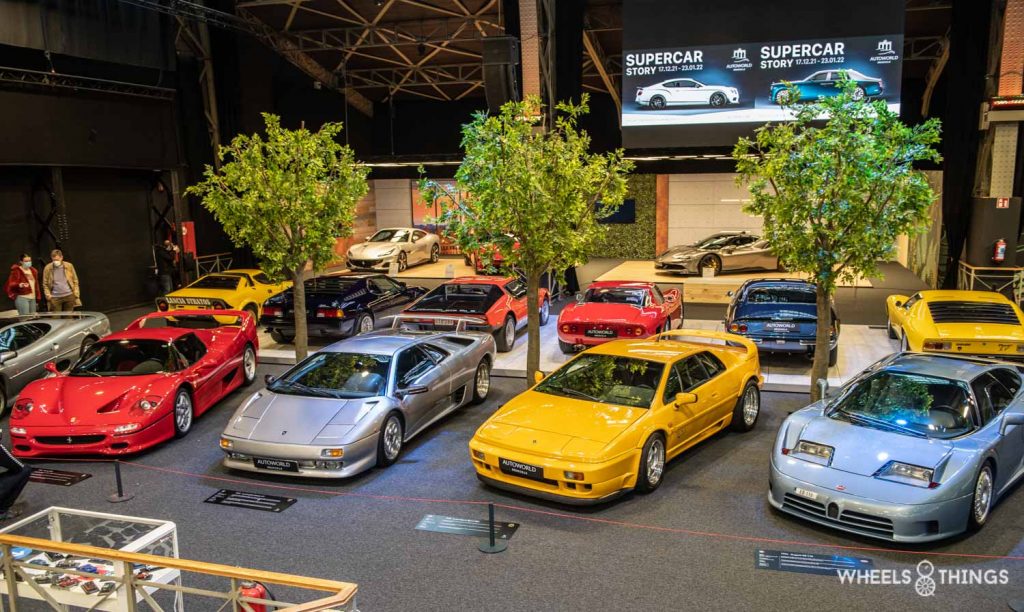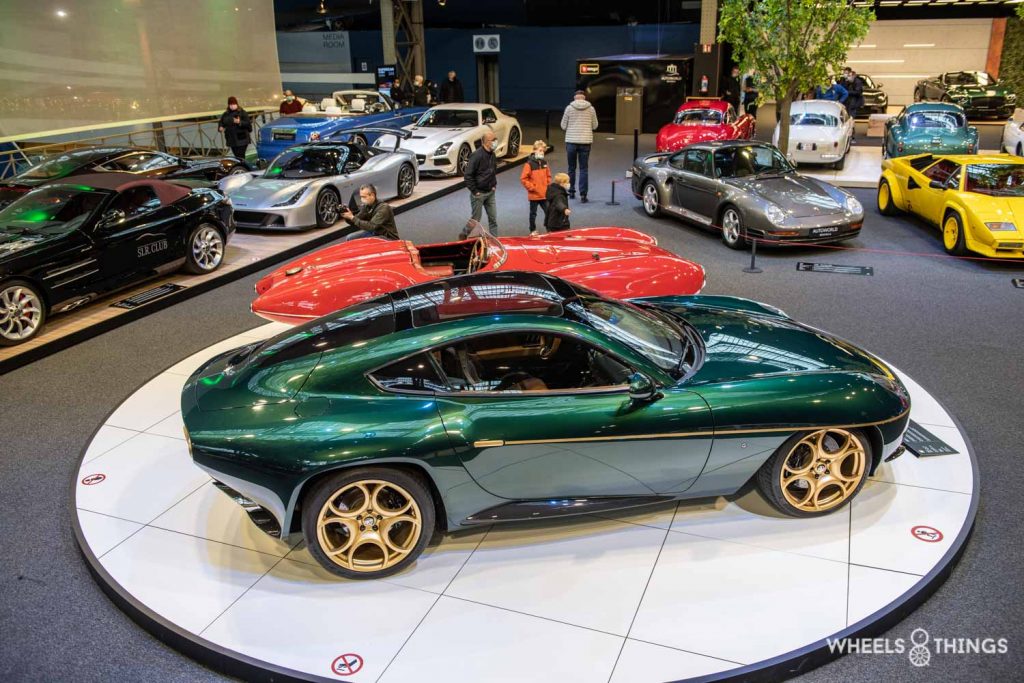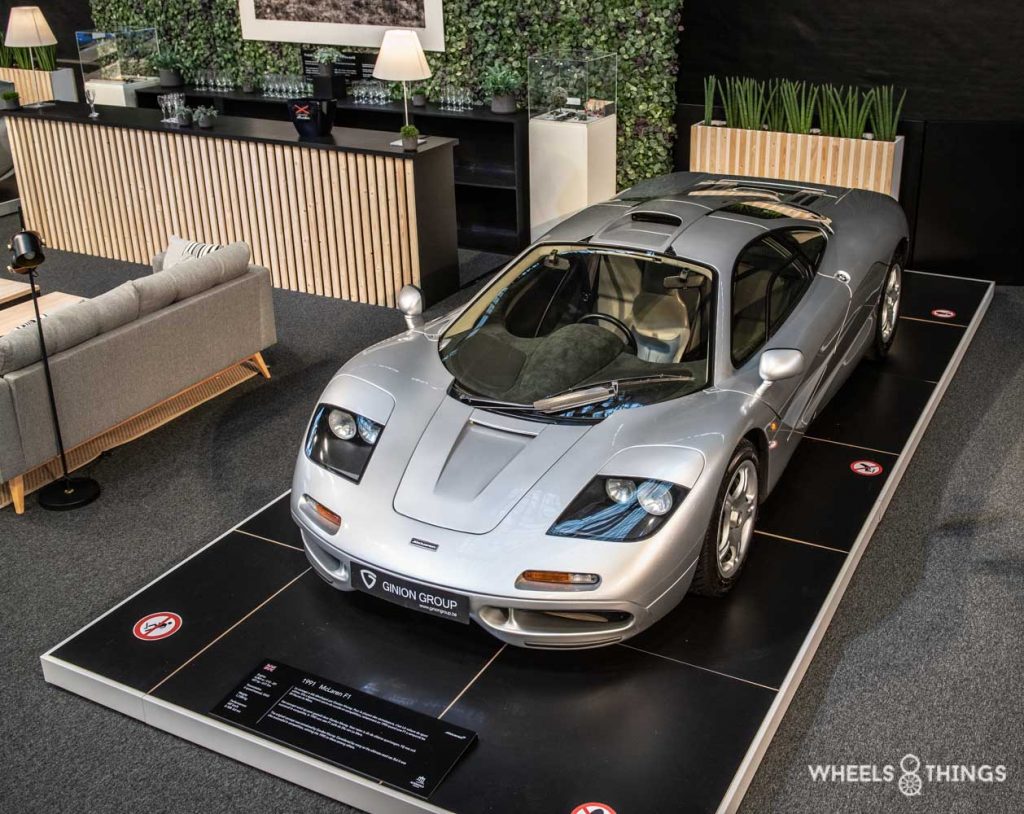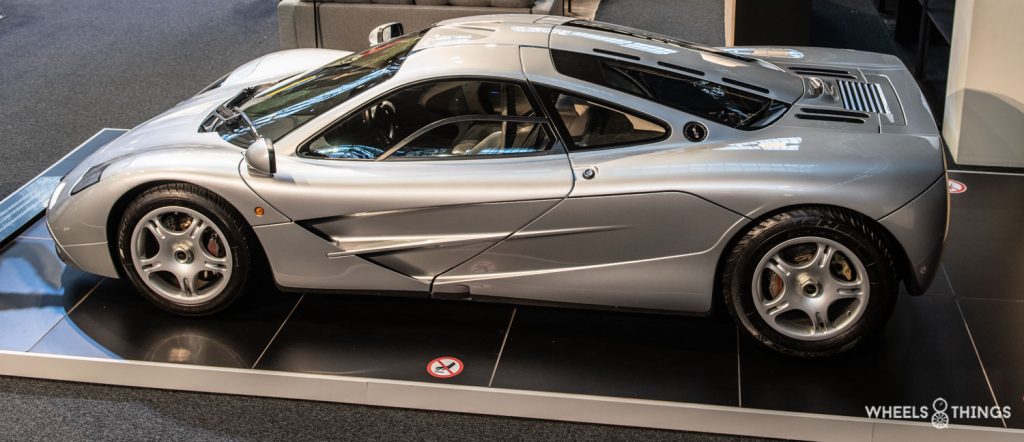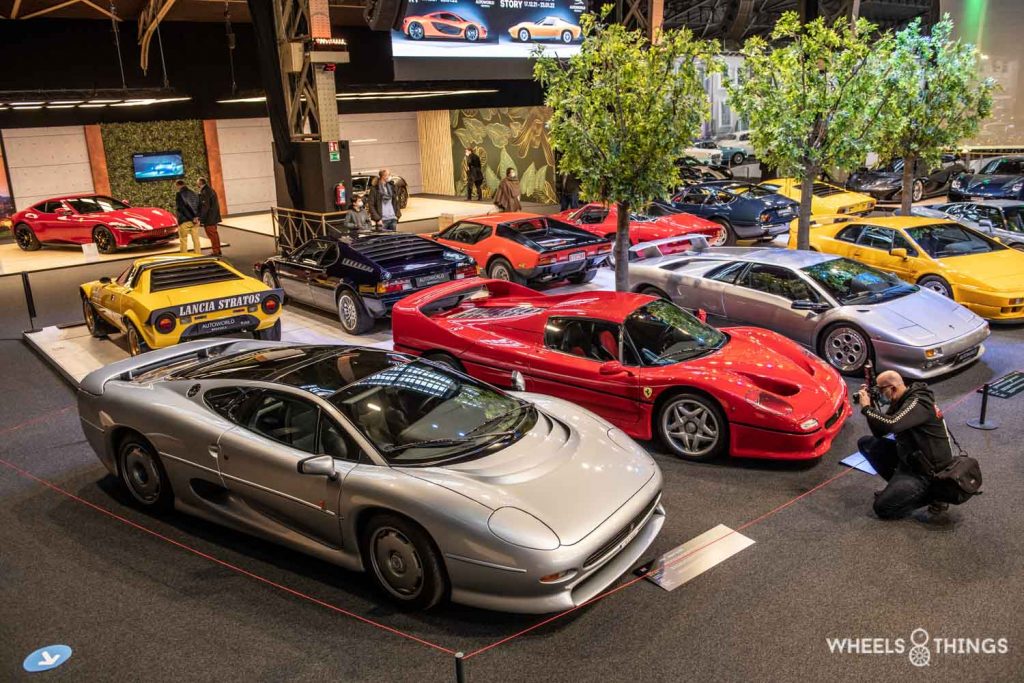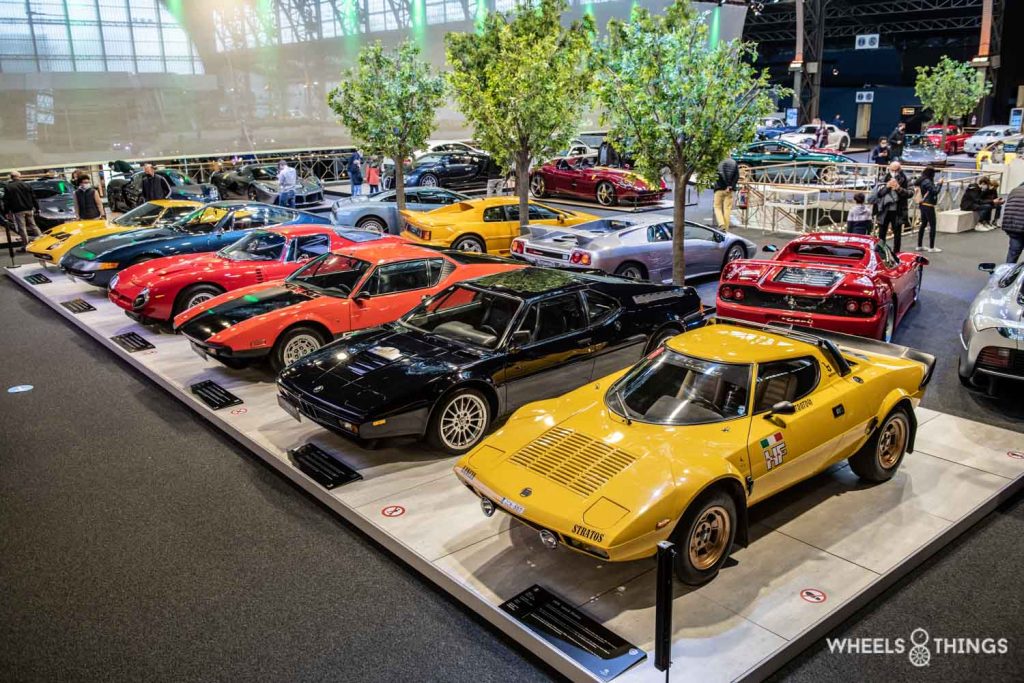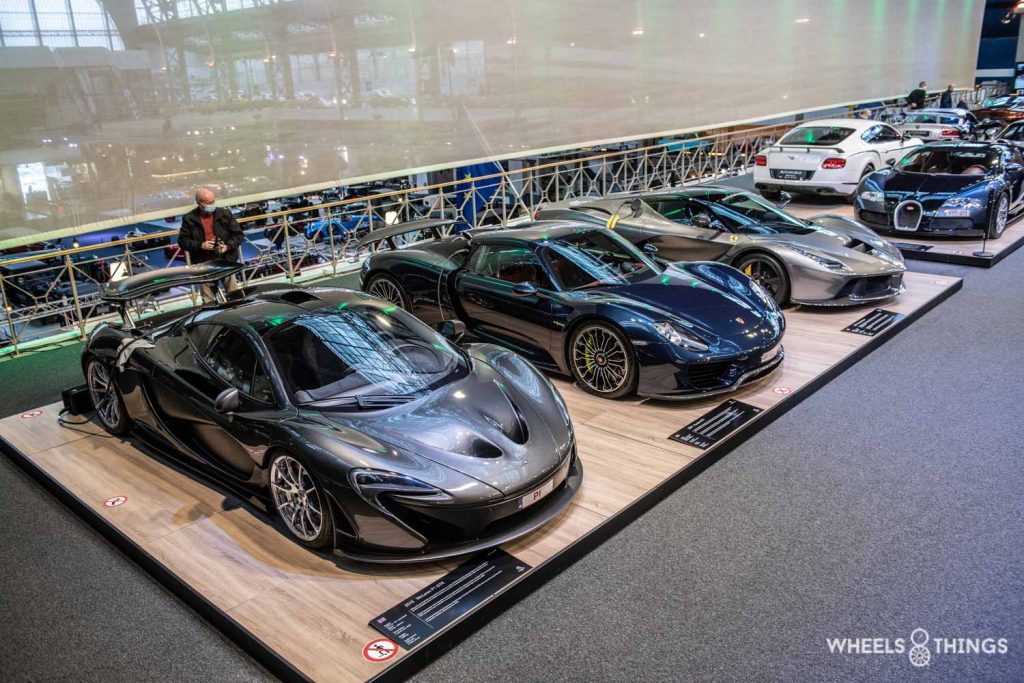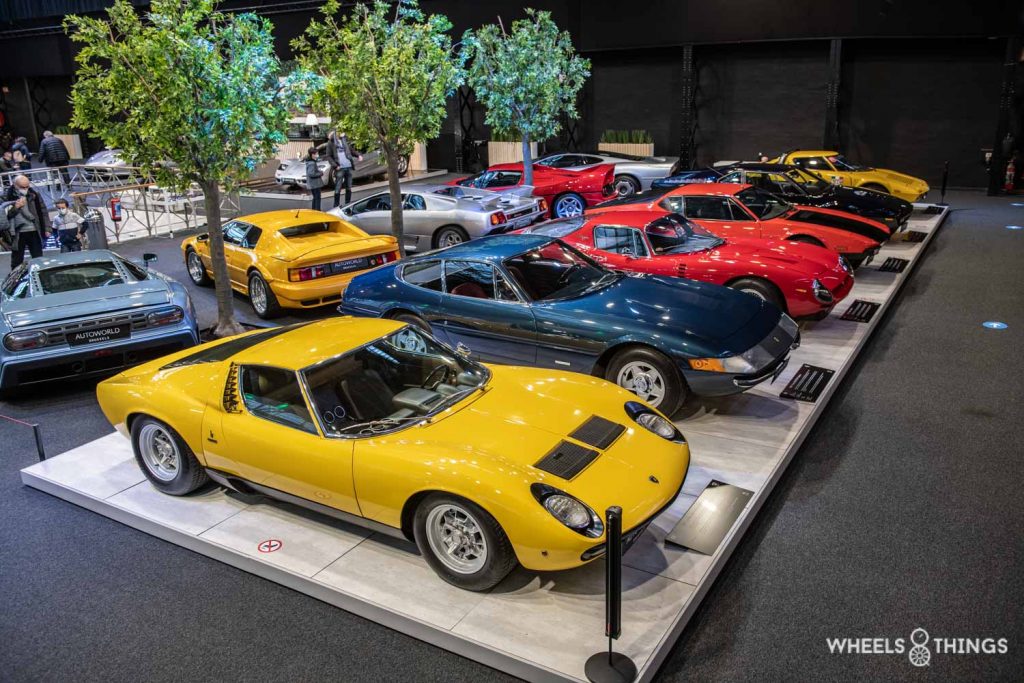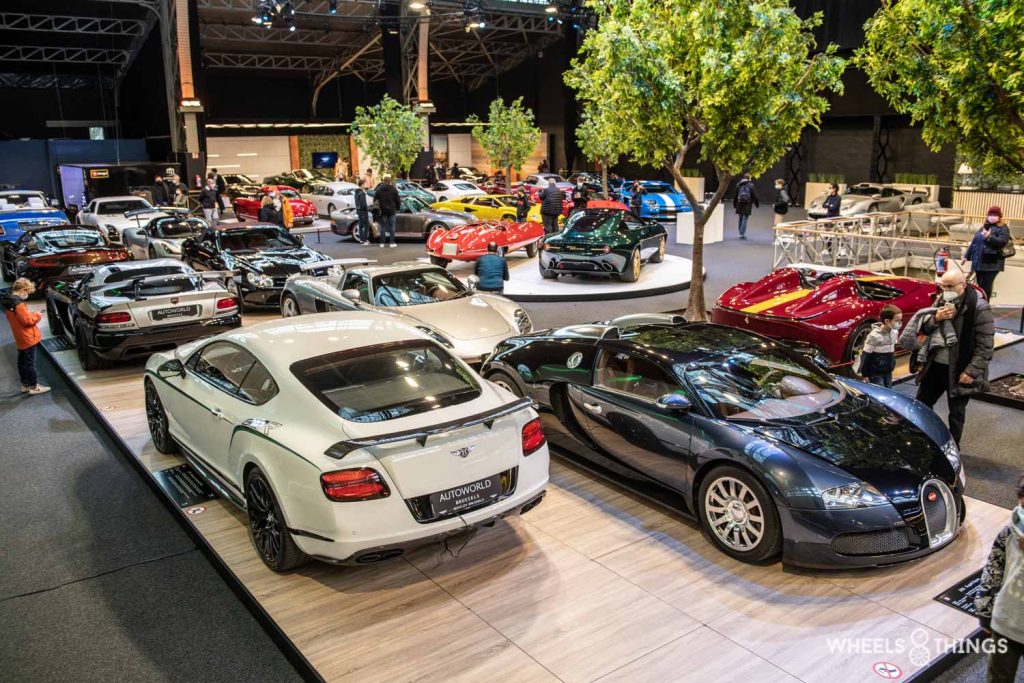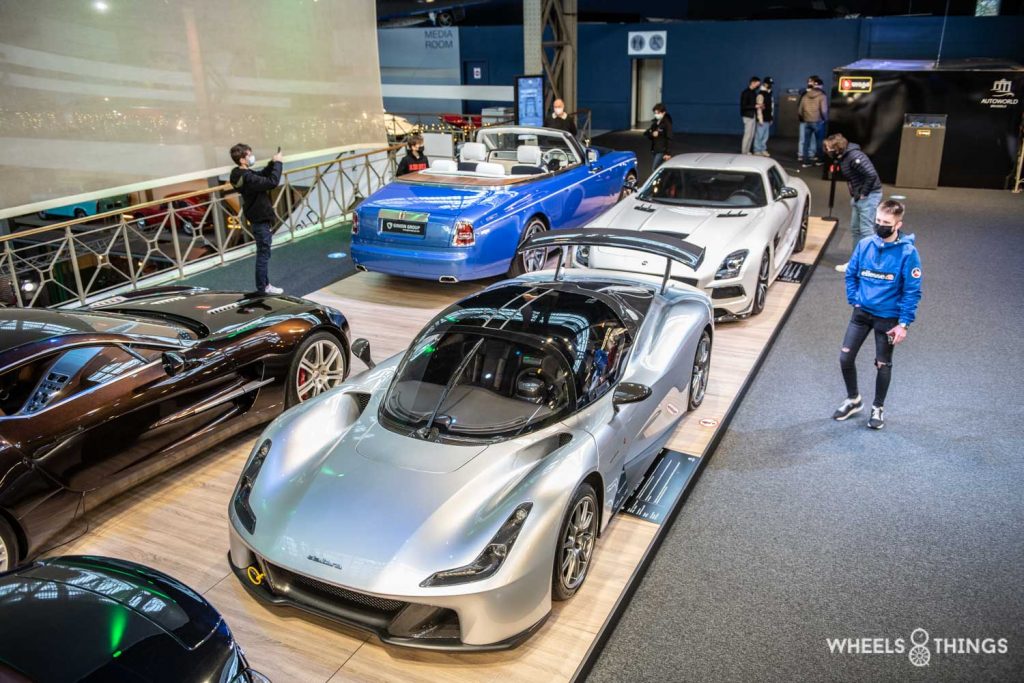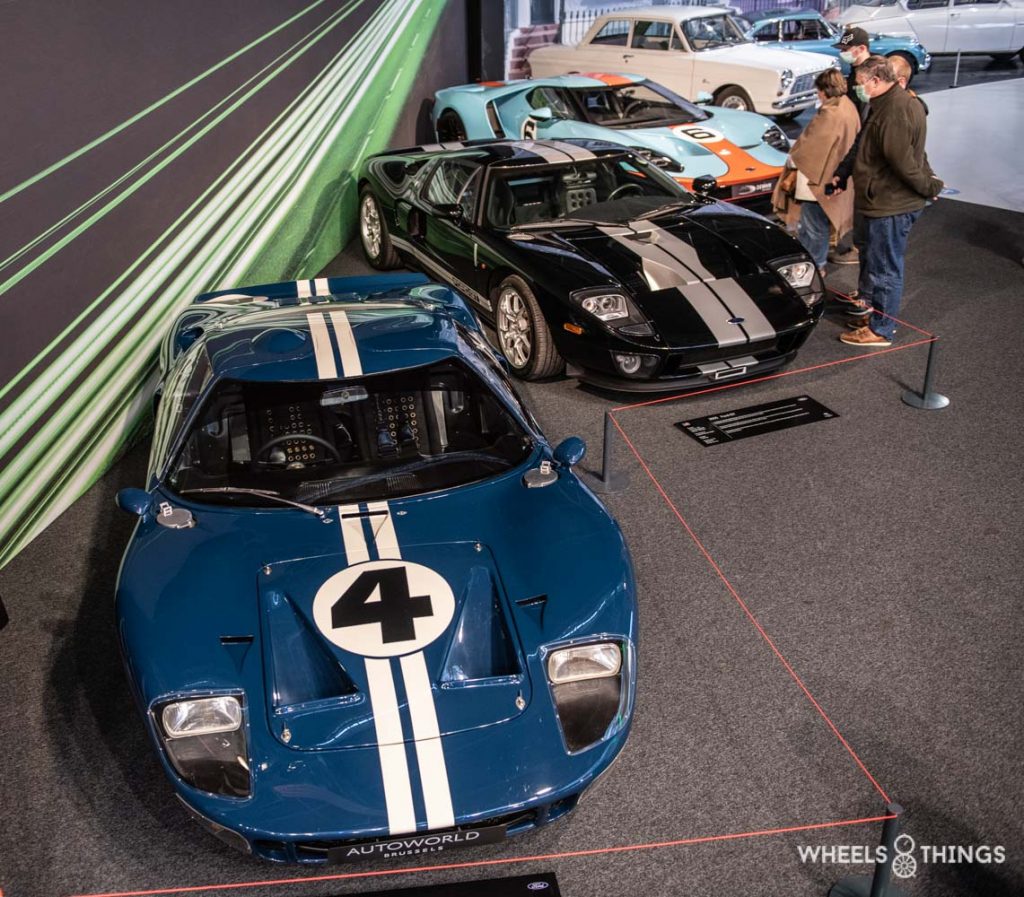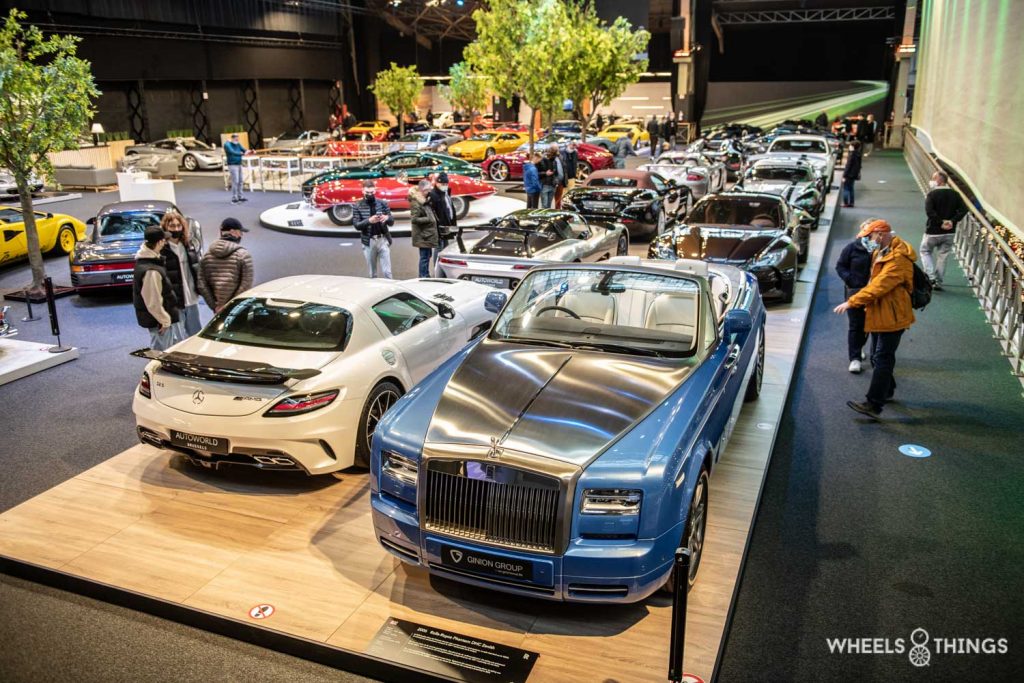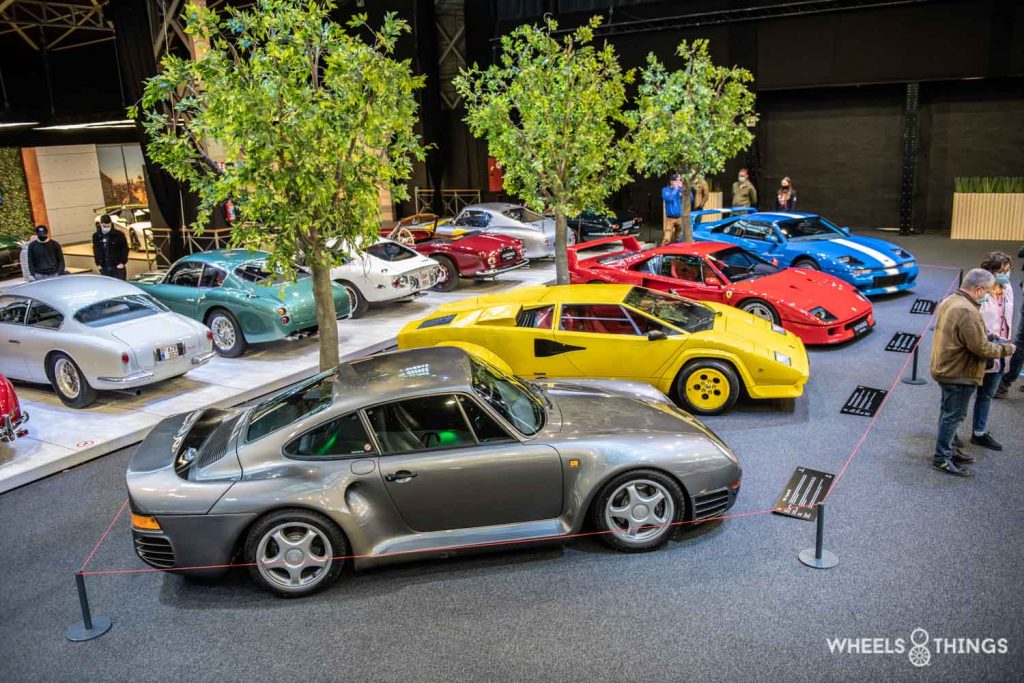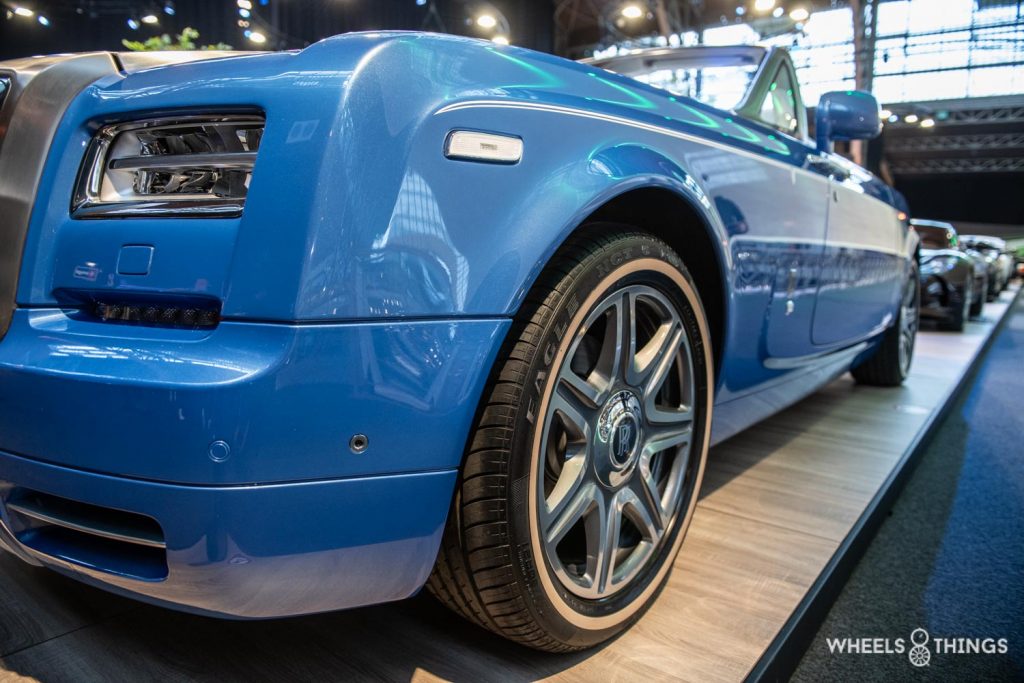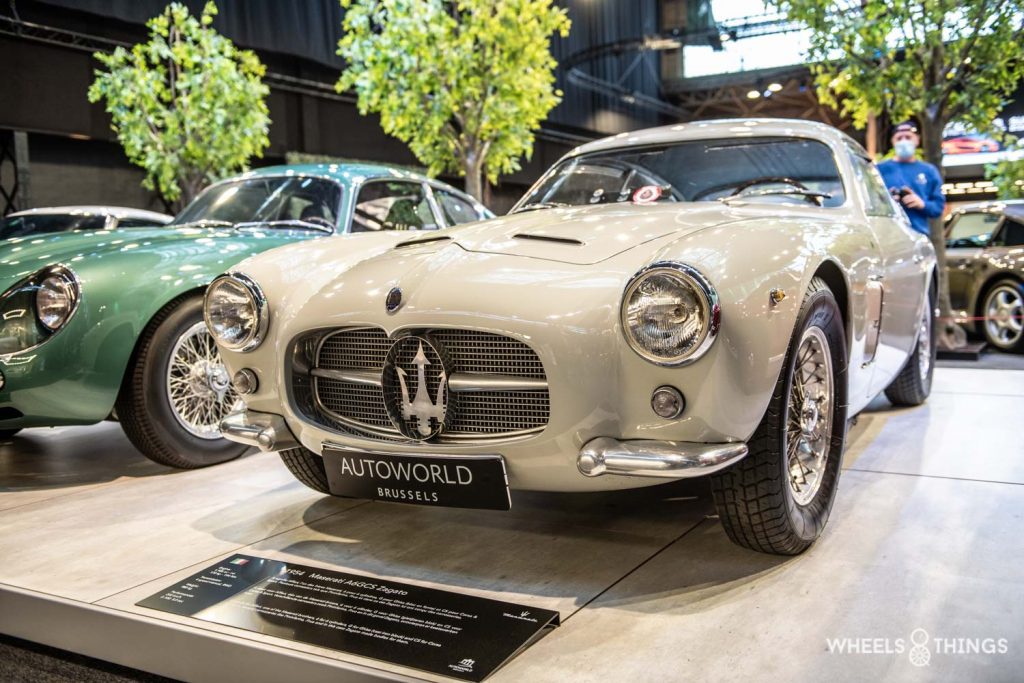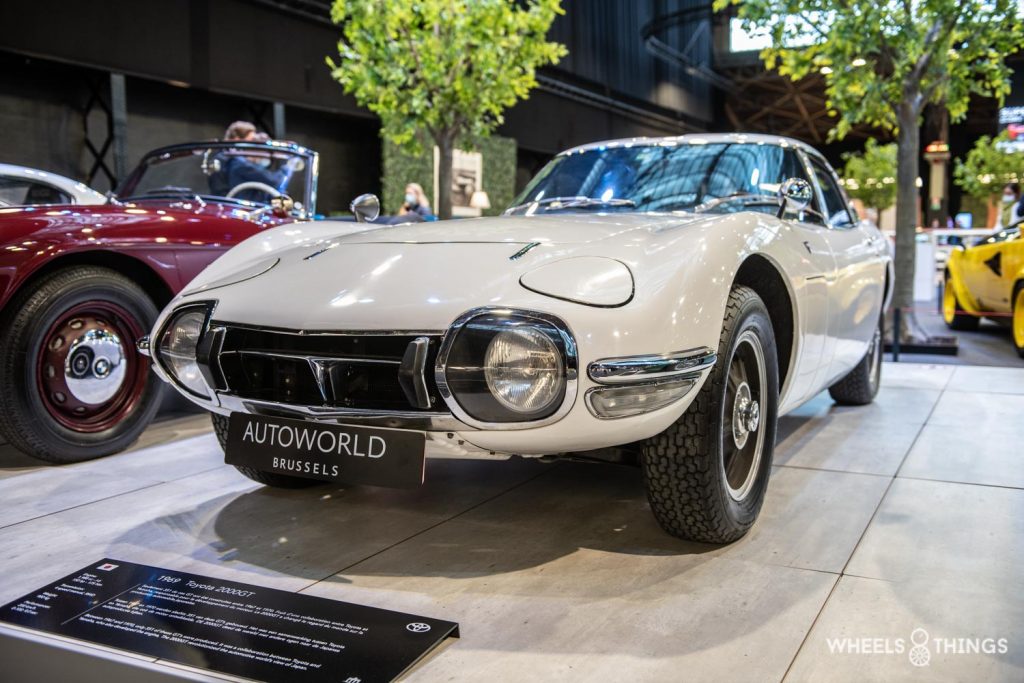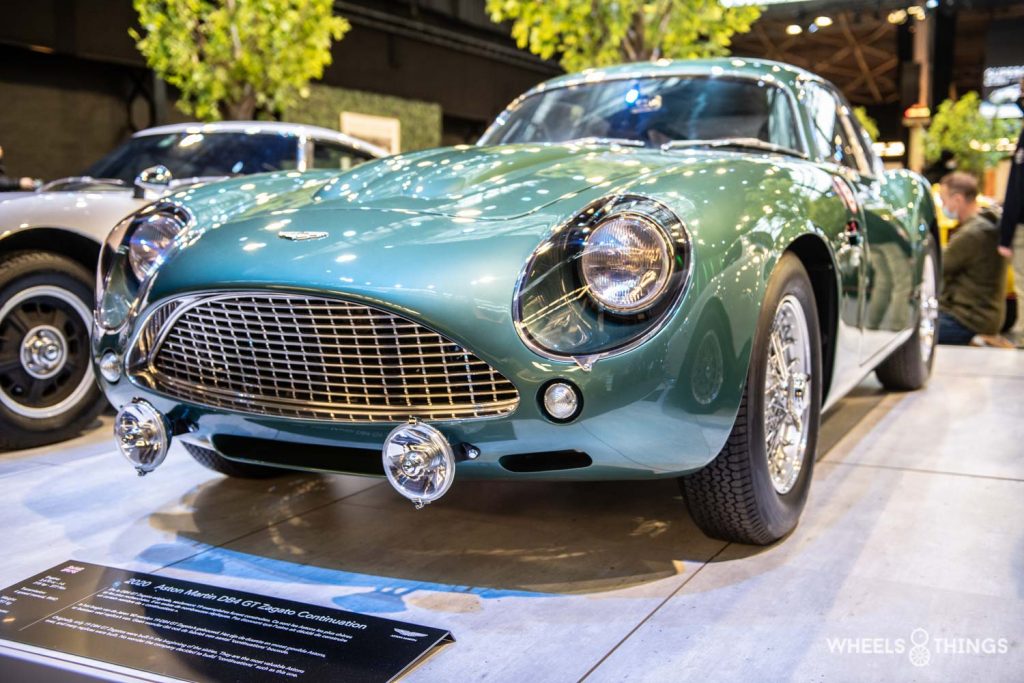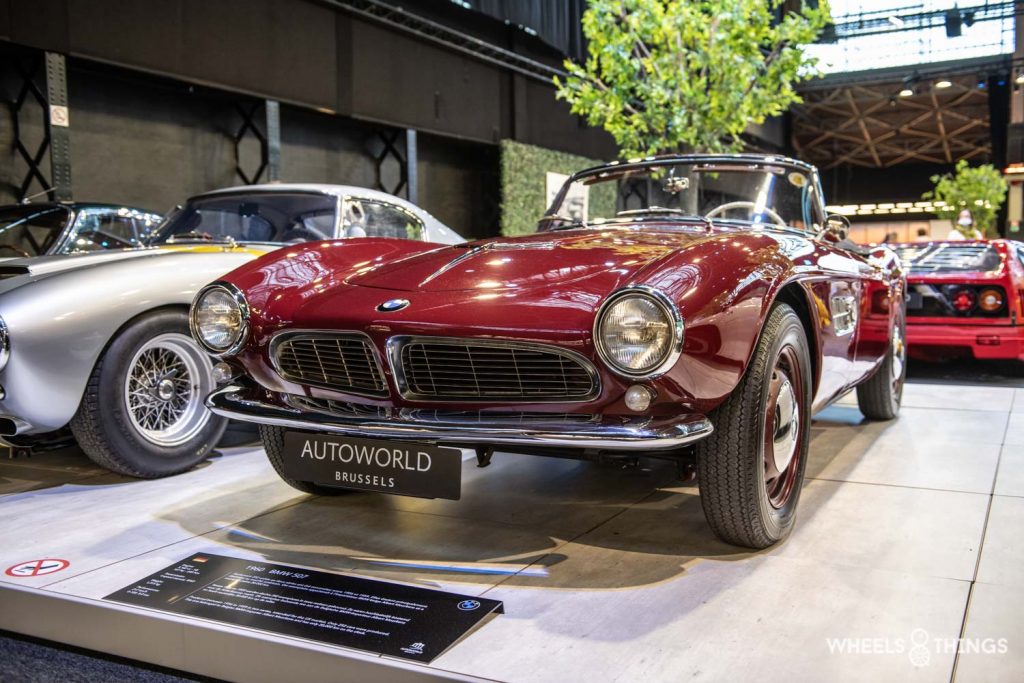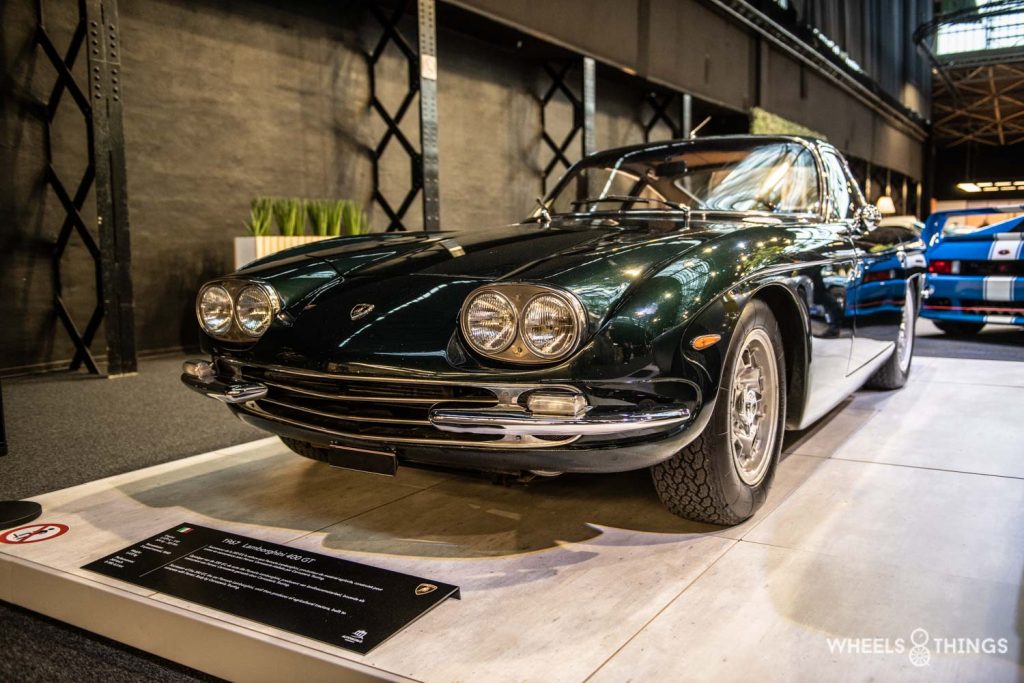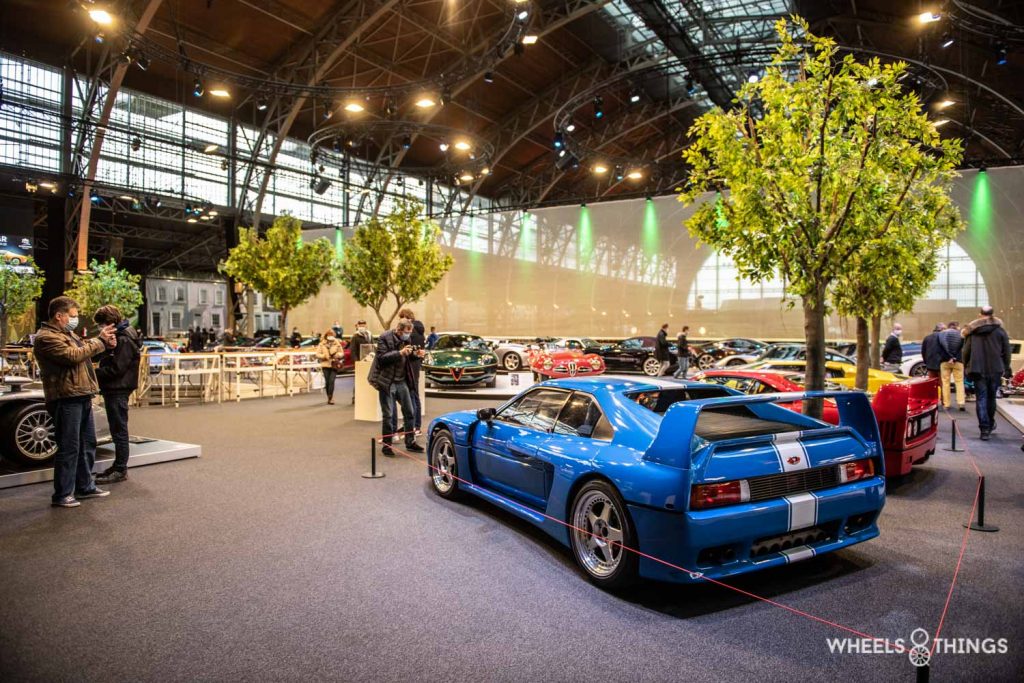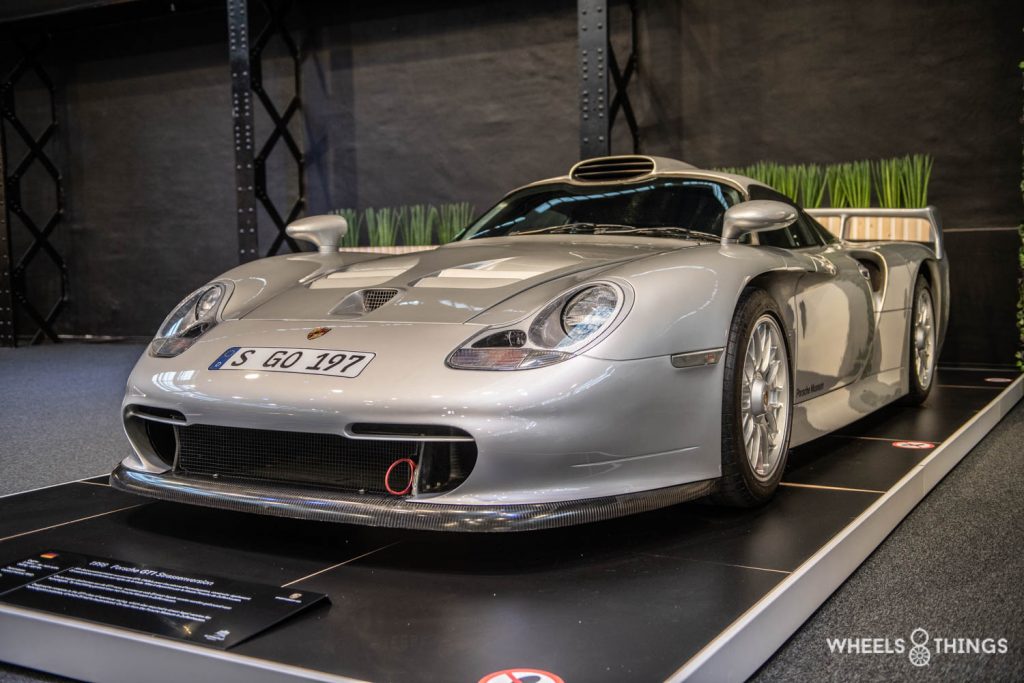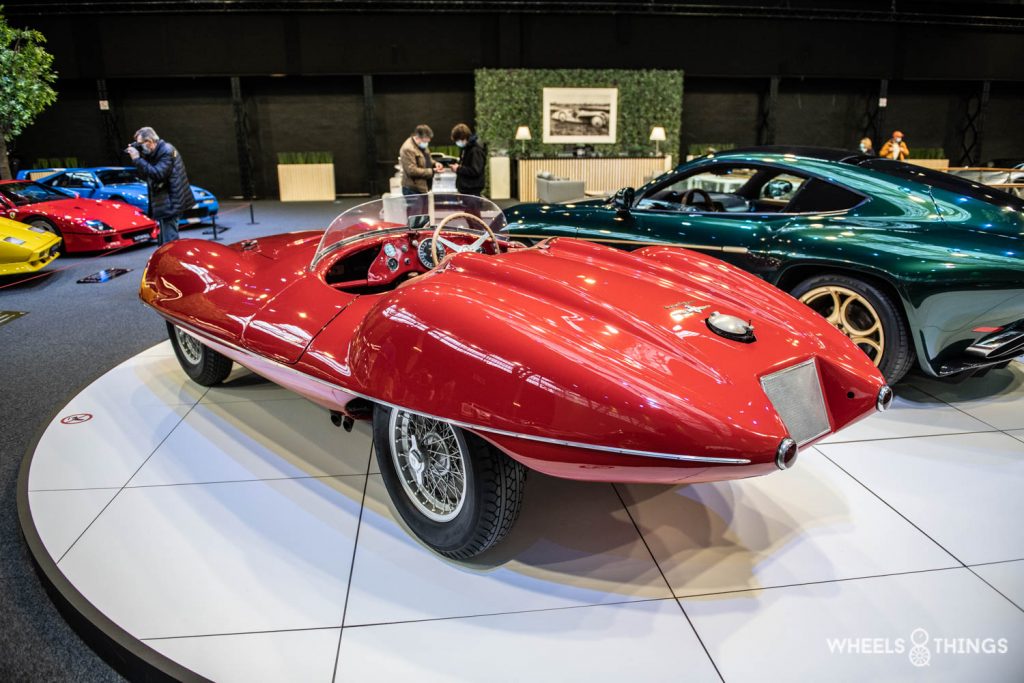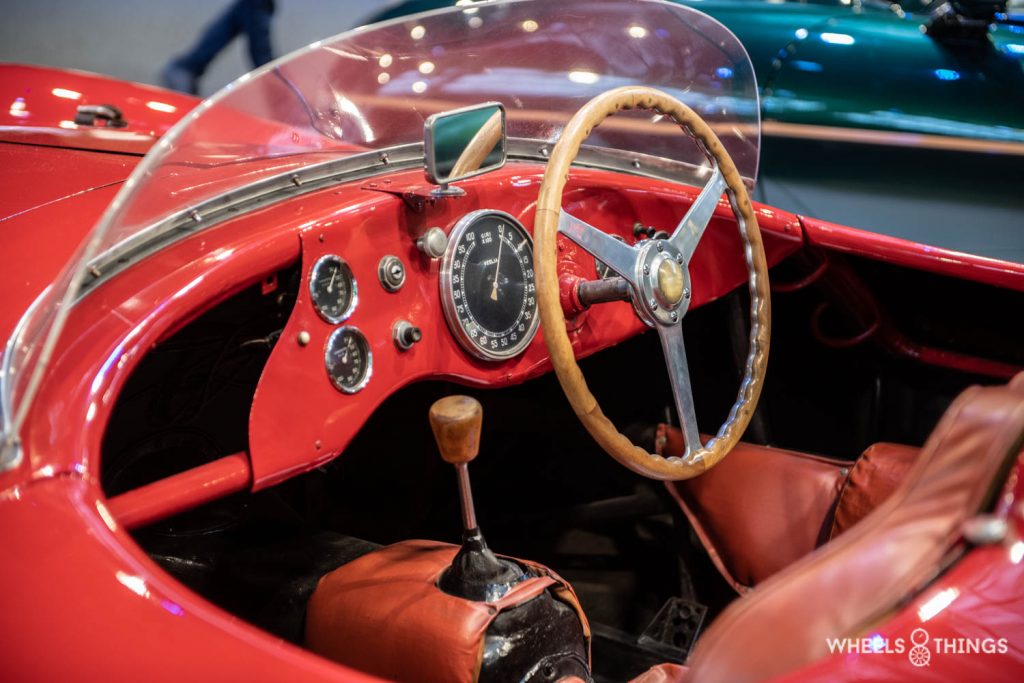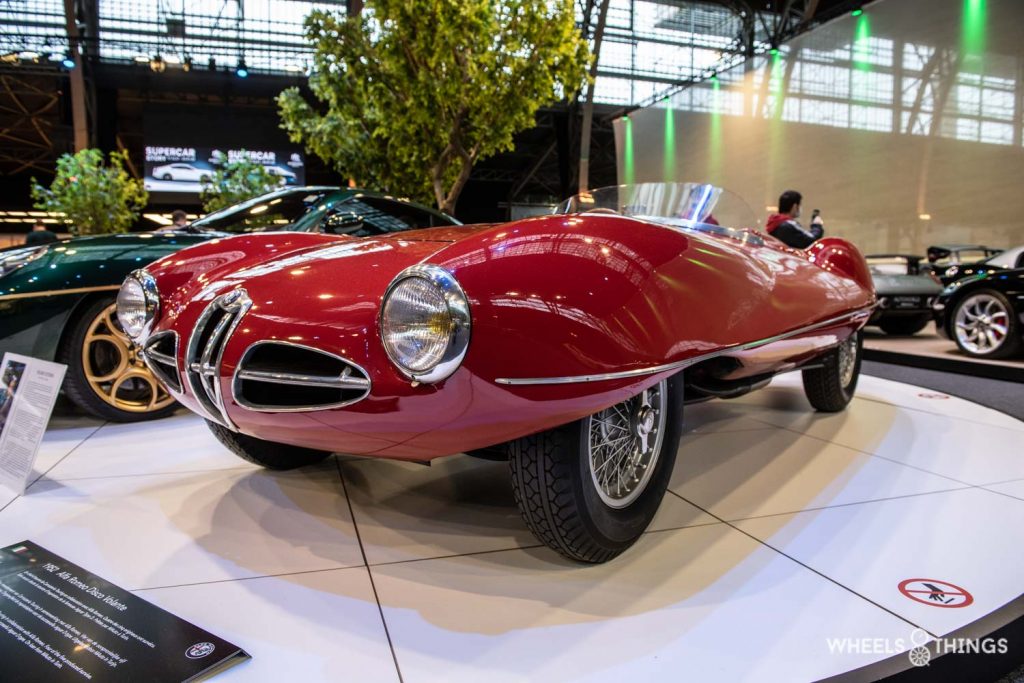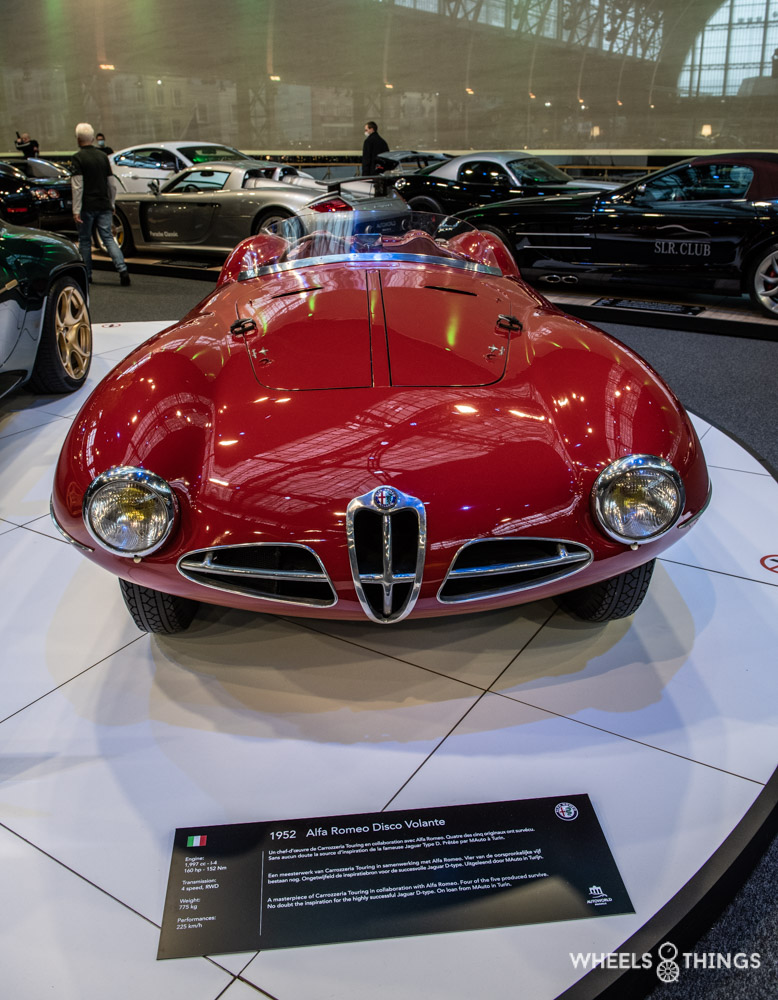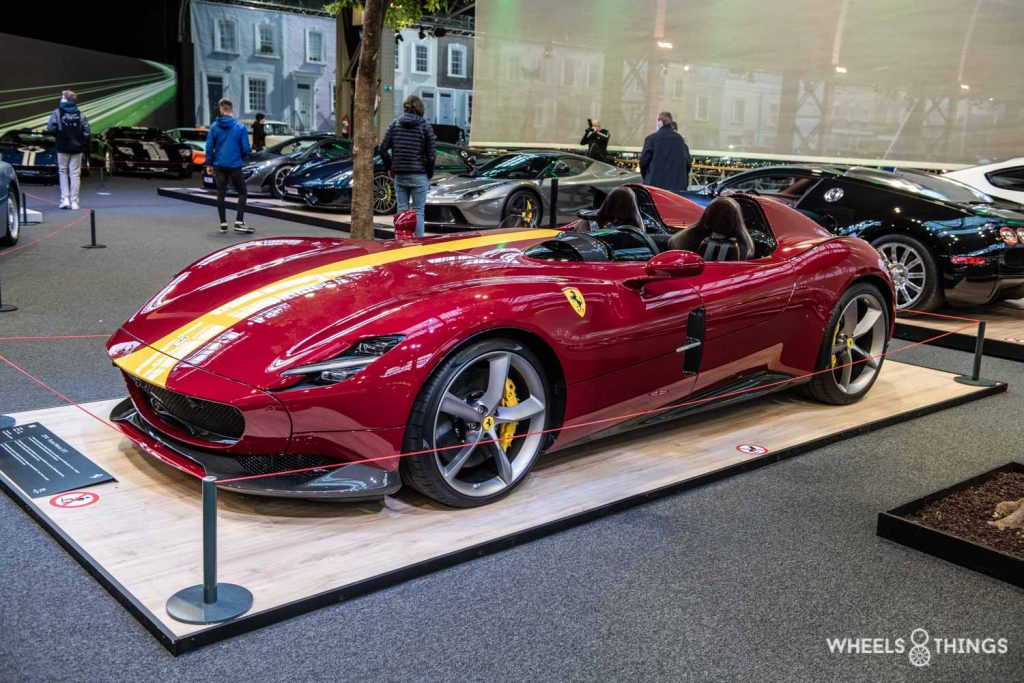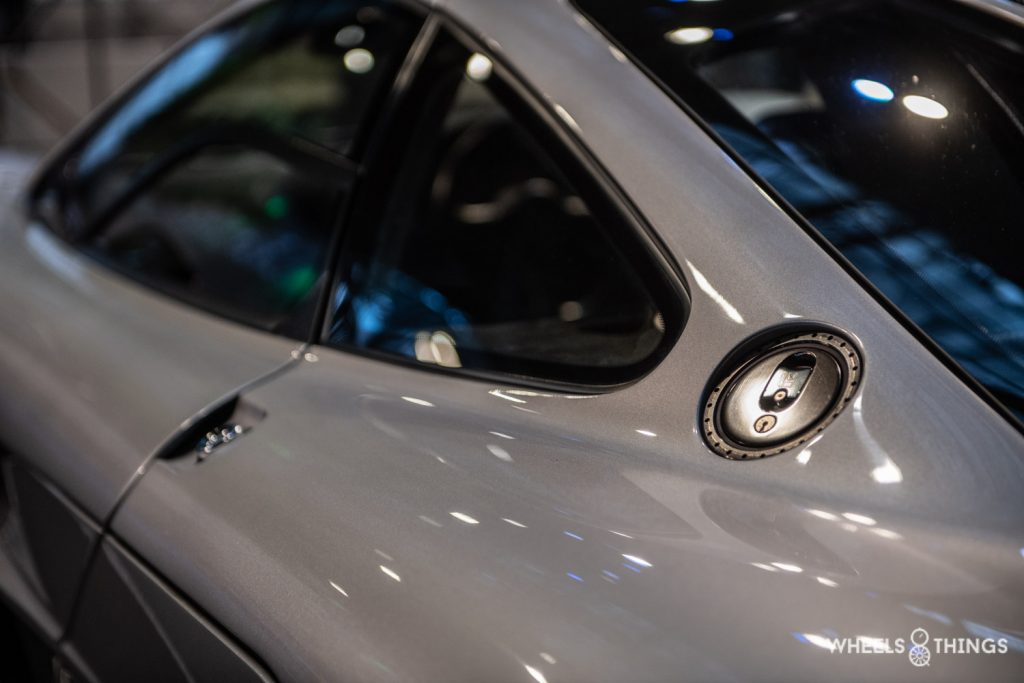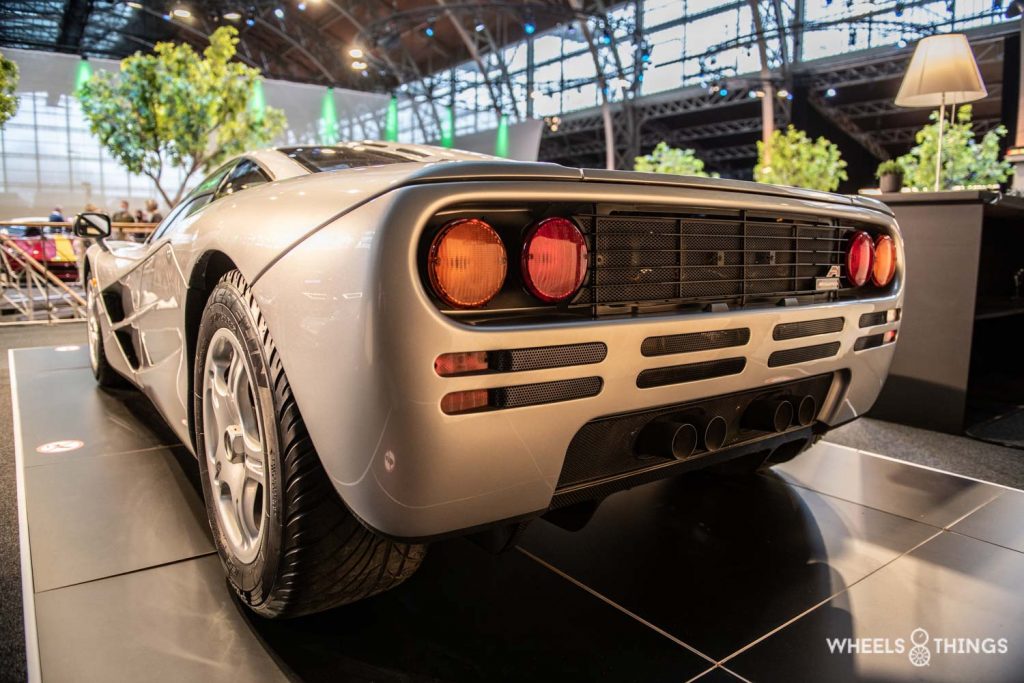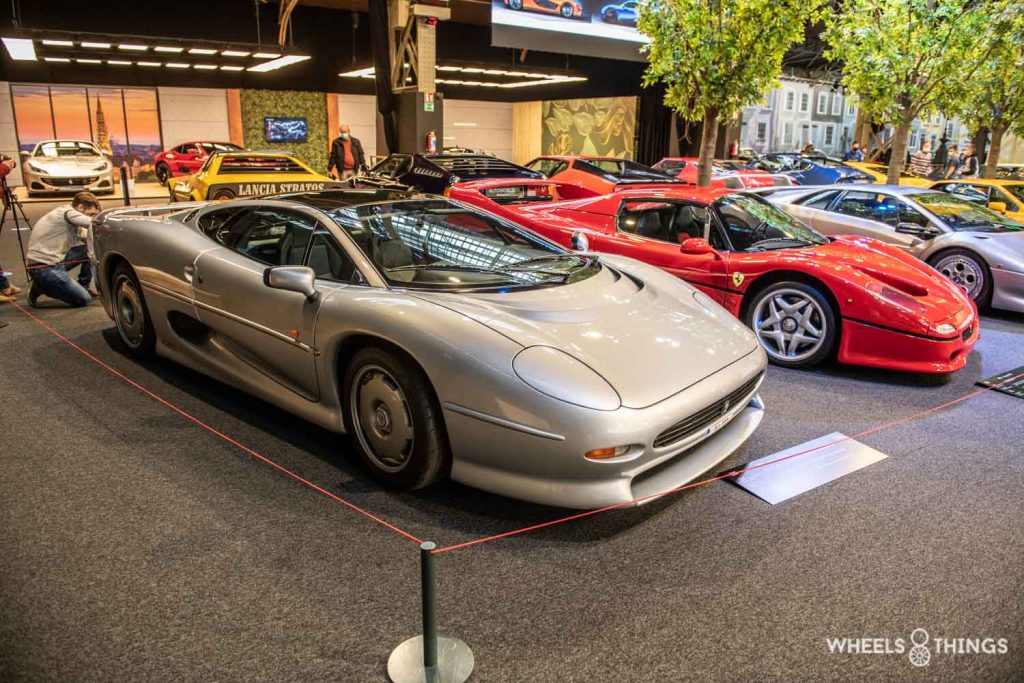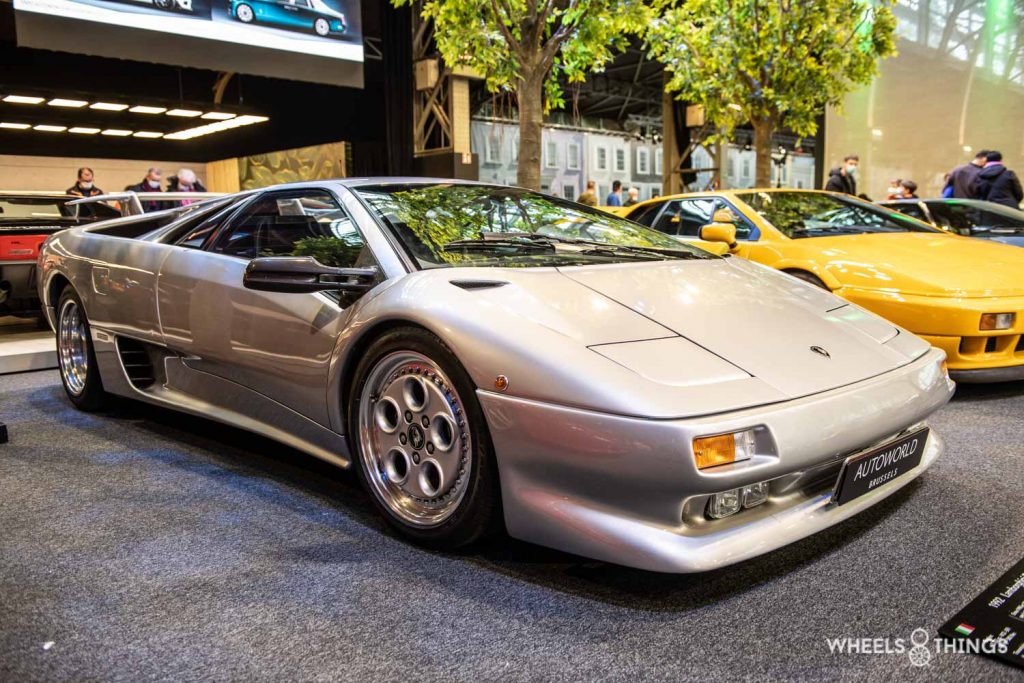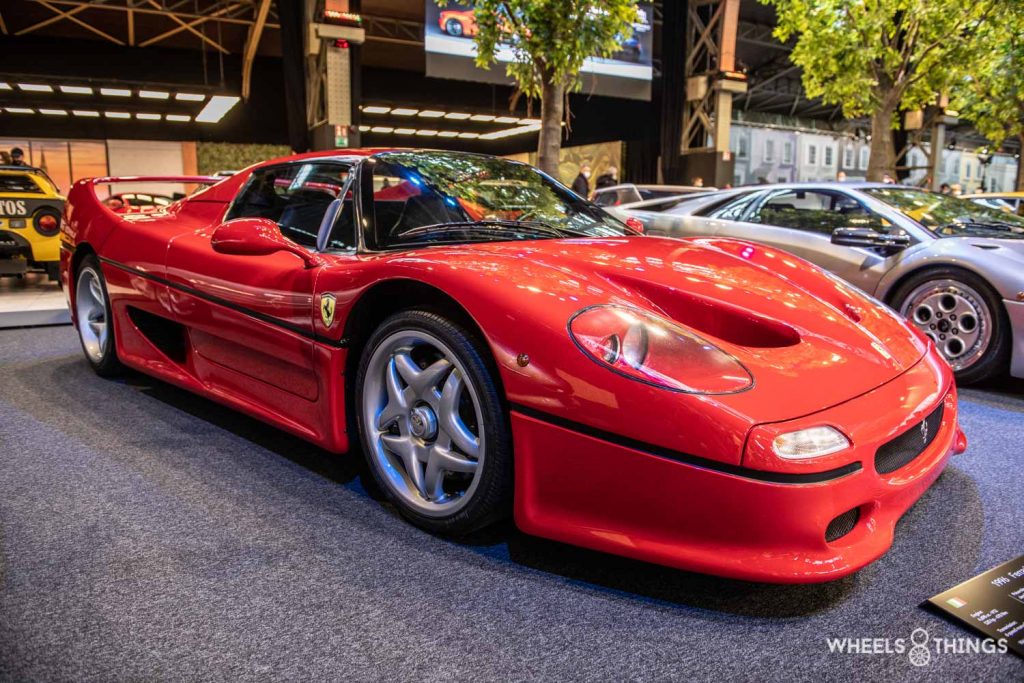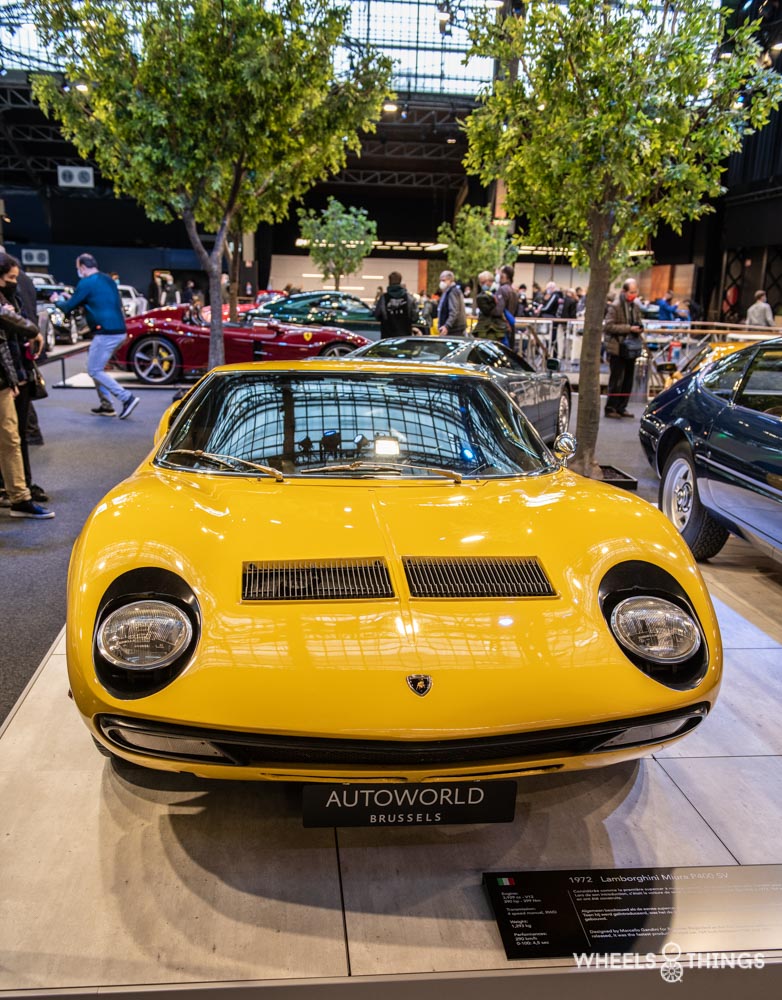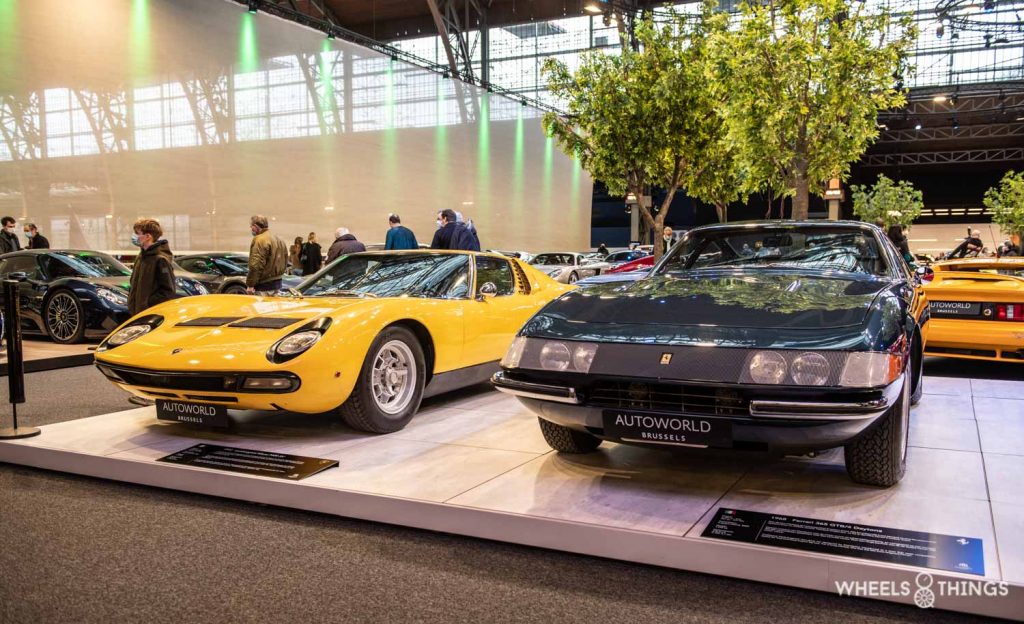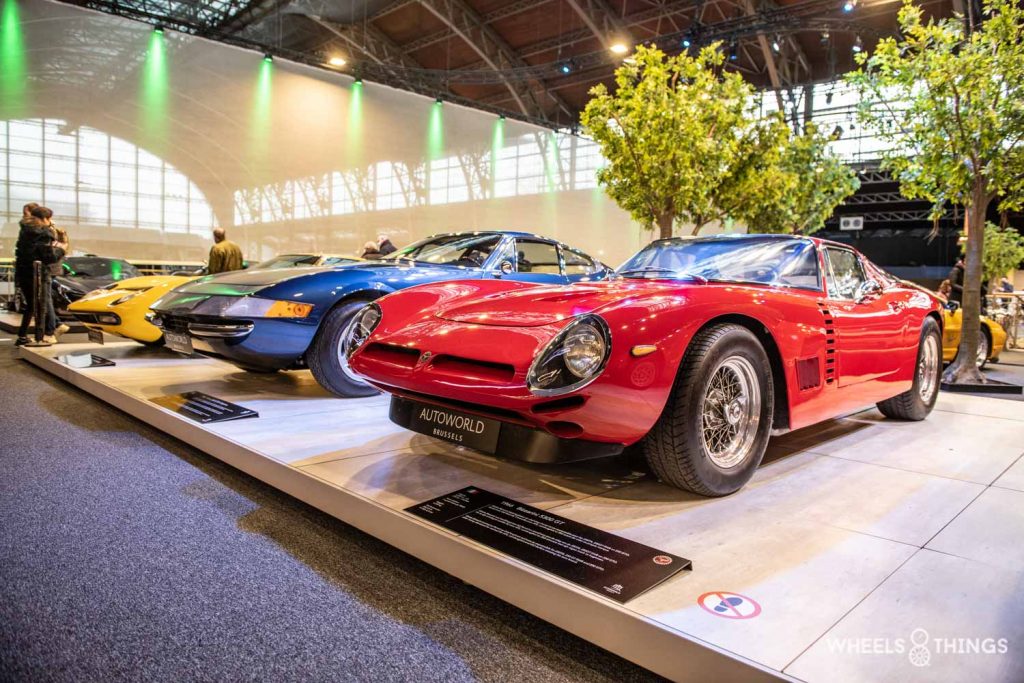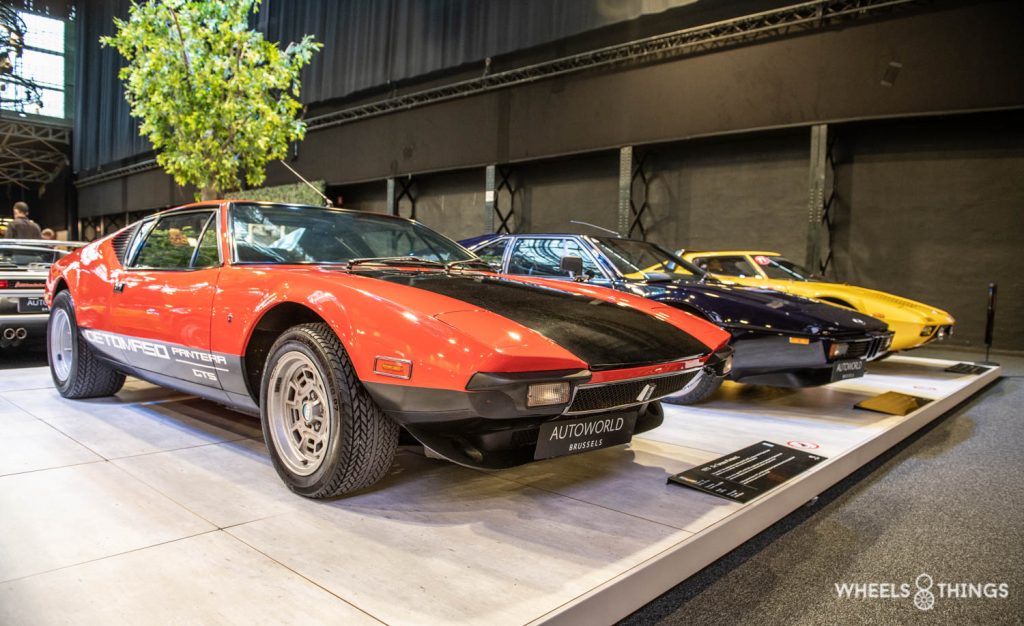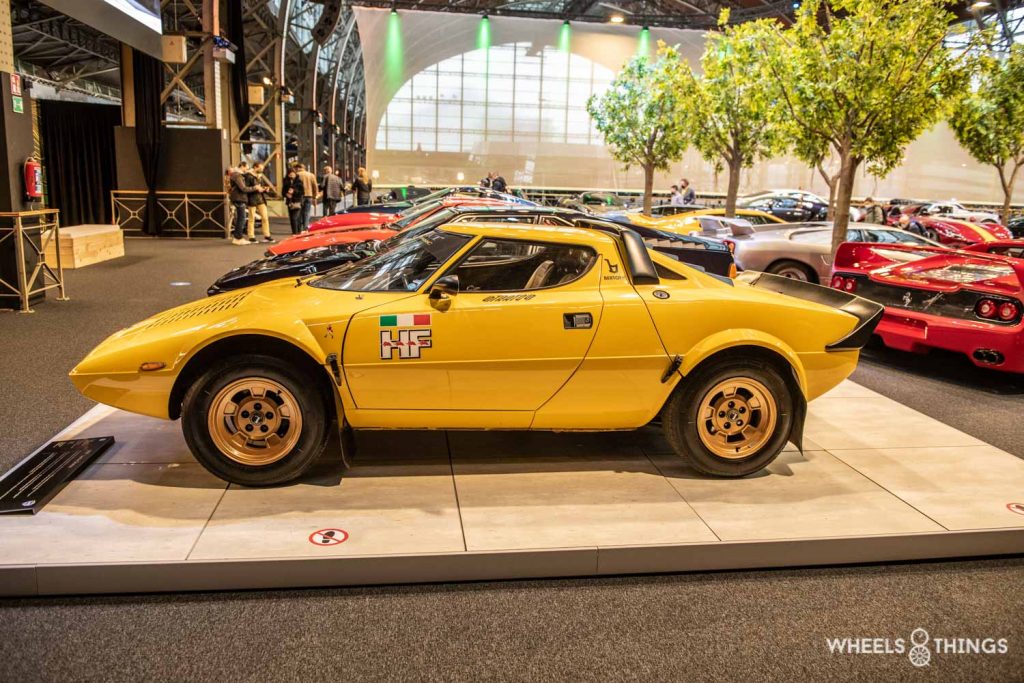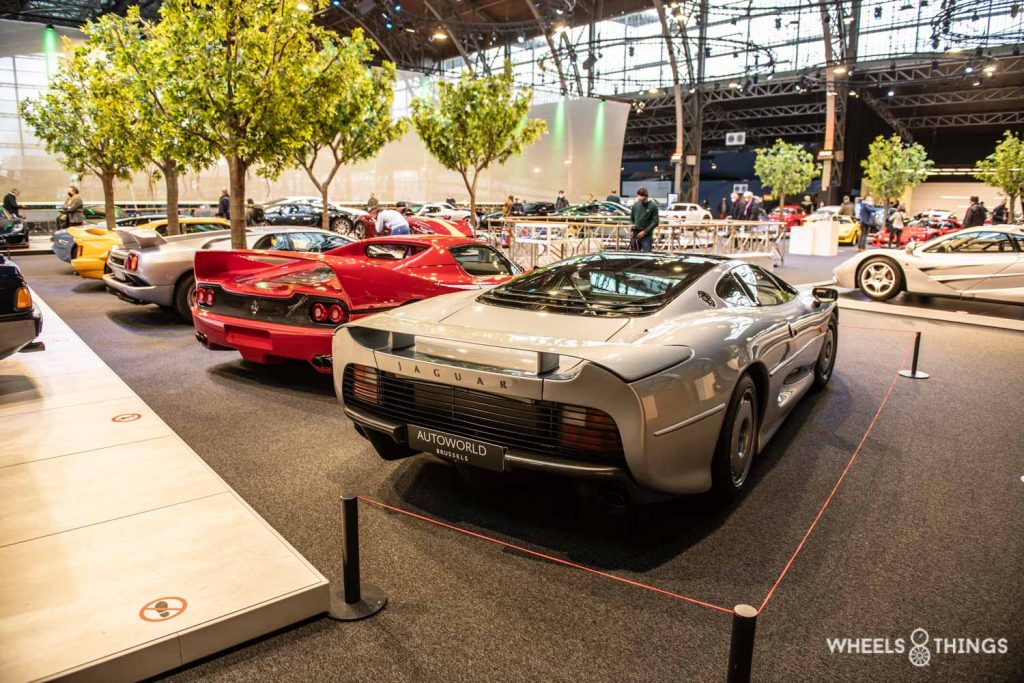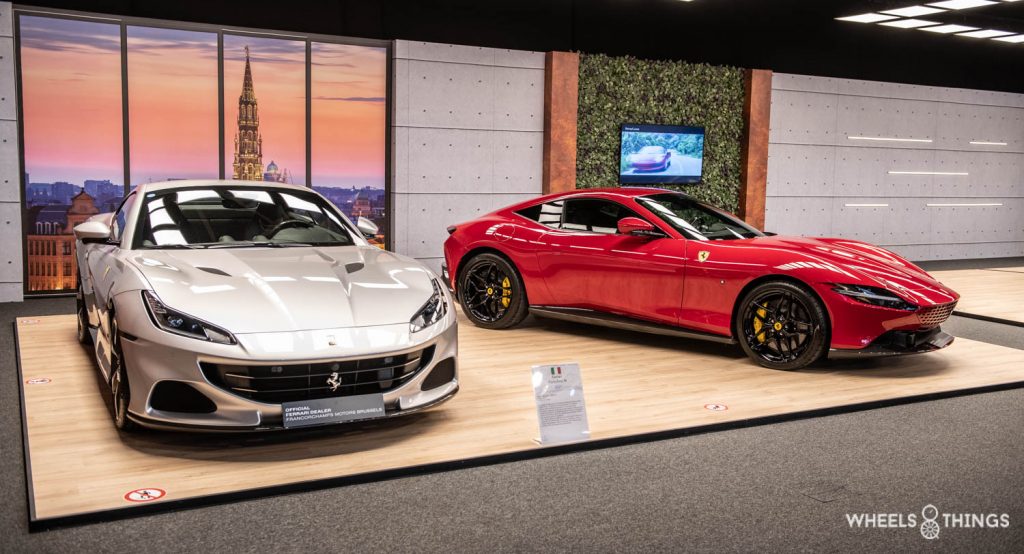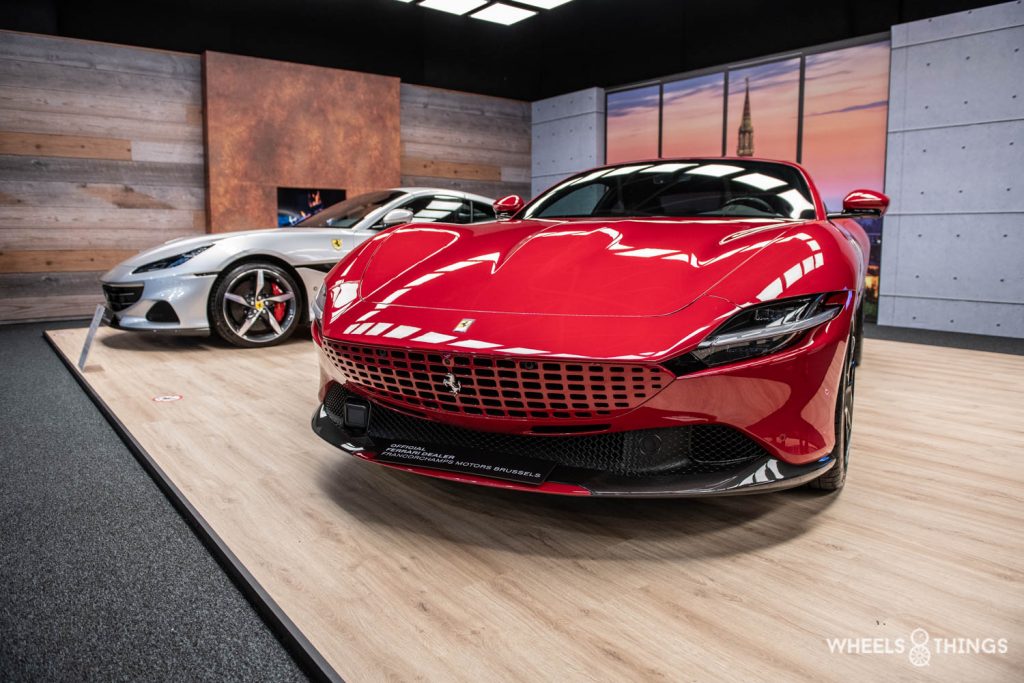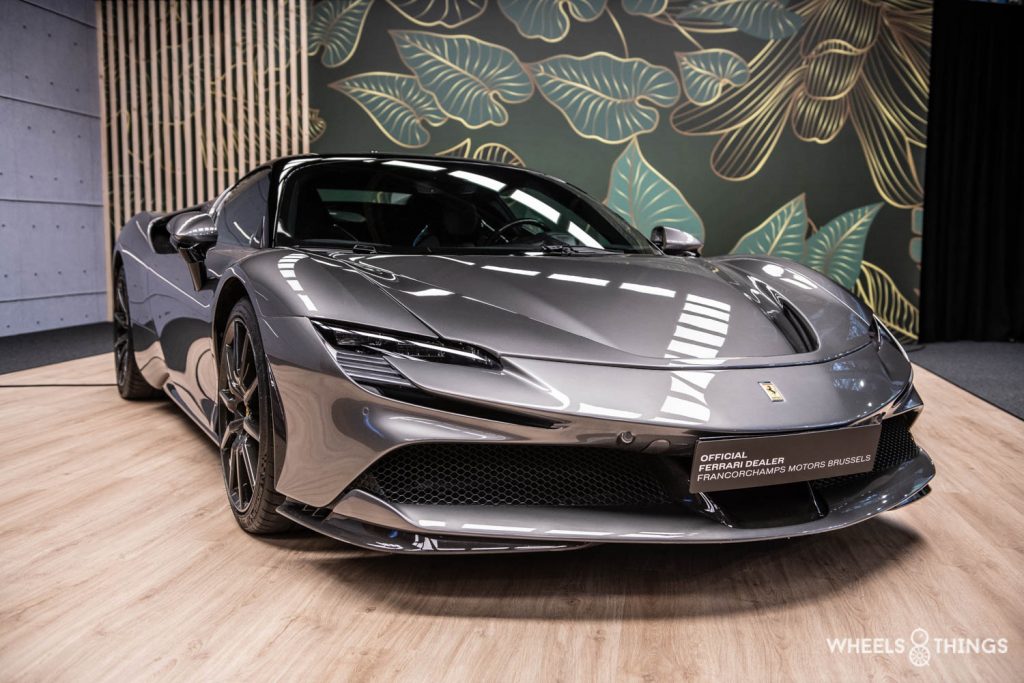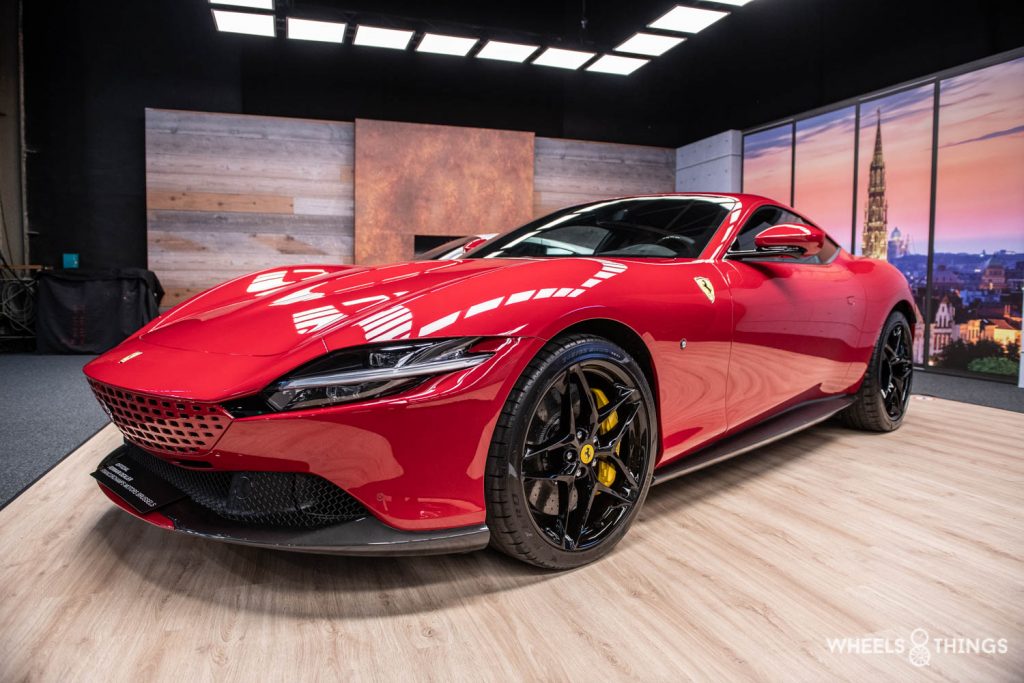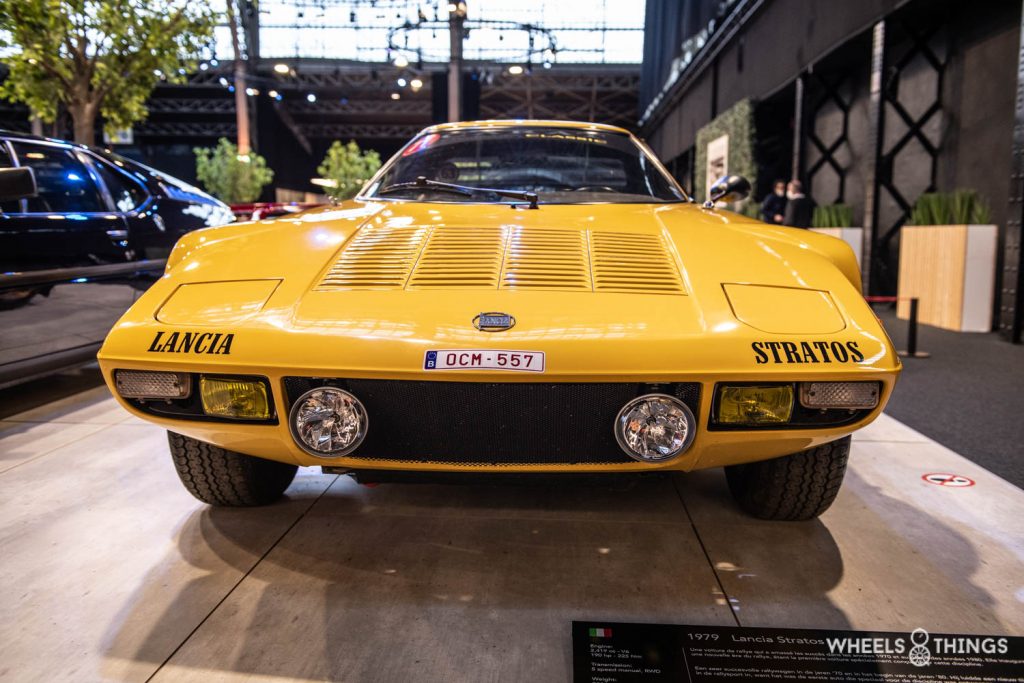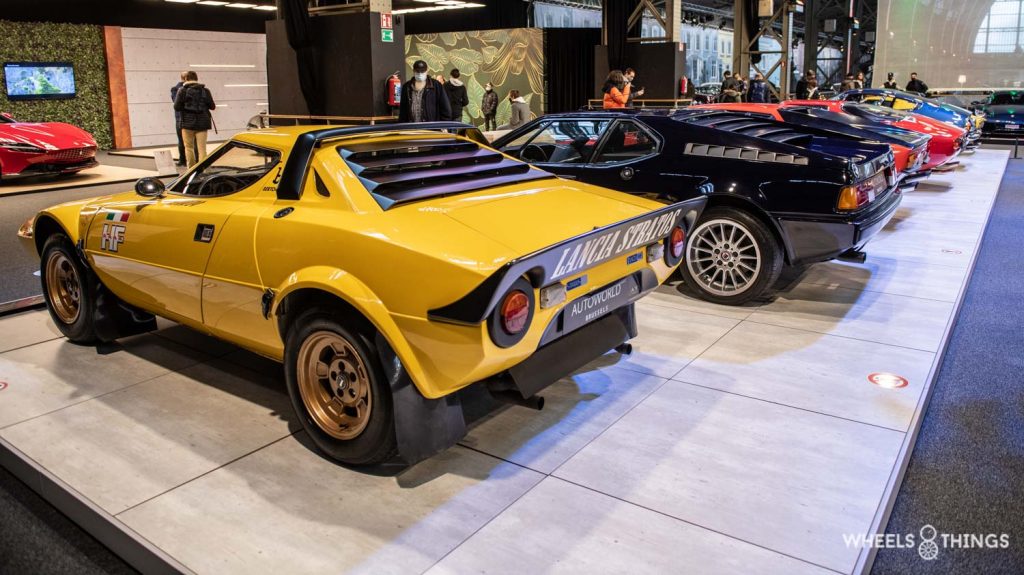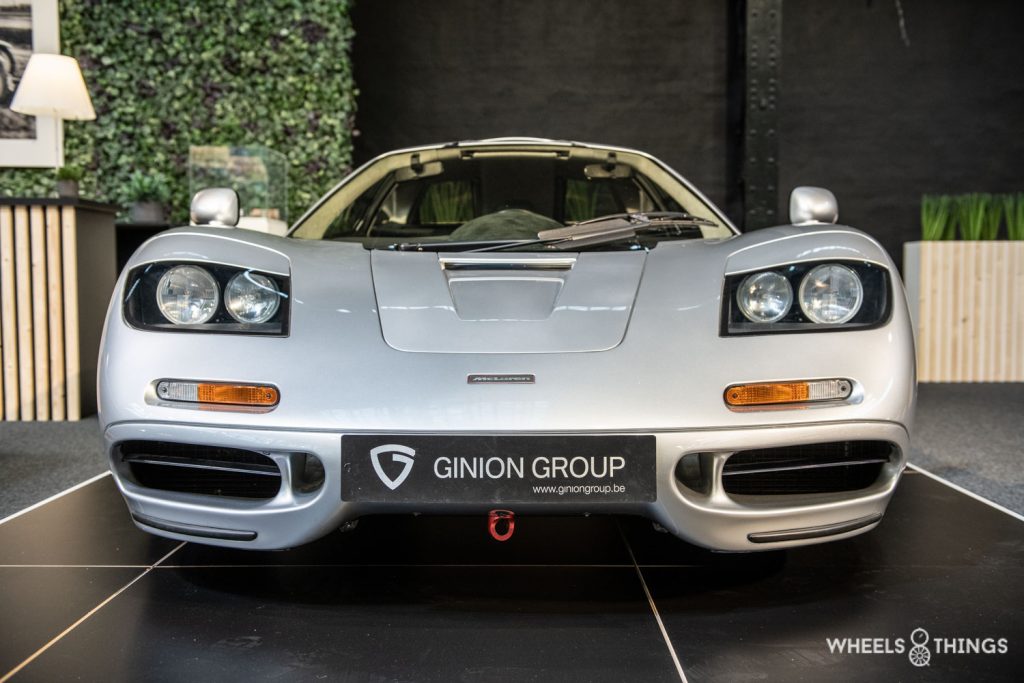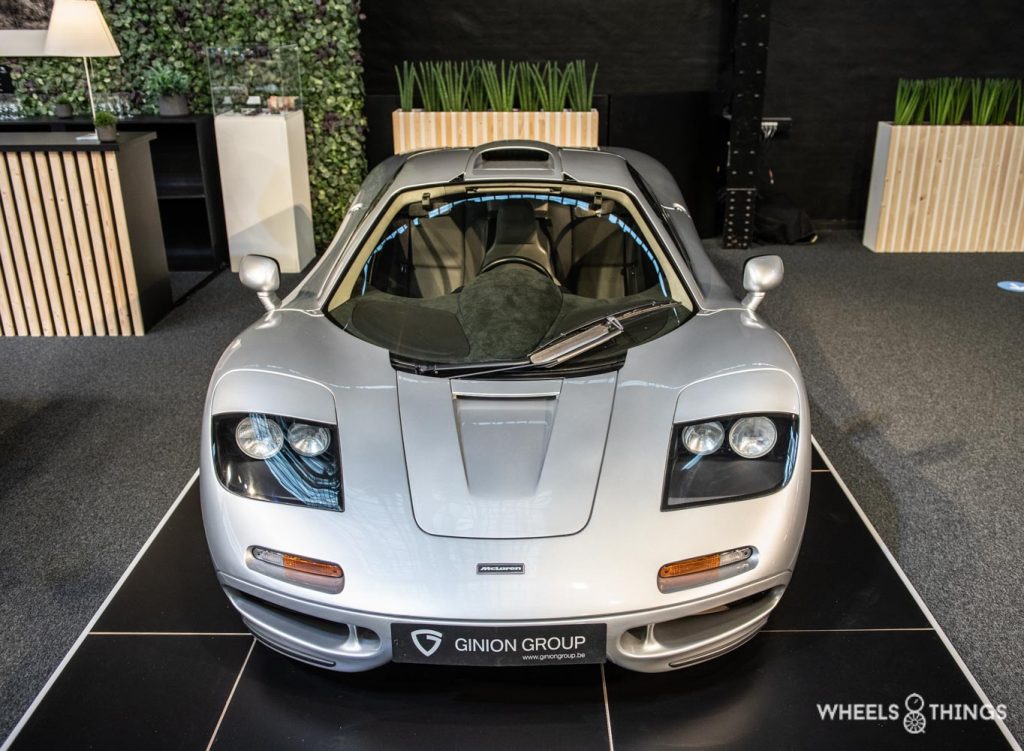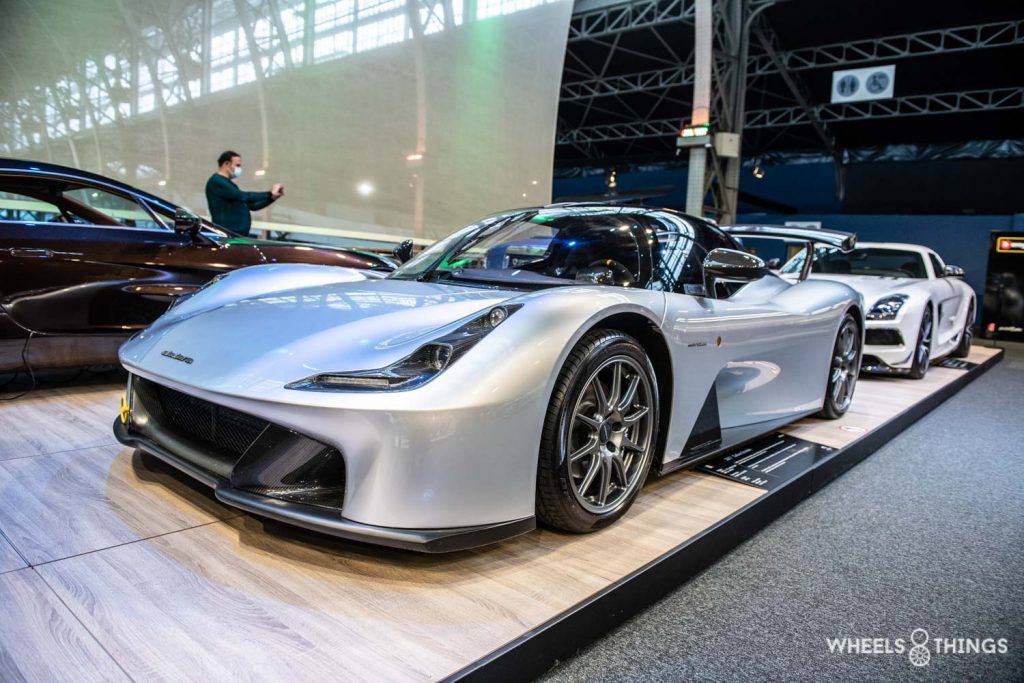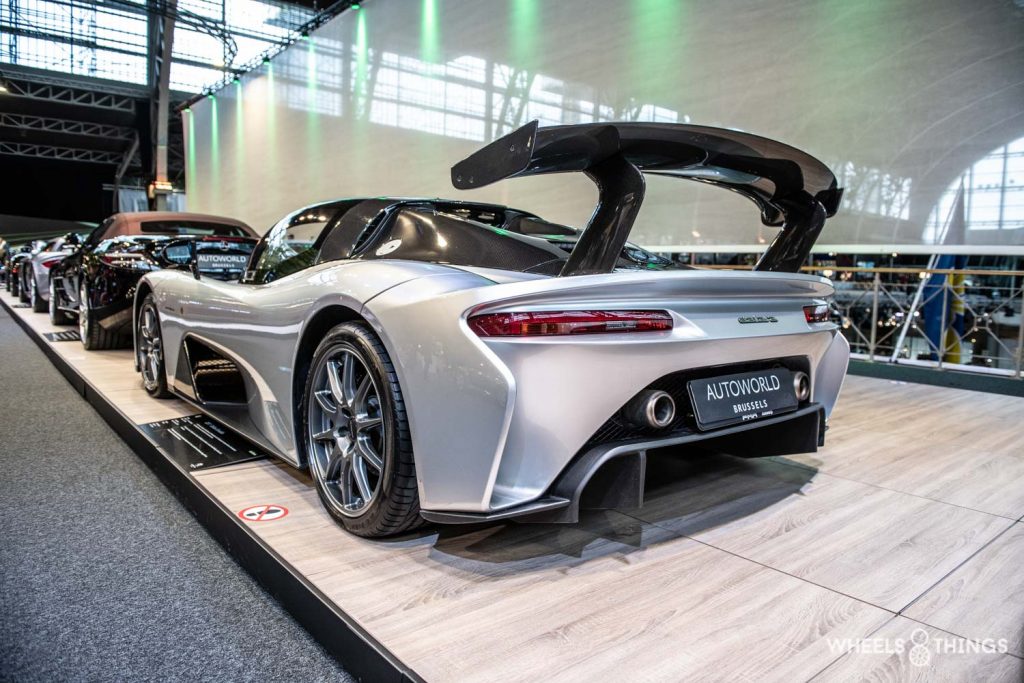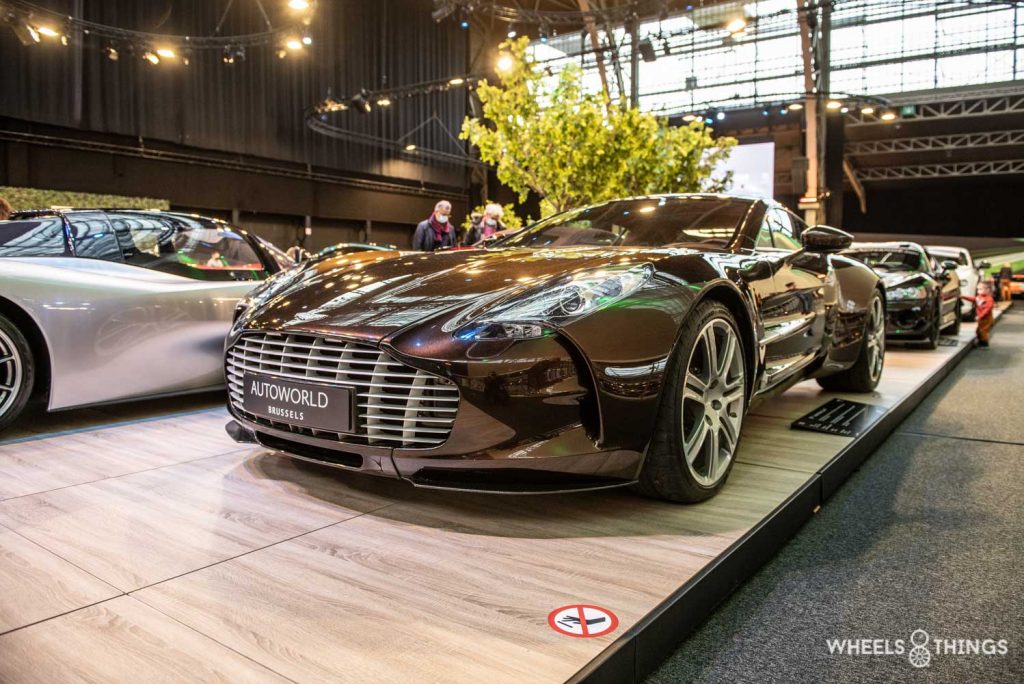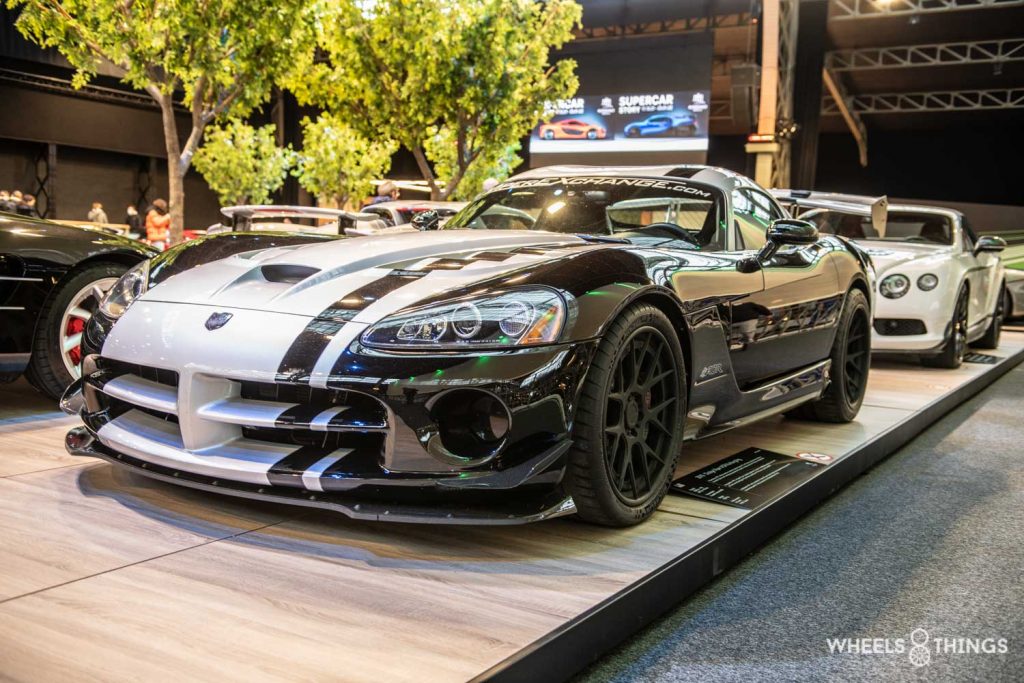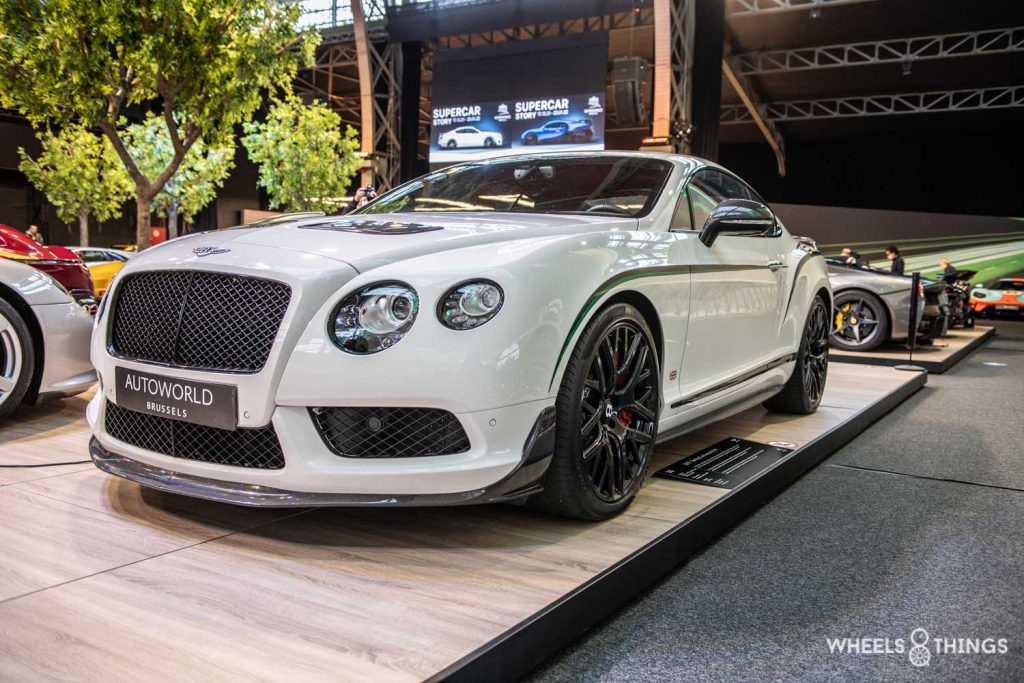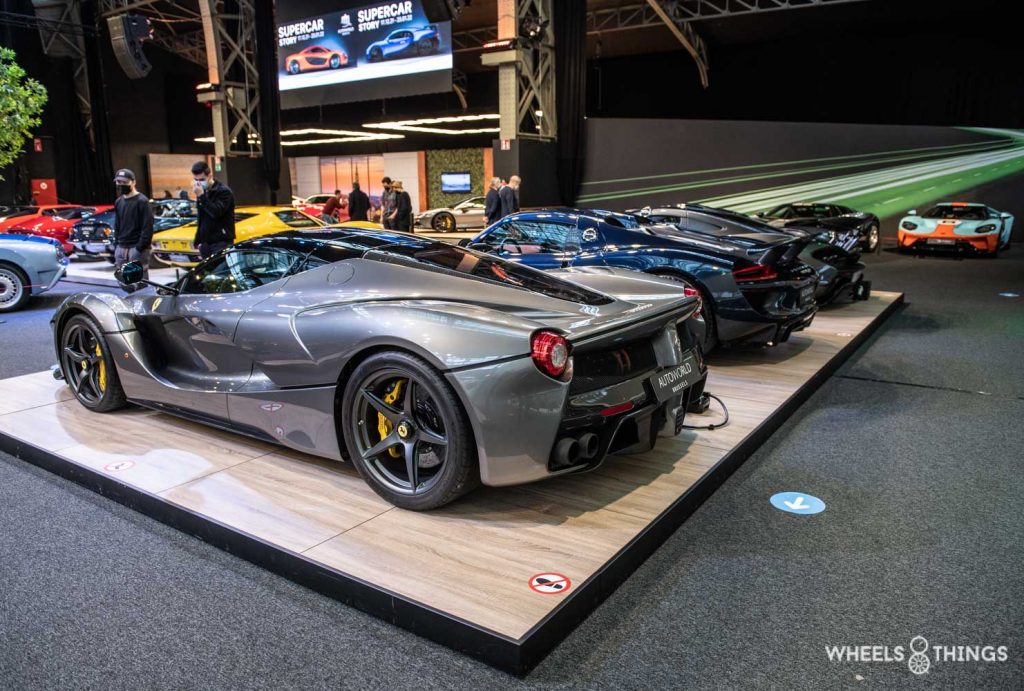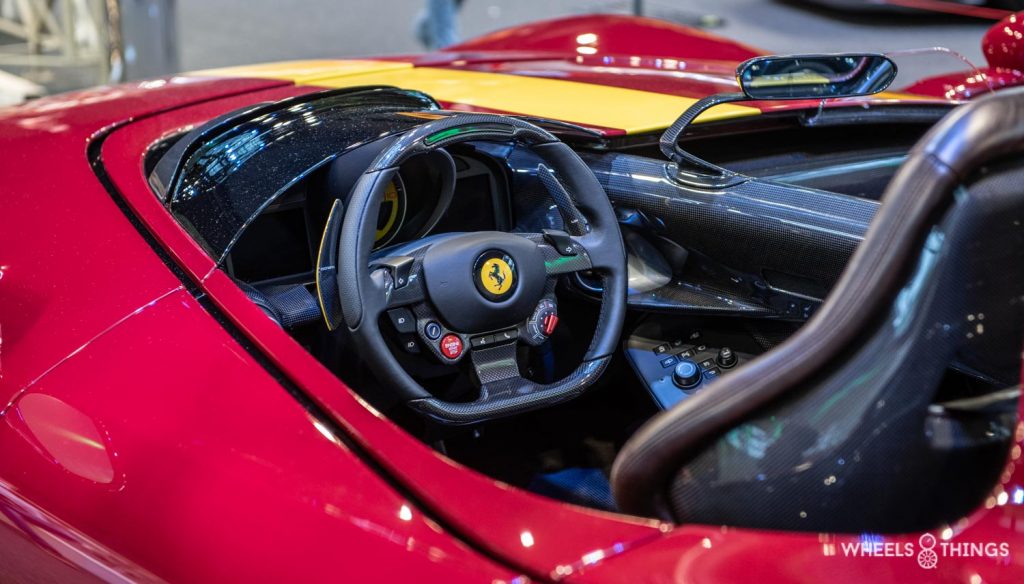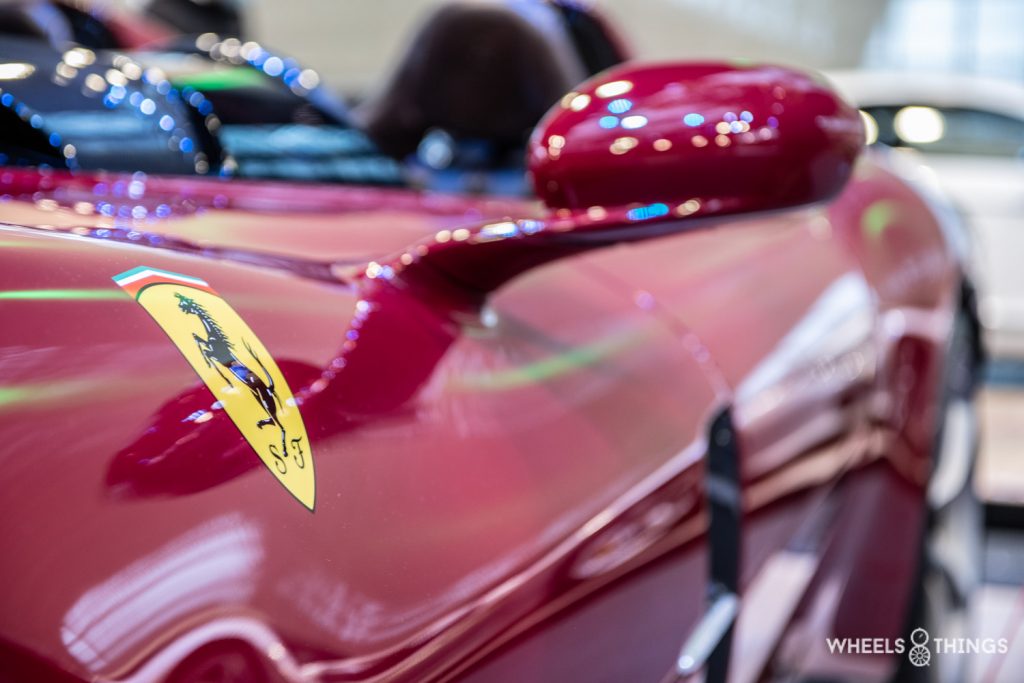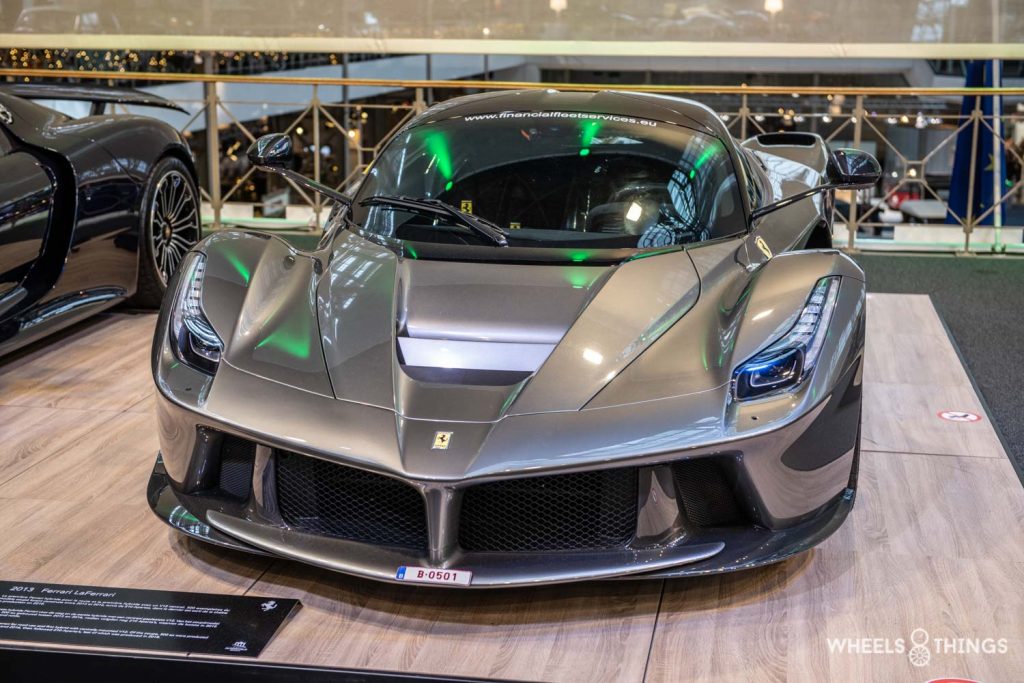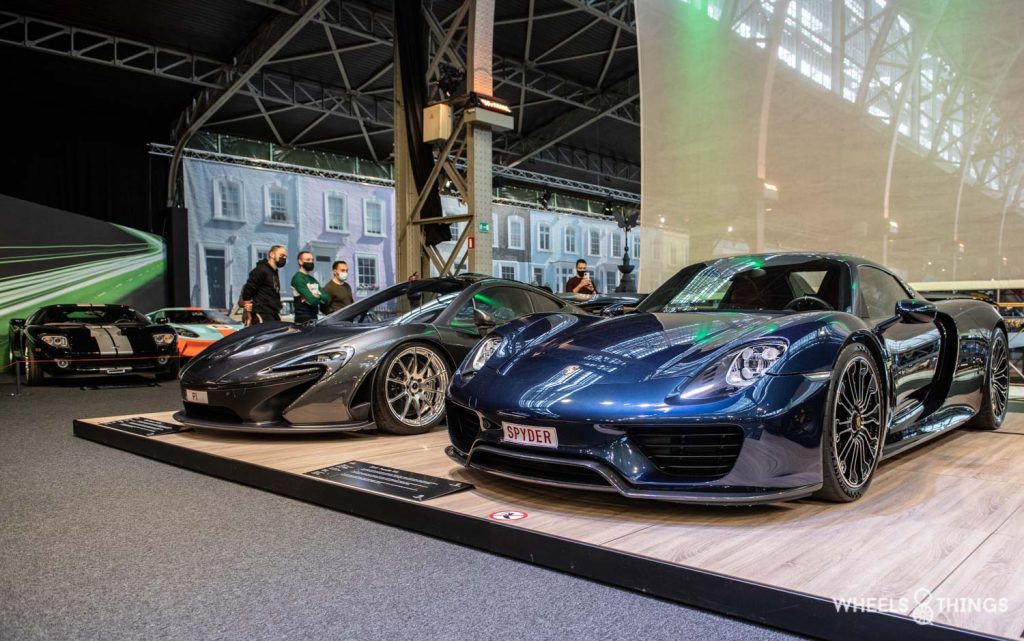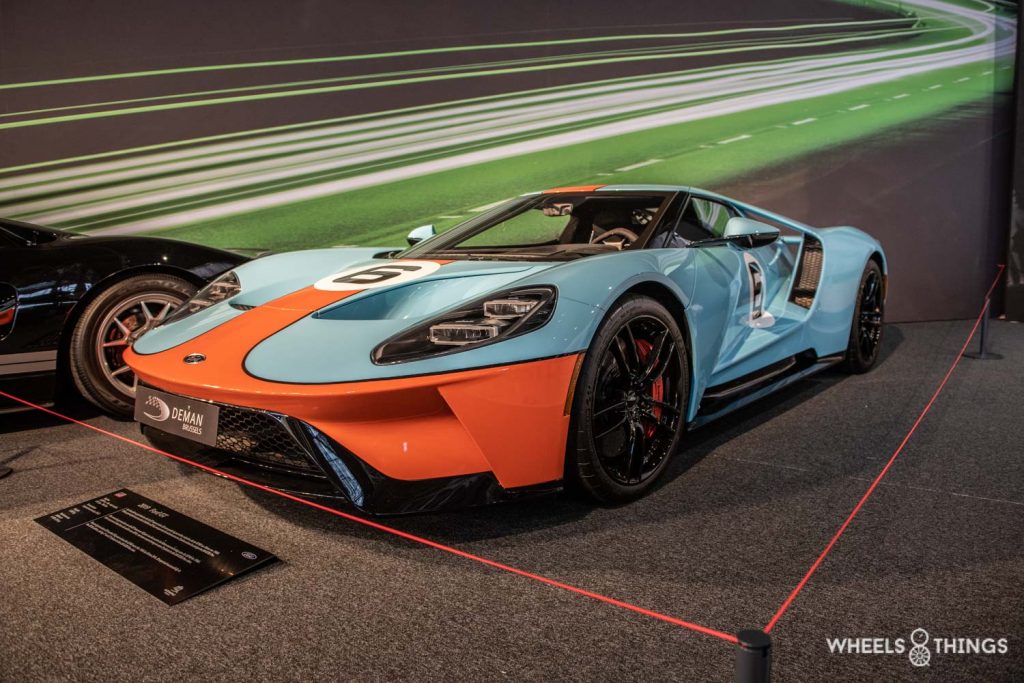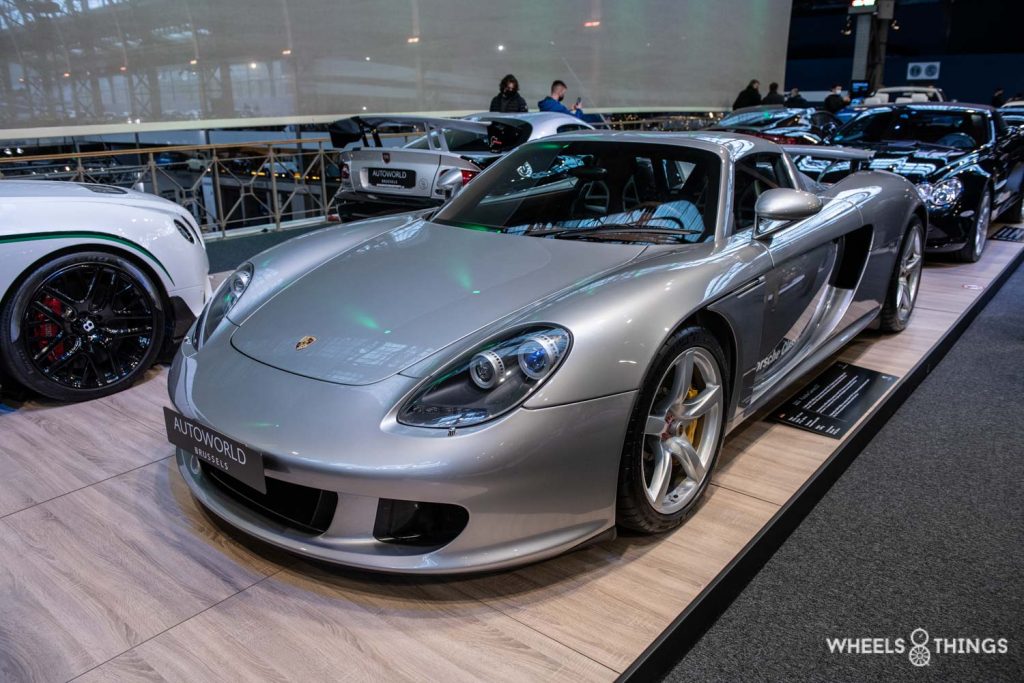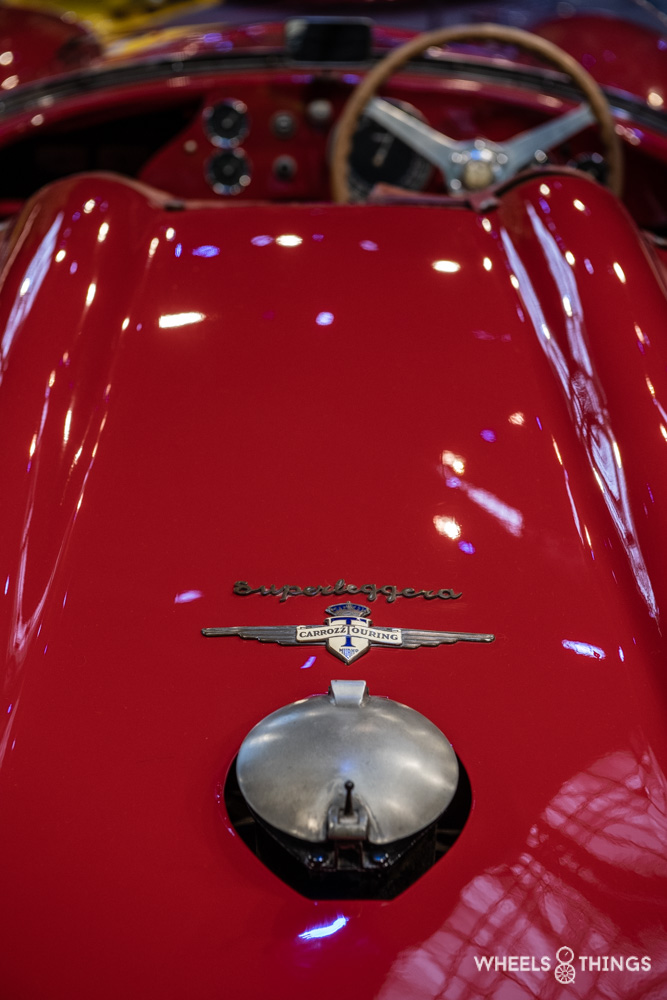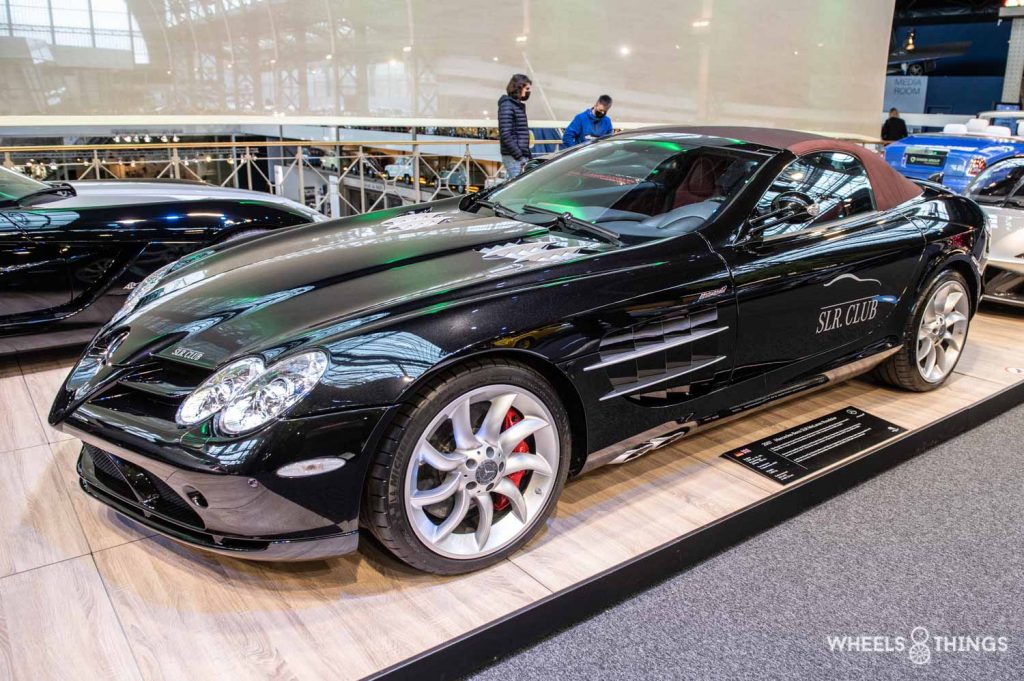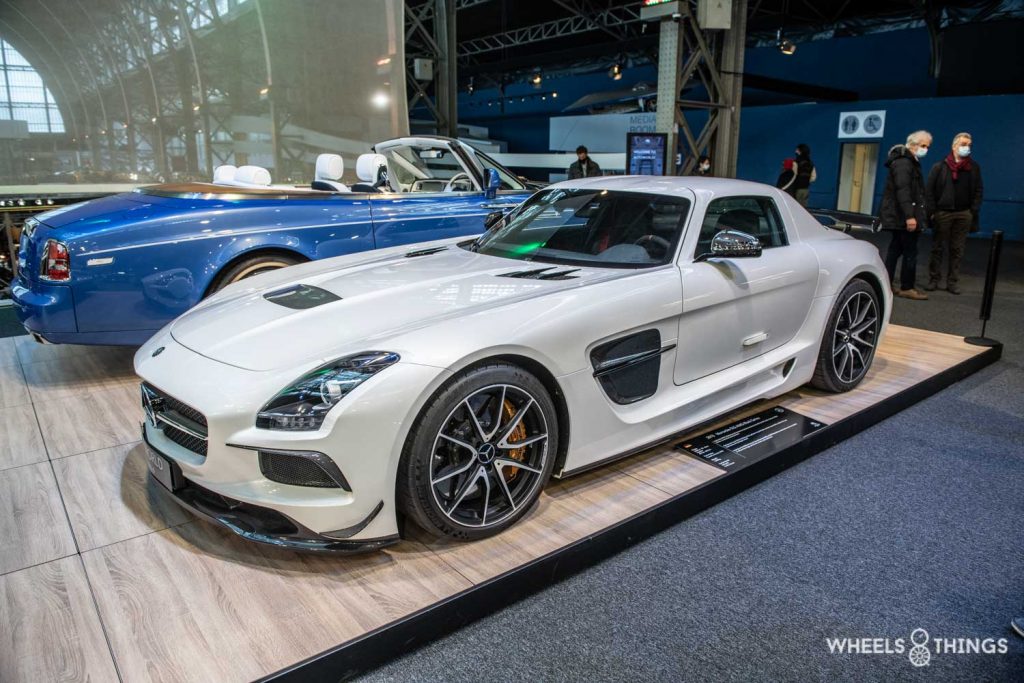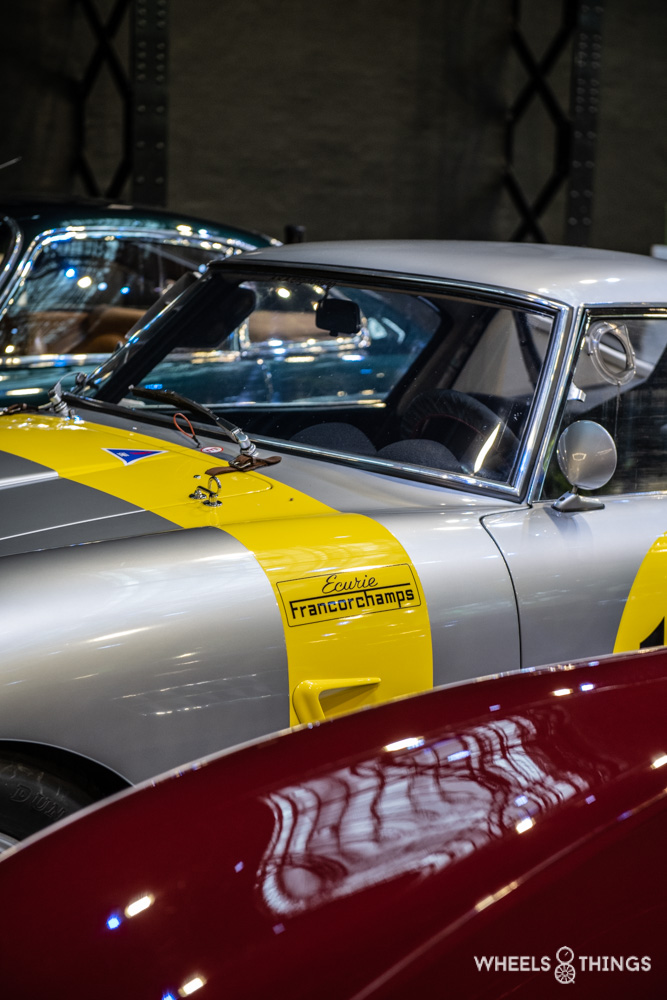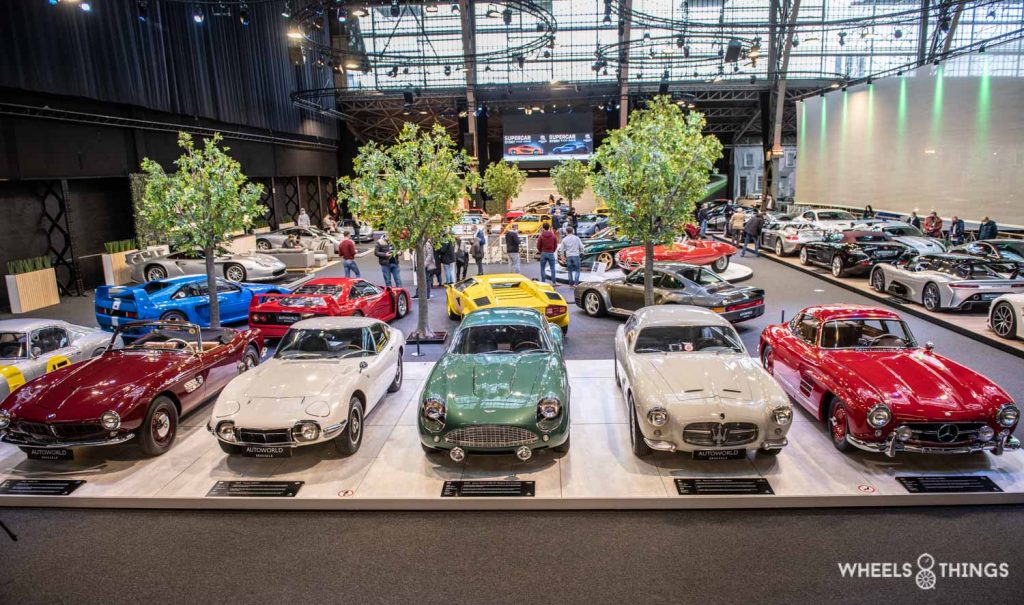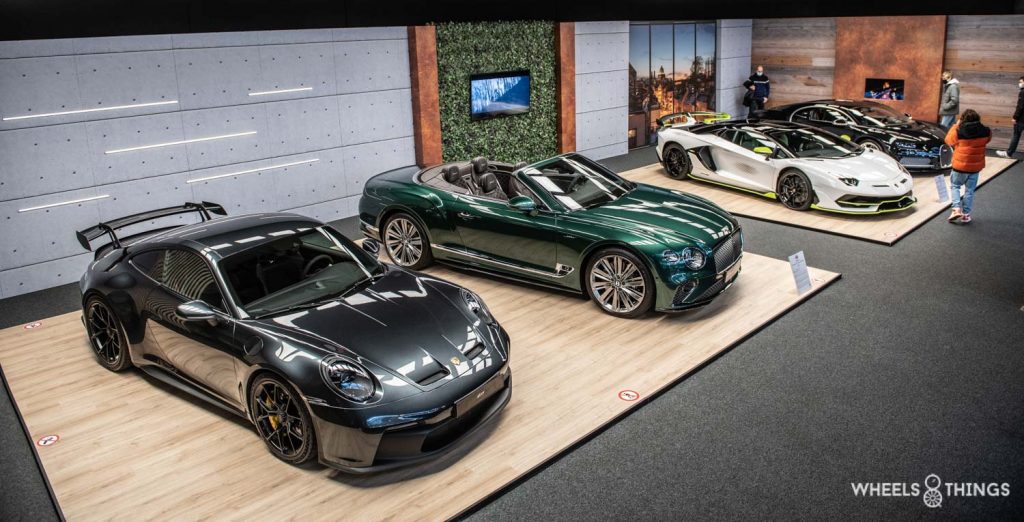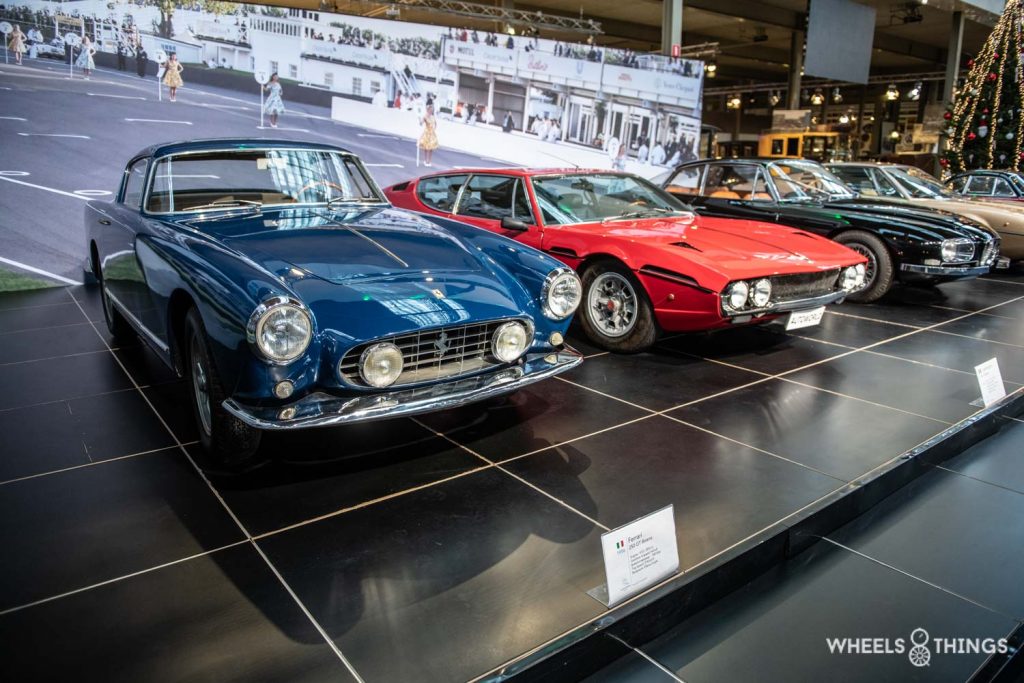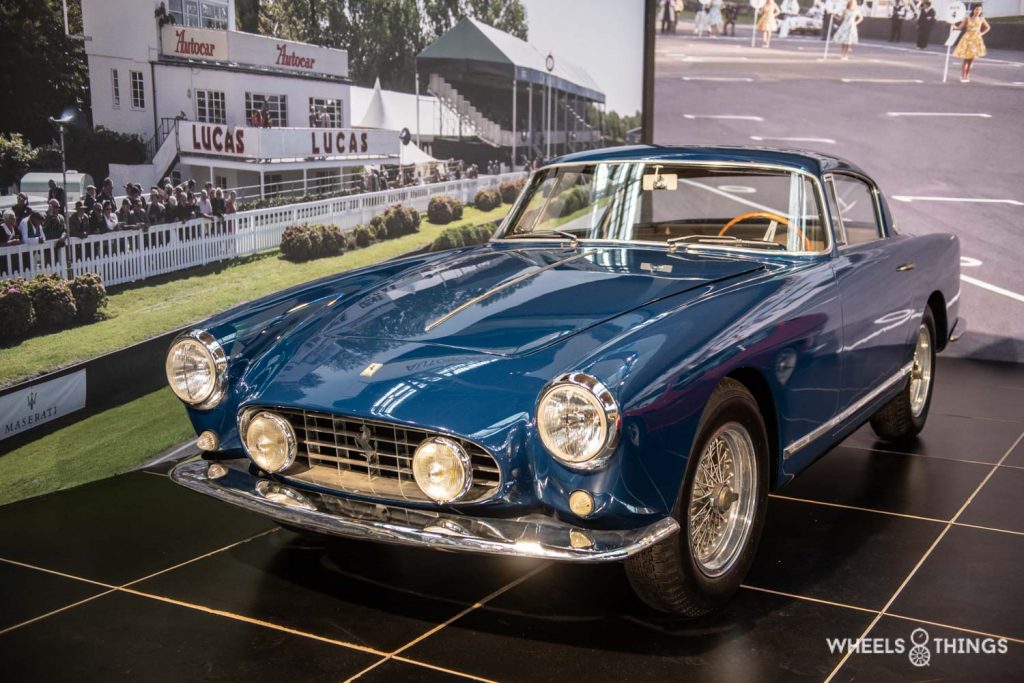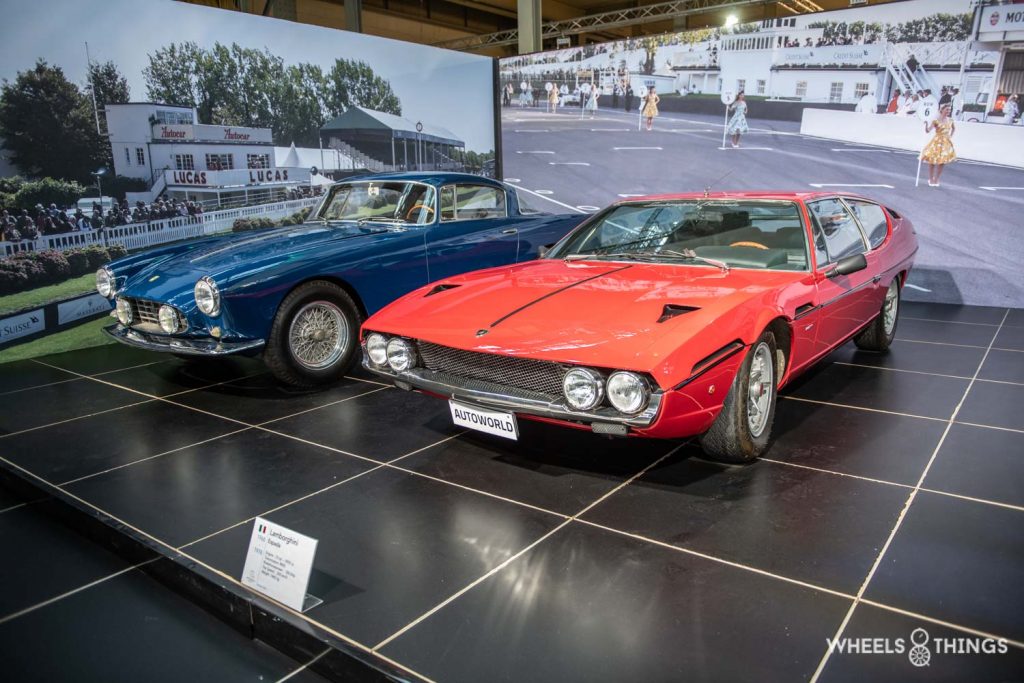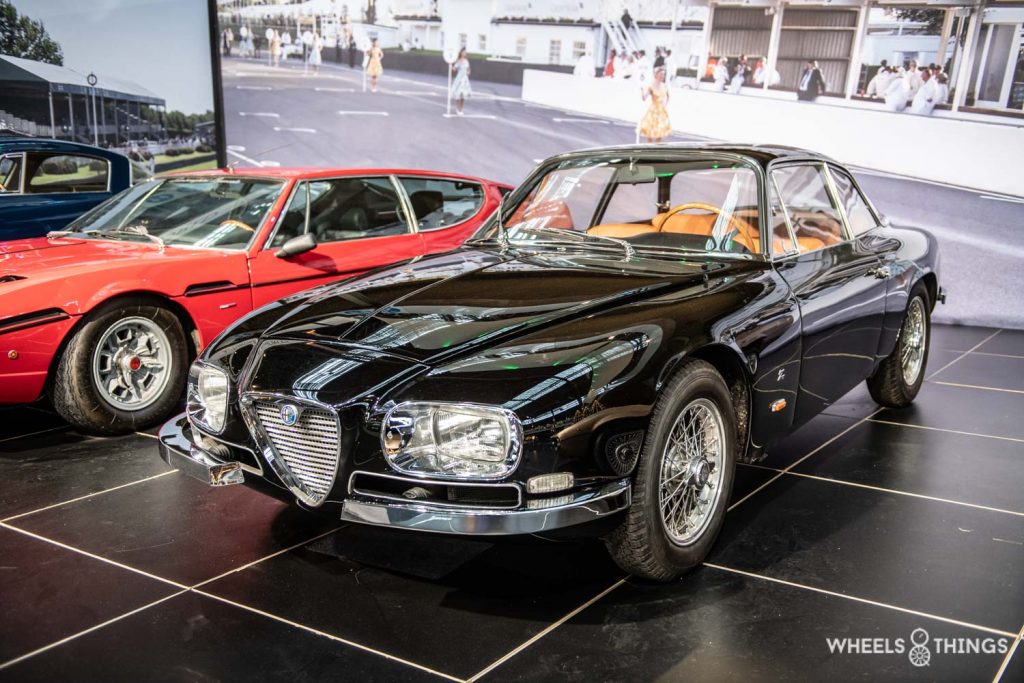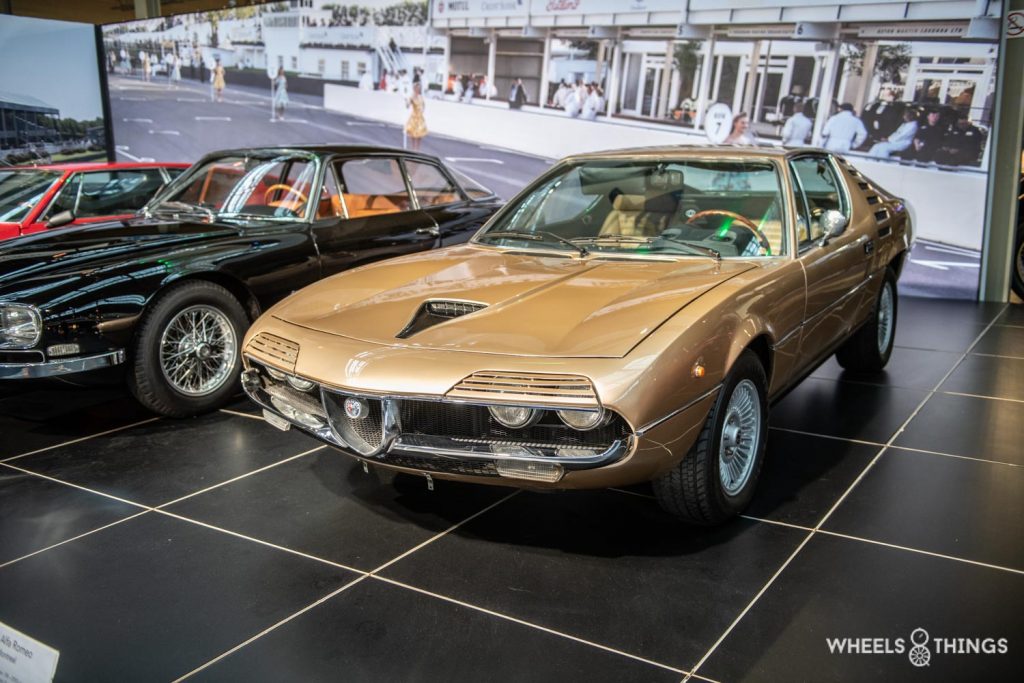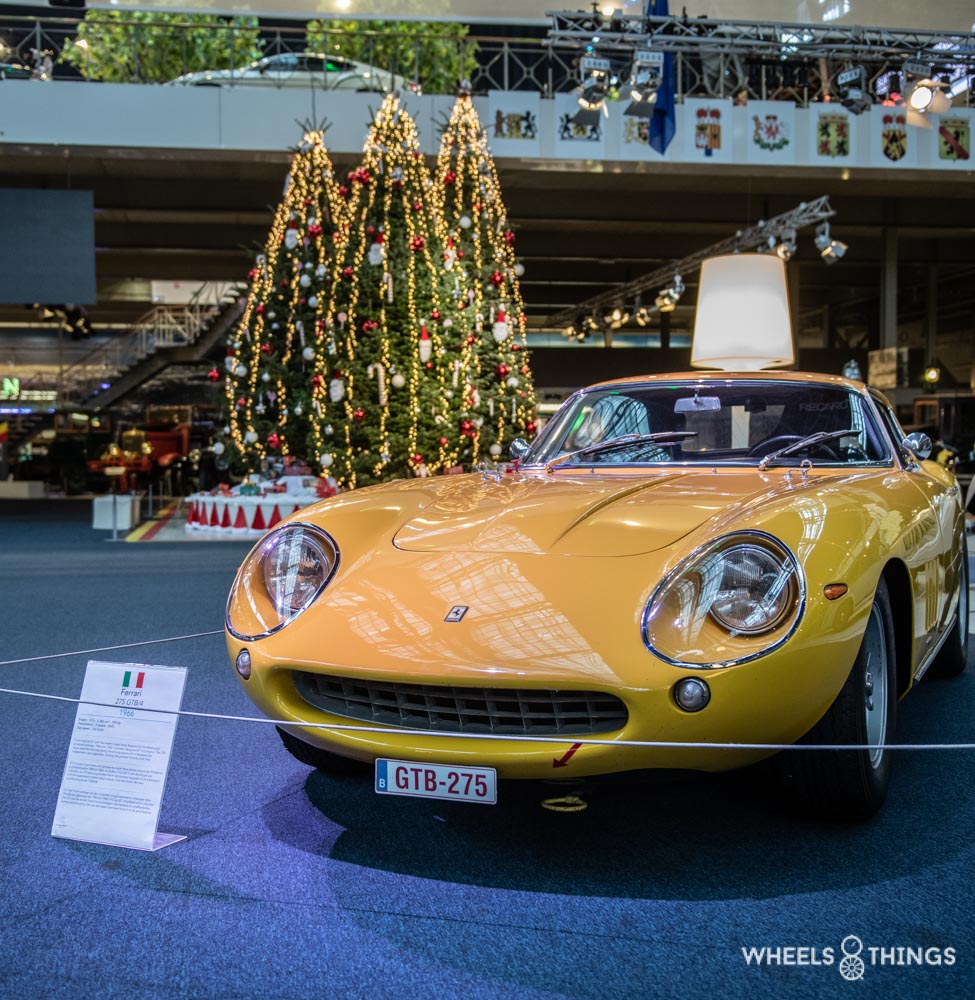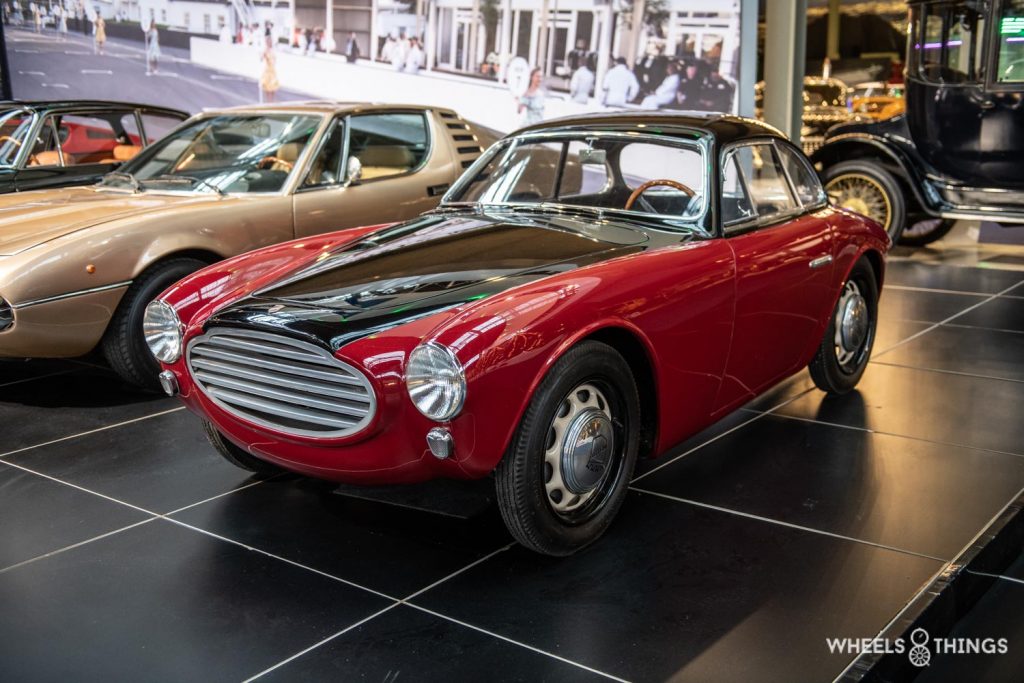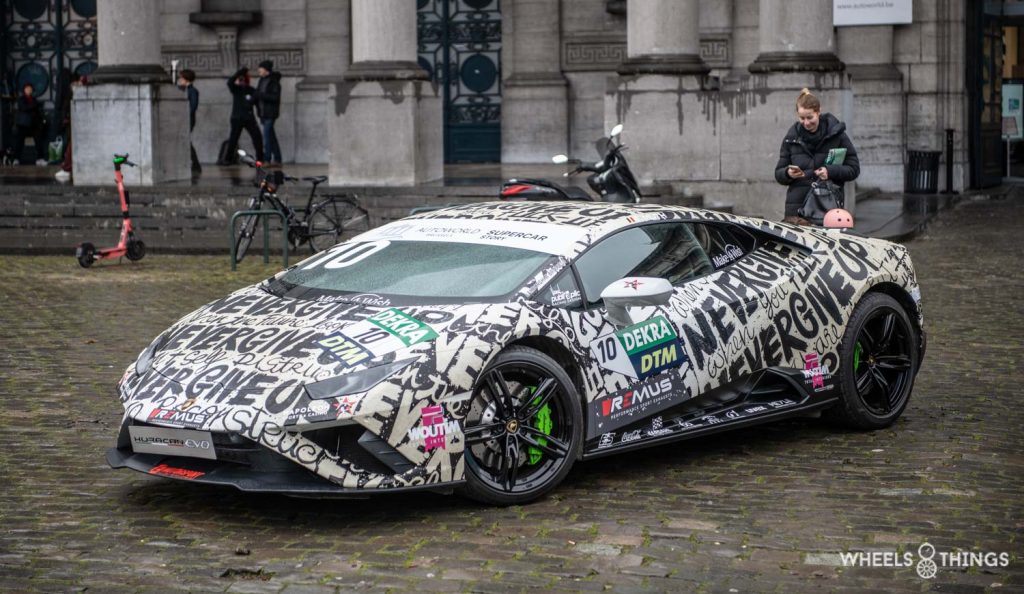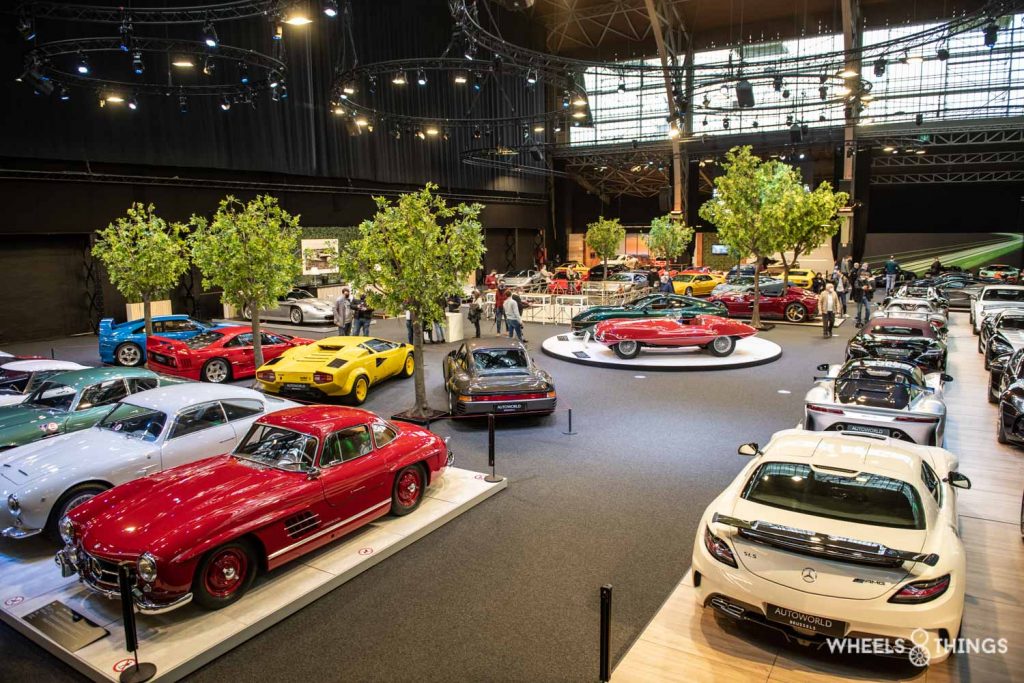
Once a year on average, Autoworld Brussels hosts their ‘big’ expo. And it’s that time of year again, and now they’re taking the Supercar Story to the next level. Perhaps the most expensive collection ever shown at Autoworld. If you visit the exhibition you kill twice with one stone, because the 100 years Francorchamps exhibition is also running.
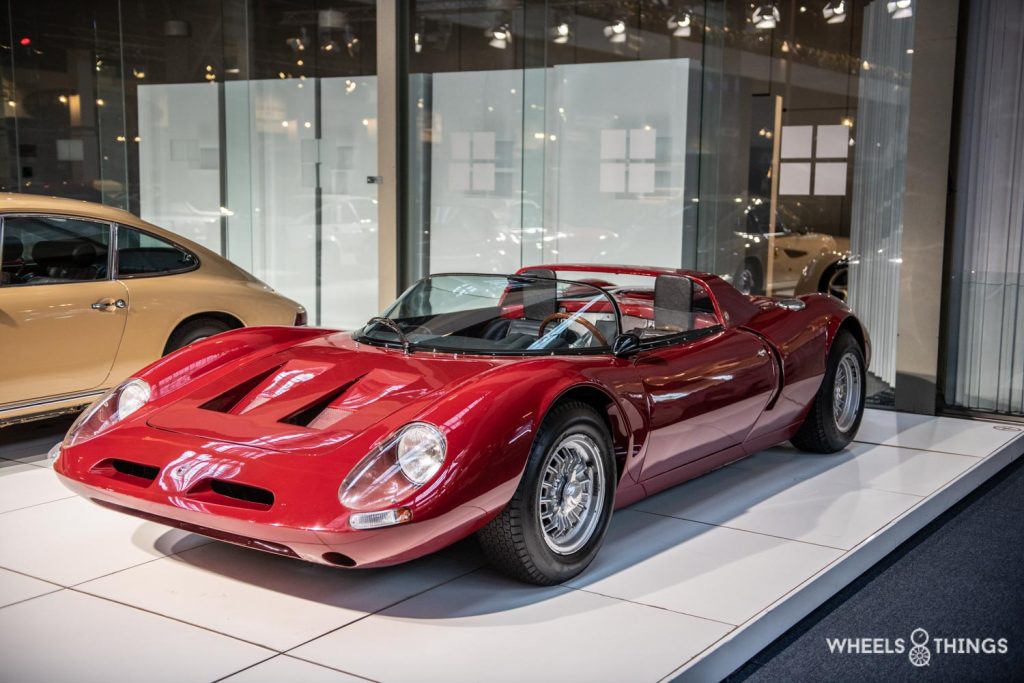
Unique collection
More than 40 exceptional cars can be found here. Most of them are on the top floor, but as soon as you enter, you come across this 1971 Bizzarrini AMX / 3 Spyder. With 560 bhp and a weight of just 1150 kg, we are already in the presence of a solid supercar.
But what exactly is a supercar? The definition according to Wikipedia is as follows: “A supercar (or a super sports car) is usually a two-door coupé or convertible sports car equipped with a high-performance engine. The bodywork has low air resistance. This type of car is generally exclusive and pricey.”
But we think that’s a bit short-sighted. Supercars have actually been around since the 1920s when the term first came up. In the mid-1950s, however, the term became much more tangible when we saw the Mercedes 300SL and the Corvette C1 appear. These were cars with, for that time, exceptional performance that could, in fact, be simply bought.
Ford GT40 & Lamborghini Miura
In the 1960s, we saw the Ford GT40 and the Lamborghini Miura. This Miura with its centrally positioned V12 was a concept which, until then, had been reserved exclusively for racing. By using this configuration in the beautiful Miura, Lamborghini proved that top performance was perfectly compatible with top design.
During the oil crisis (we are talking about the 1970s), the automobile sector was in a slump. Fortunately, designers continued to believe in the concept and thus the 911 Turbo was born at Porsche. Until today an icon and surely the car with which Porsche joined the select group of supercar manufacturers.
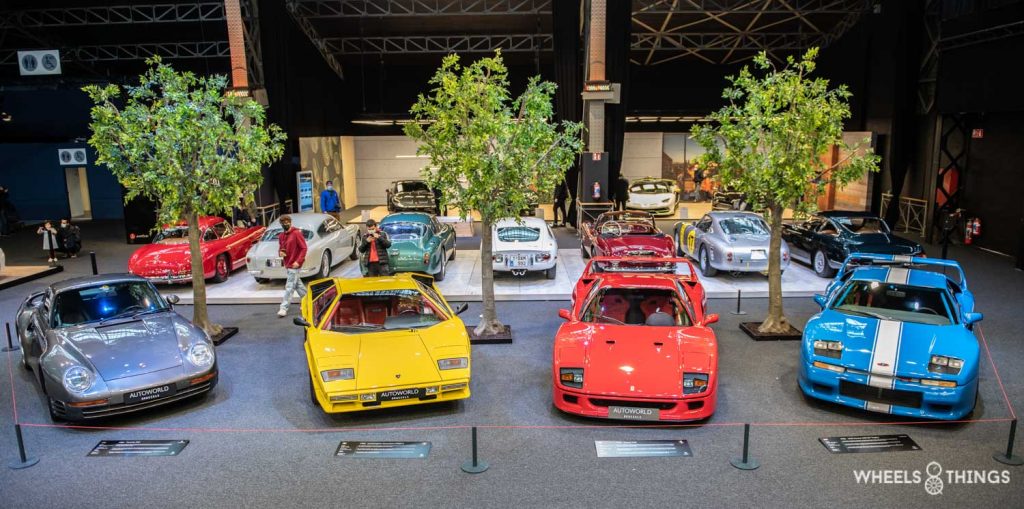
We ask a number of people what they consider to be the best supercar of the 1970s. Think before you read and yes, you too might end up with the Lamborghini Countach. Again, a V12 placed centrally in the back. Now built lengthways. But above all the design left no one cold. For or against, we’ll leave it at that, but it was talked about for sure.
The supercars on display at Autoworld
To describe every supercar on show would lead us too far. I would like to make a selection of the cars that stand out the most for me. In the photo collection at the bottom of the article, you can find almost every exhibited car.
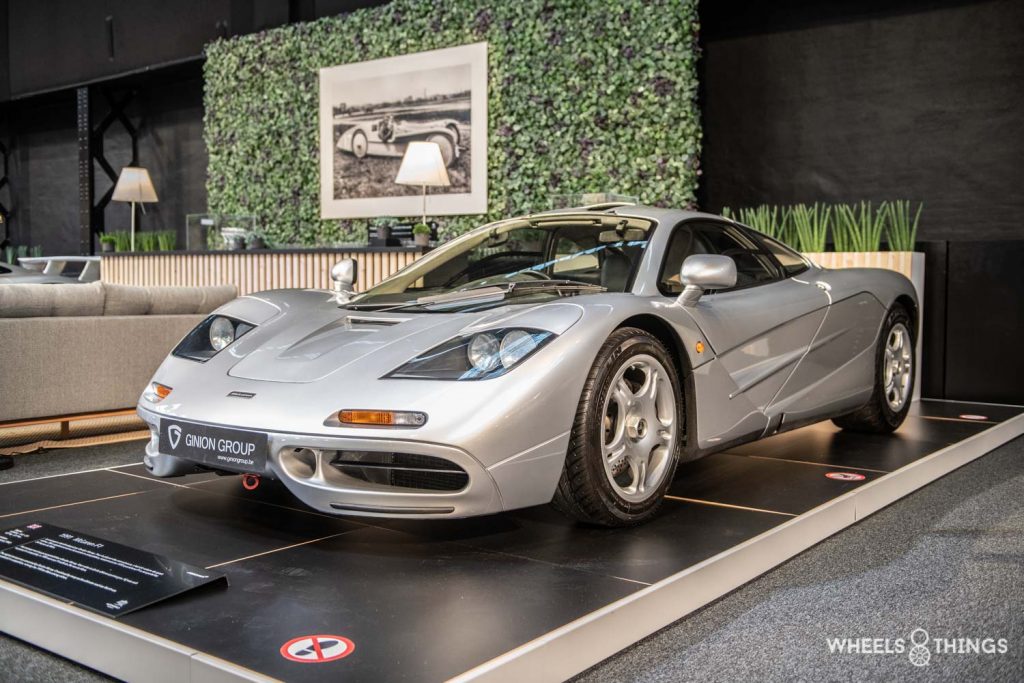
McLaren F1
Allow me to start with the headliner, at least in value. With an estimated value of around 20 million euros, this is the most expensive car on show. The McLaren F1 is also a very special car. For a long time, it was the fastest ‘production’ car with an atmospheric engine in the world. With a top speed of 386.4 km/h, this is probably not surprising. Gordon Murray, who designed the F1, is working on a new project: the T.50. More info can be found in our earlier article.
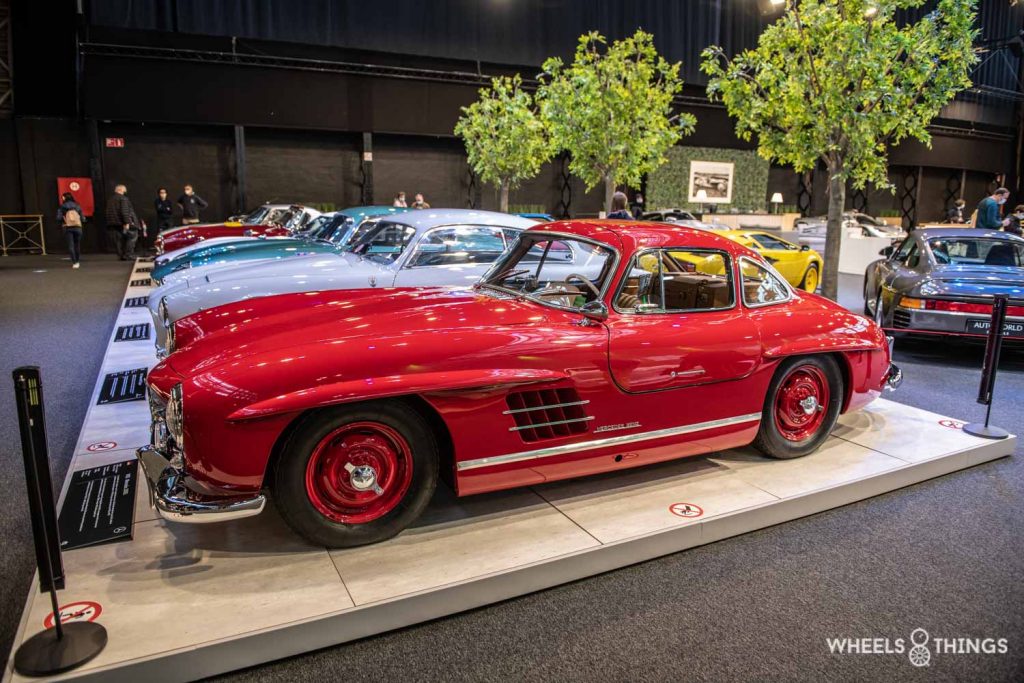
Mercedes 300SL Gullwing
For many, but also for myself, the Mercedes 300SL Gullwing is one of the first supercars ever built. The 300SL was derived from the SLR racing cars with which Sir Stirling Moss won the Mille Miglia in 1955. When we visit classic car shows we often say to each other that there must be a factory somewhere where they secretly build this Mercedes. That’s how often we come across them. However, there are only 1400 of these cars ever built. Quite rare and that is probably the reason why many of them are offered for sale for about a million euros.
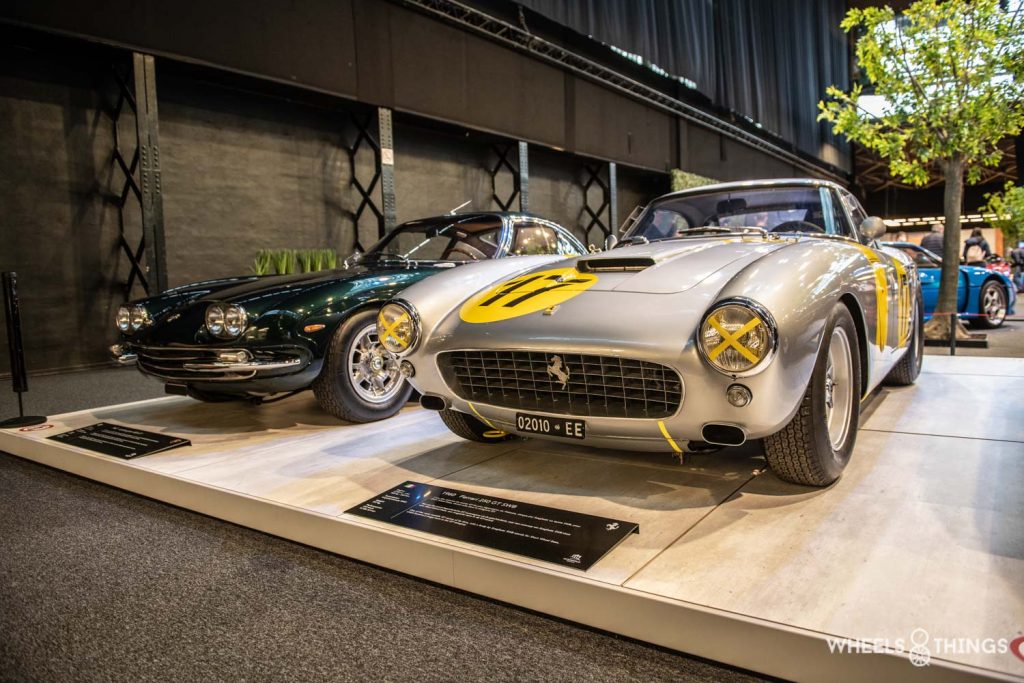
Ferrari 250GT SWB
From the very beginning, Ferrari has been producing cars that make people turn their heads. Whether it’s for the soundtrack produced by the V12 or the stunning design, it doesn’t matter what we look at. When a Ferrari also bears the number 250 it only becomes more exclusive. The Ferrari 250 GT SWB, where SWB stands for Short Wheel Base, is a pure racing car. This example dates from 1960 and was fitted with a 460 hp 3-litre V12 engine.
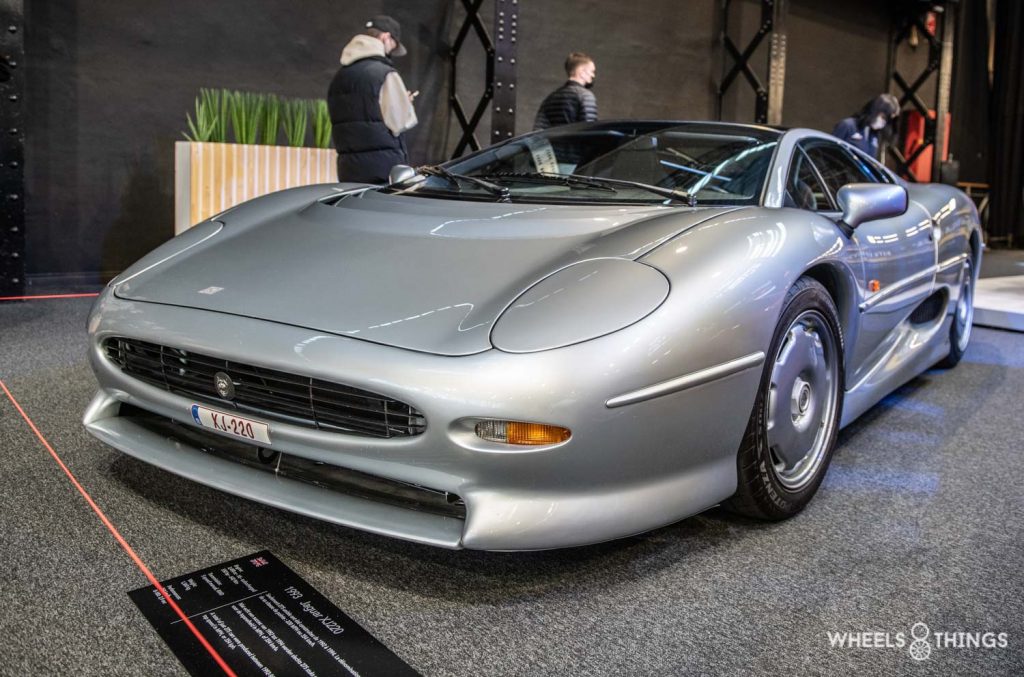
Jaguar XJ220
Many call it a failure, I would not describe it that way but I can understand it. If you, as a manufacturer, promise your top customers a supercar with a V12. And then later they decide to put ‘only a V6’ in it, that might not make purists happy. The car was a flop in terms of sales. Despite the disappointing sales figures, many people still think the XJ220 is a special car. With 550 PS, a 0-100 sprint in 3.9 seconds and a top speed of 354km/h, the XJ220 can easily wear the jacket of a supercar.
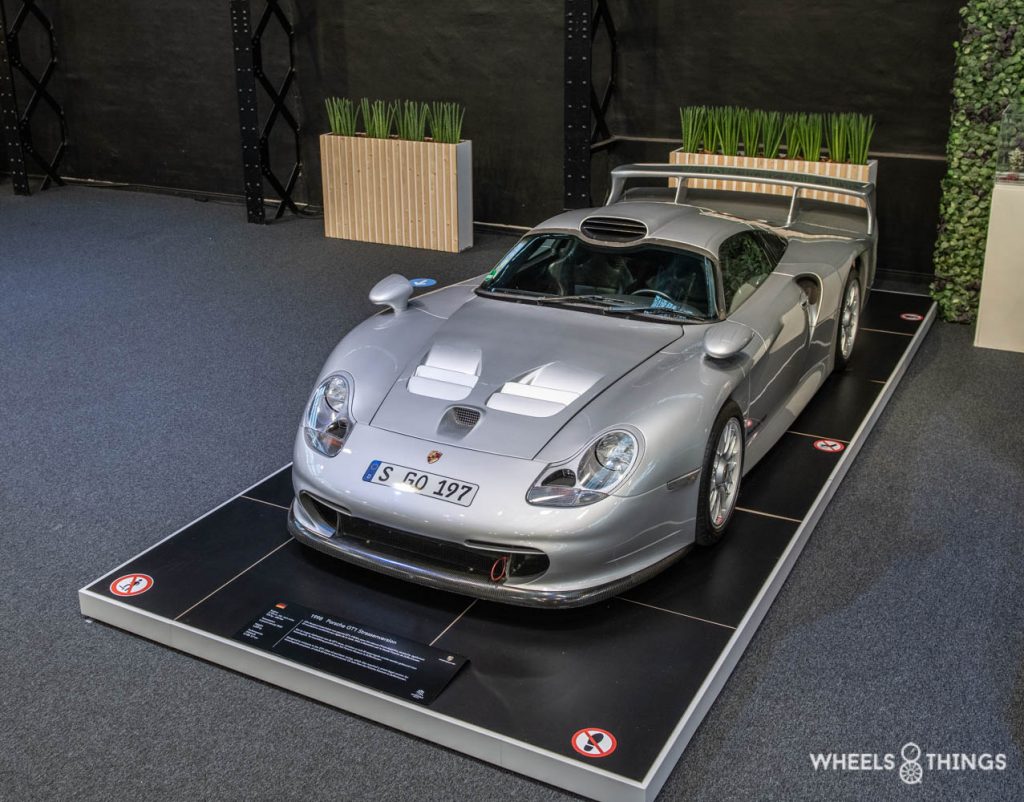
Porsche GT1 street version
With this Porsche GT1 we make a jump in time, to 1998 to be precise. In order to be allowed to participate in GT1 races, a manufacturer must build at least 25 cars for the road. Here we see one of the 25 ever built and this example was made available by the Porsche museum in Zuffenhausen.
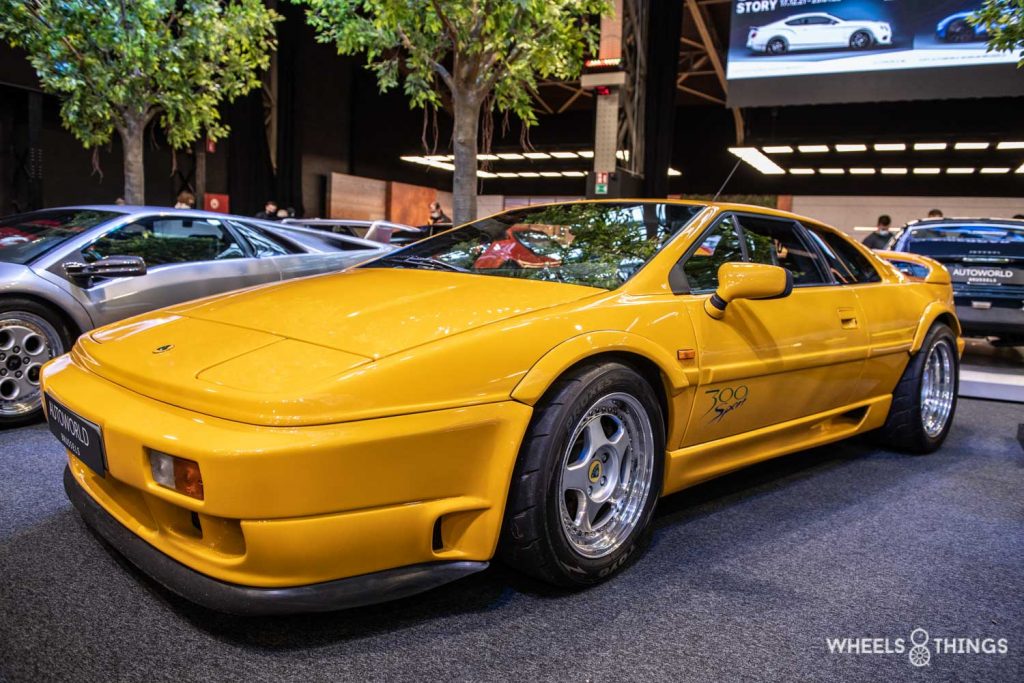
Lotus Esprit Sport 300
A very rare Lotus is shown above. The Esprit Sport 300 is a derivative of the Esprit X180R racer. The 300 refers to the 304 hp that is obtained from a 2.2 litre four cylinder engine. A sprint to 100 takes a mere 4.7 seconds and the beastie runs out of breath at 273 km/h. With only 64 examples built, this Lotus is very rare.
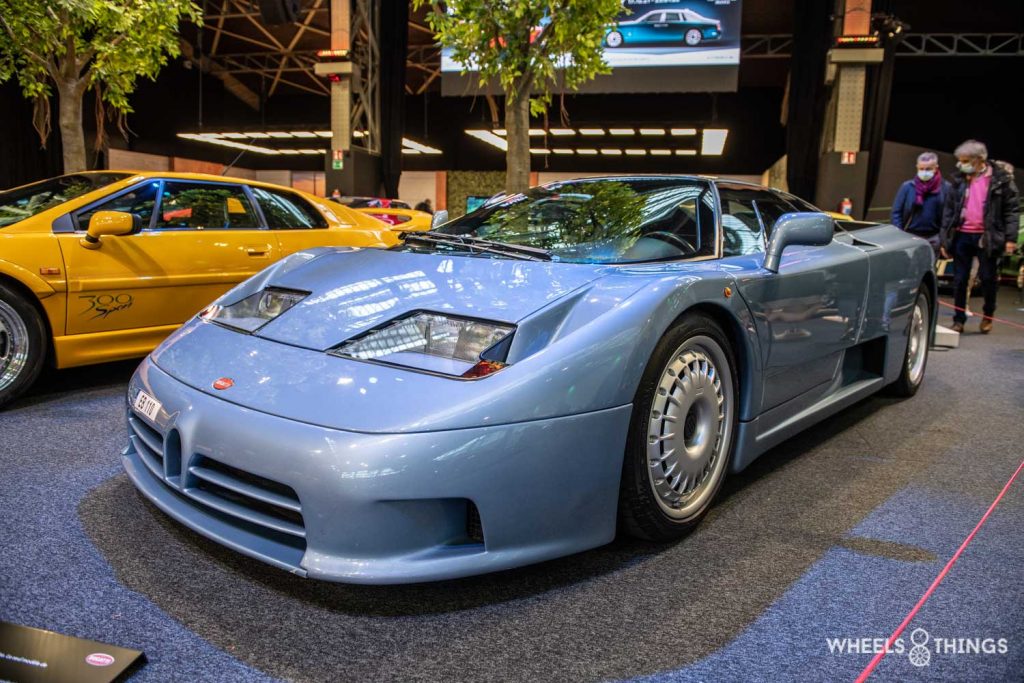
Bugatti EB110
Have you noticed that the 90s are well represented here? The oil crisis had long been forgotten and the available budgets were once again bigger to do something crazy with. Bugatti had disappeared from the scene in 1953 after their Type 101c Antem Coupé. In 1987 the Italian entrepreneur Romano Artioli bought the rights to the brand and founded Bugatti Automobili S.p.A. in Campogalliano Italy. On 15 September 1991, exactly 110 years after the death of Ettore Bugatti, the Bugatti EB110 was presented to the general public at the Place de Défence in Paris. The EB110 would be the only model produced under Artioli. There was another prototype EB112 but it never reached production. From 1998 the Bugatti brand has been owned by the VW group.
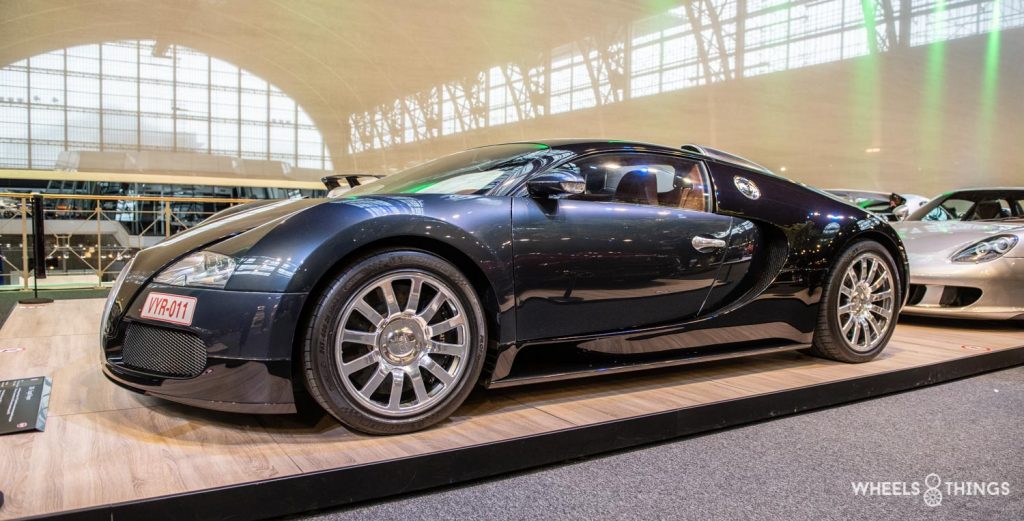
Bugatti Veyron
Let us stay with Bugatti for a moment with the Veyron. This was a prestige project of Ferdinand Piëch, who wanted to use it to launch the first series production car with more than 1,000 bhp on the market. The 8 litre W16 engine has 4 turbos and delivered 1001 bhp in its first version. You could say mission accomplished. Production of the ‘normal’ Veyron ran from 2005 to 2011, and in the four years that followed, the Veyron 16.4 Grand Sport Vitesse saw the light of day. This was an even more powerful version with power ratings up to 1,200 bhp.
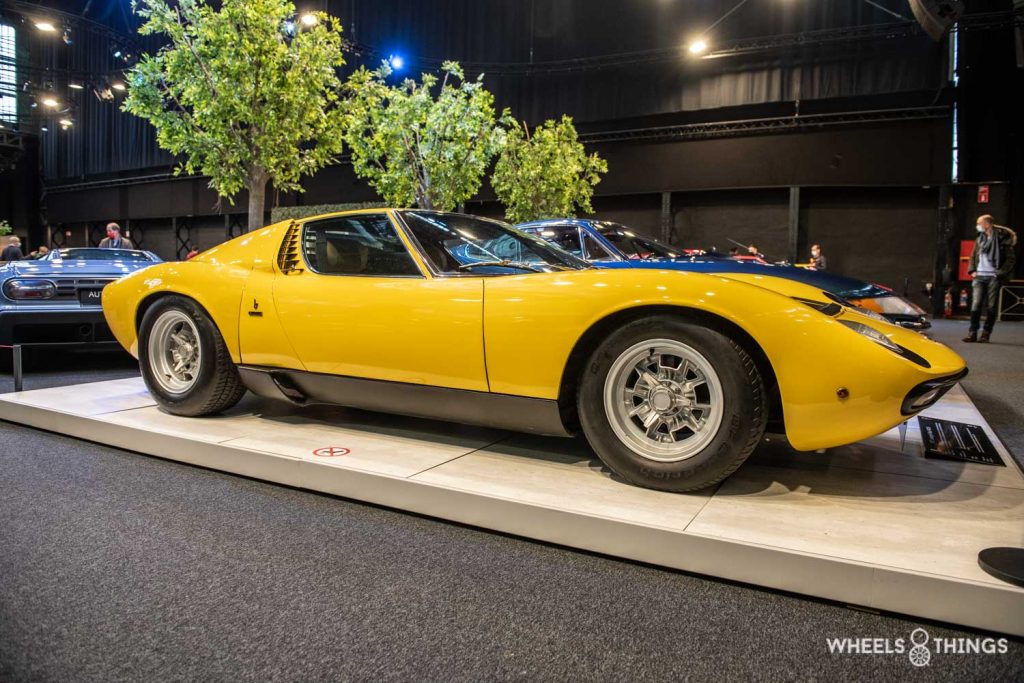
Lamborghini Miura
For many, the most beautiful sports car ever drawn. This Lamborghini Miura P400 SV where SV stands for Super Veloce was the last version of the Miura and was built from 1971 to 1973. The Miura is widely considered to be the first mid-engined supercar. In this case, the V12 was even placed transversely. In its time, it was the fastest production car on the market. The power output of 385 hp combined with the limited weight of 1292 kg made for dazzling performance. The 0 – 100 sprint took just 4.5 seconds, and the top speed peaked at 290 km/h. A total of 764 Miura’s were built, 150 of which were SV’s.
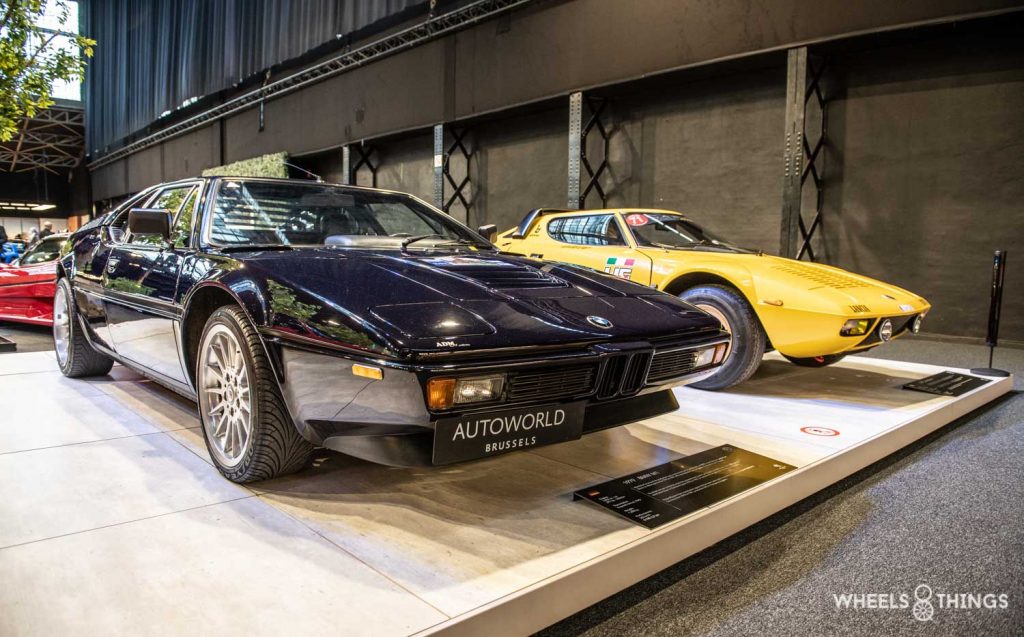
BMW M1
With BMW, the range of supercars is rather poor. The M1 shown here is quite an exception to this rule. The M1 exists in both street and race versions. The M1 is the only mid-engined BMW to date and one of the few cars to have been developed from a race version into a street version. The M1 is also one of the few BMWs to have been built with the help of external partners. Marchesi, for example, provided the tubular chassis and Trasformazione Italiana Resina provided the fibreglass bodywork. Only 453 of the M1 were built, and at least a few of them were lost during the races. It makes this M1 and the BMW 507 on display here among the rarest and most valuable BMWs.
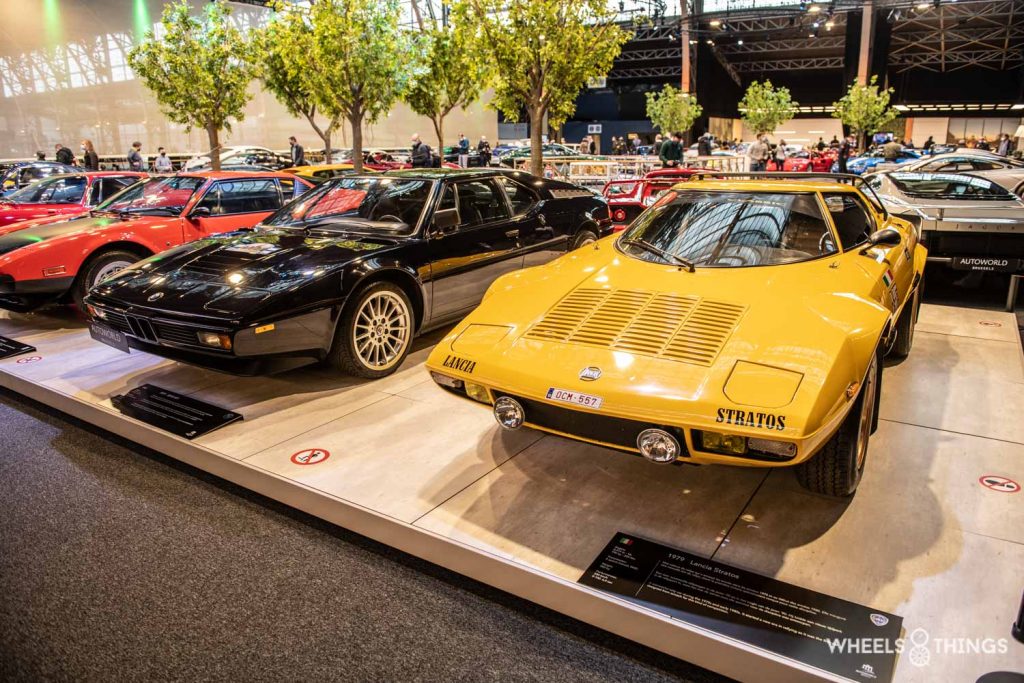
Lancia Stratos HF Stradale
The Lancia Stratos is a car specially developed for racing. It had a mid-engine which it borrowed from the Ferrari Dino. This compact V6 produced 190 hp. The Stratos was the start of a new era, because it was the first car developed specifically for rallying. The strategy appeared to work because the Lancia Stratos won the 1974, 1975 and 1976 World Rally Championship. At a later stage a road-going version was also produced, like the model shown here, which received the addition Stradale in its name. The power was reduced as the rally version had 275 to 320 hp.

Ford GT40
The exhibition would not be complete without the Ford GT40. This iconic car gave Ferrari sleepless nights. After a failed takeover attempt, Henry Ford II had taken it upon himself to beat Ferrari on their own terrain: the 24 hours of Le Mans. And they did so not once but four times in a row from 1966 to 1969. The 40 in the name stands for the height of the car, which was 40 inches or 102cm high. If you want to see more of the battle between these two titans, be sure to watch the film that was made about this in 2019.
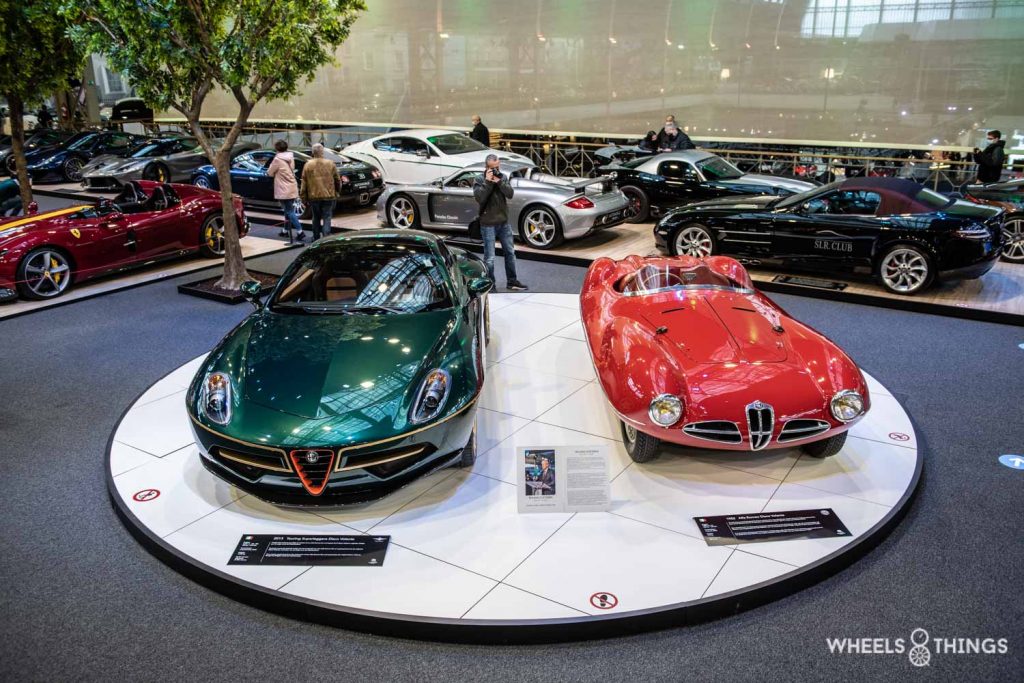
Even more, much more
We saw an Alfa Romeo Disco Volante, a Ferrari F40 & F50, a Bizzarrini, a Porsche 959, an Aston Martin One77, a Bentley GT3 R, a Mercedes SLR and it doesn’t stop there. The collection on display is simply impressive.
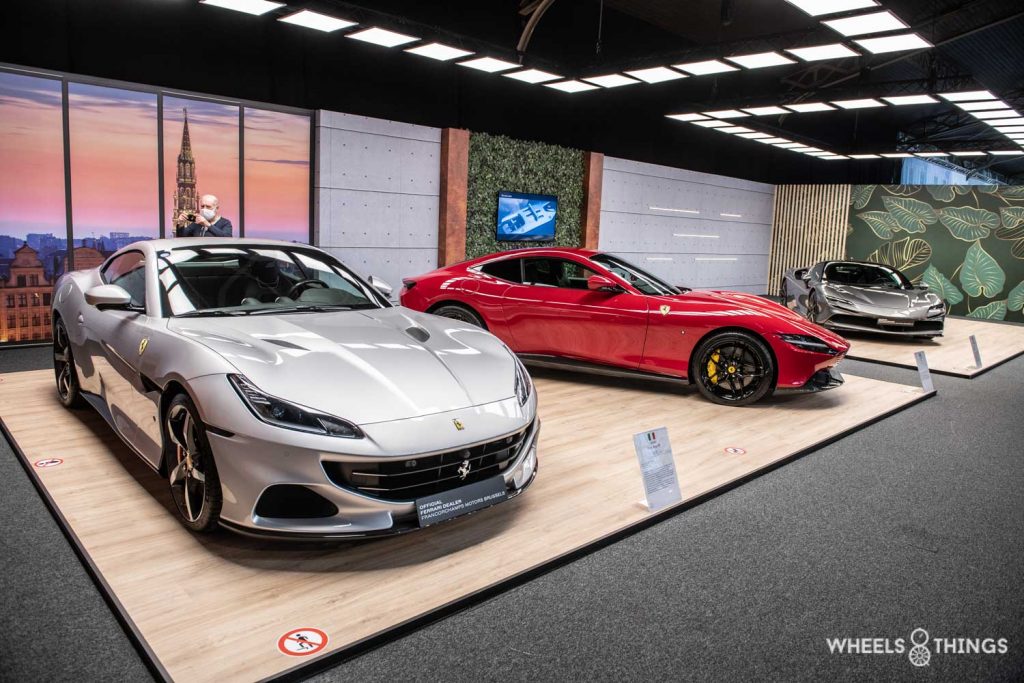
There were also Black Boxes supplied by the two main partners. D’Ieteren Group and the Ginion Group. Both showed here their latest supercar models. We saw among others the Ferrari Roma, the Ferrari Portofino M and the Ferrari SF90 Stradale.
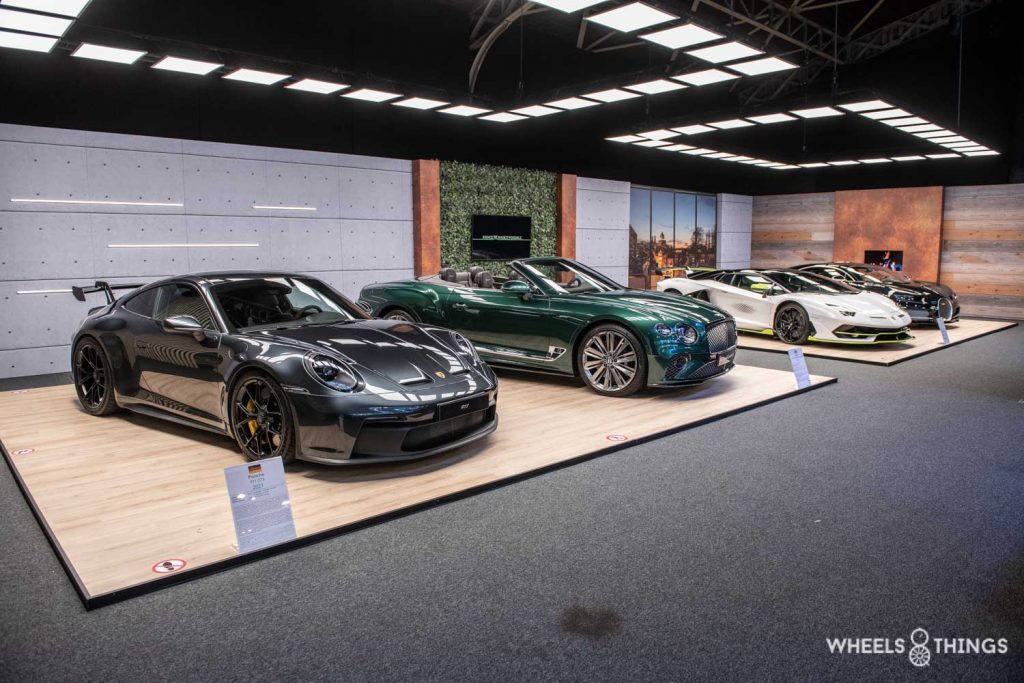
Actually, these are more Hypercars than supercars like a Bugatti Chiron Sport, a Ferrari LaFerrari, a Lamborghini Aventador SVJ Roadster Xago Edition and a Porsche 911 GT3.
Report & photos: Patrick Verheeken
